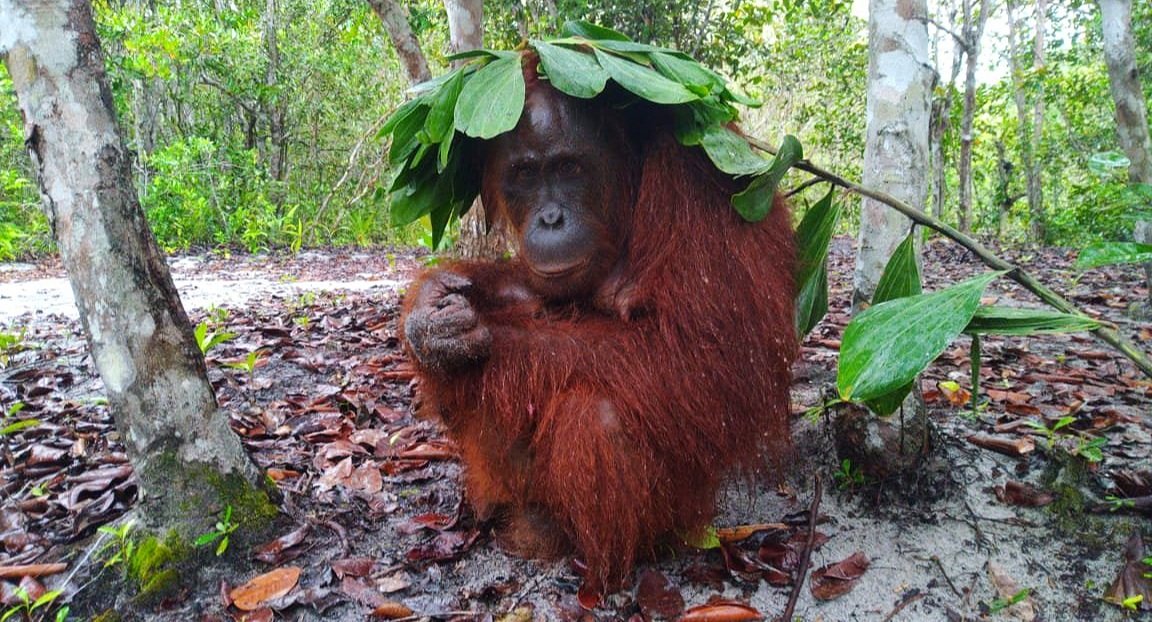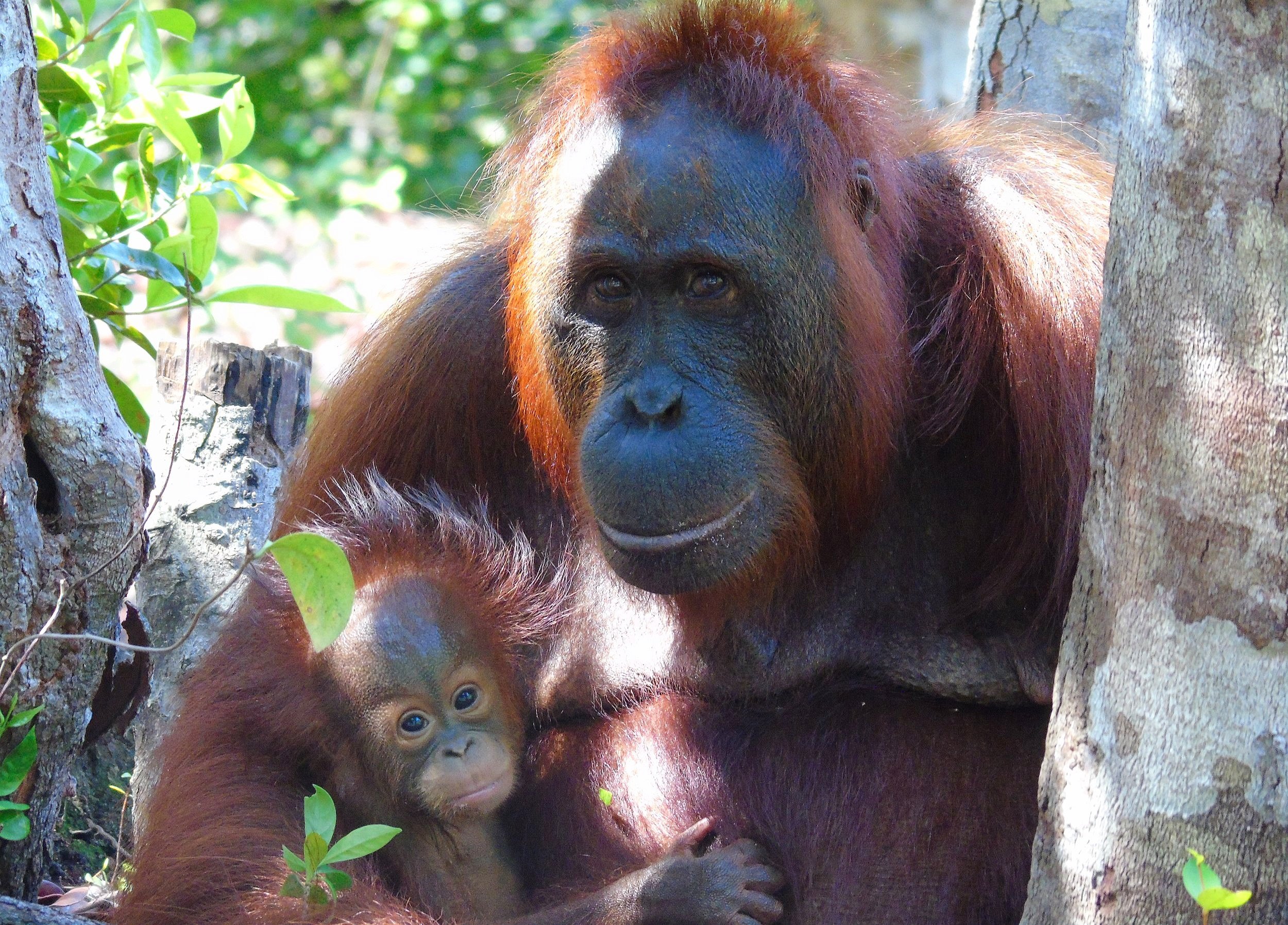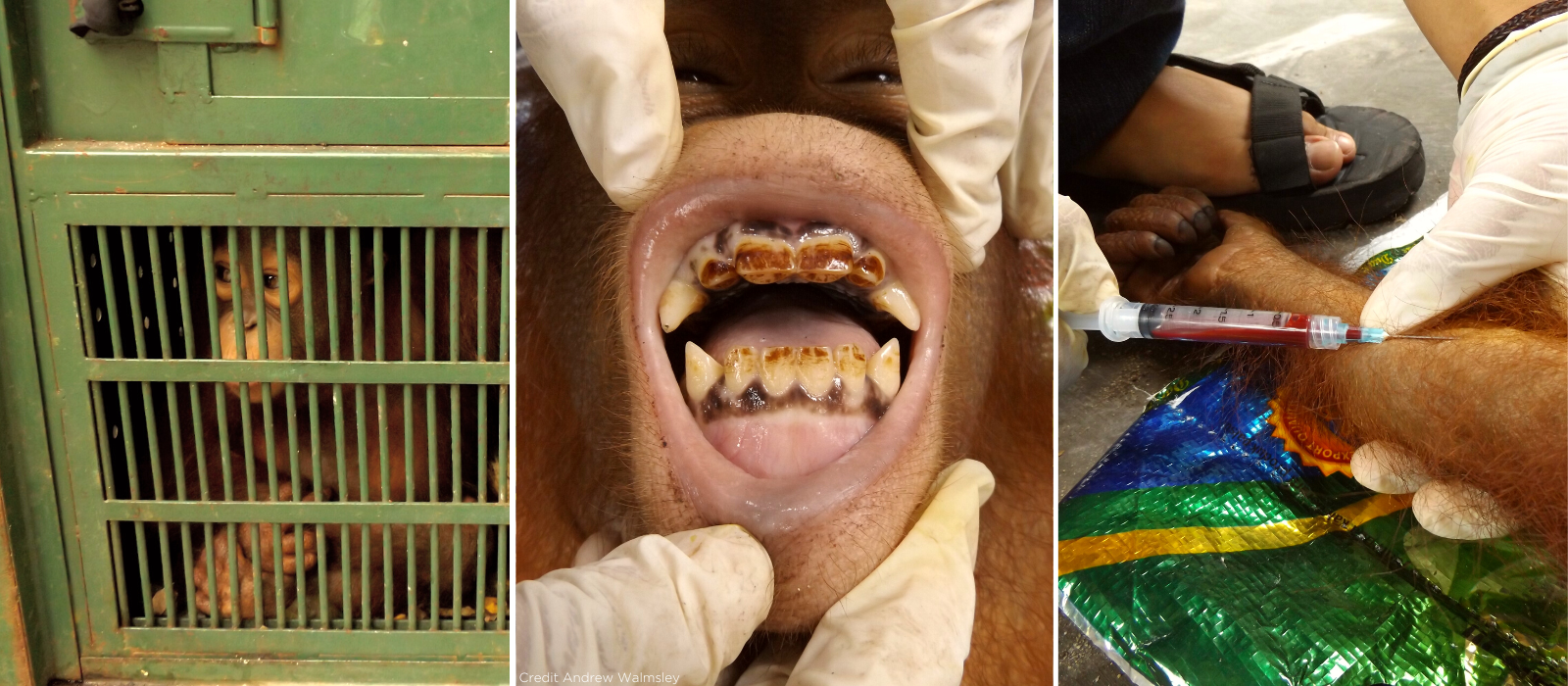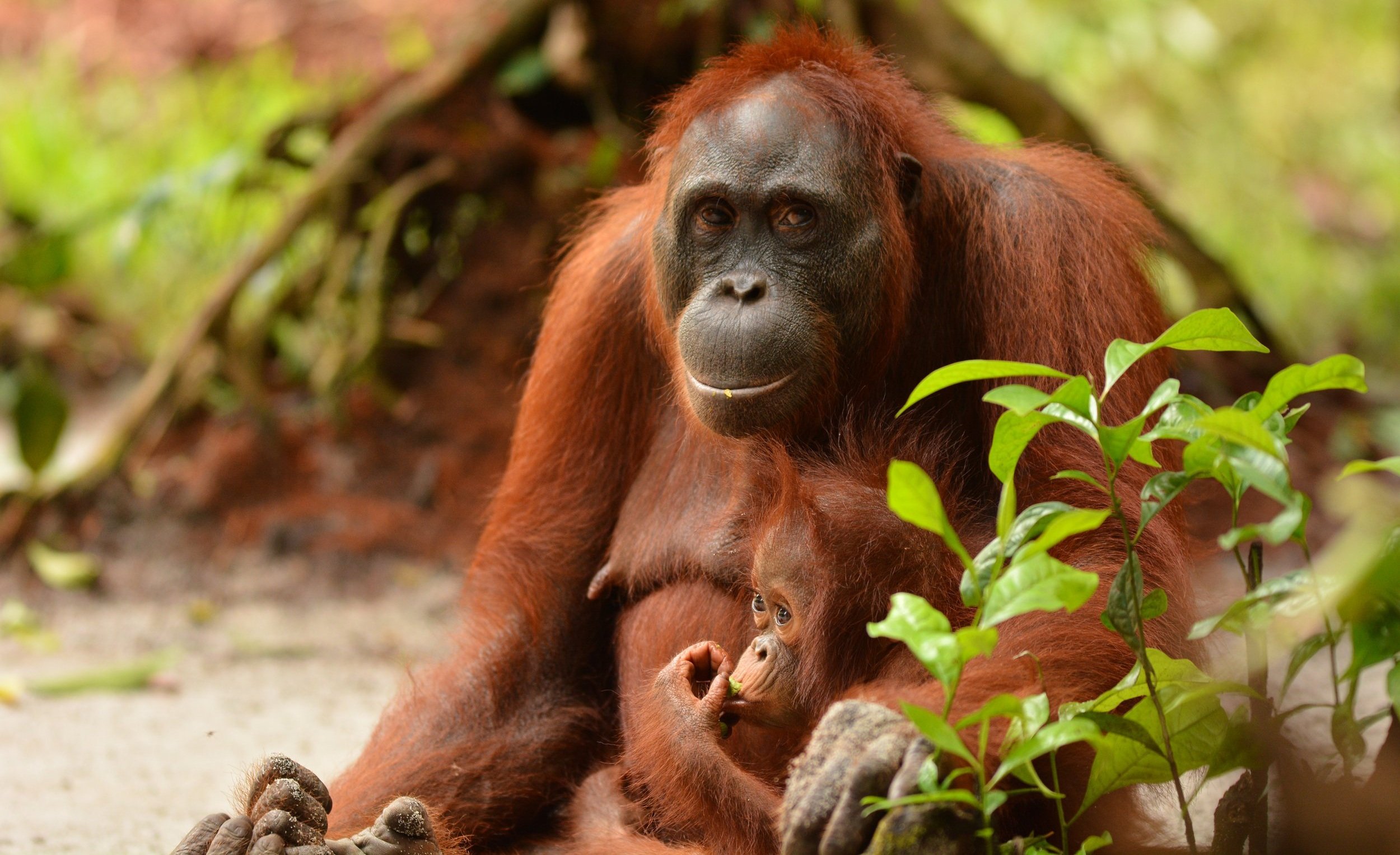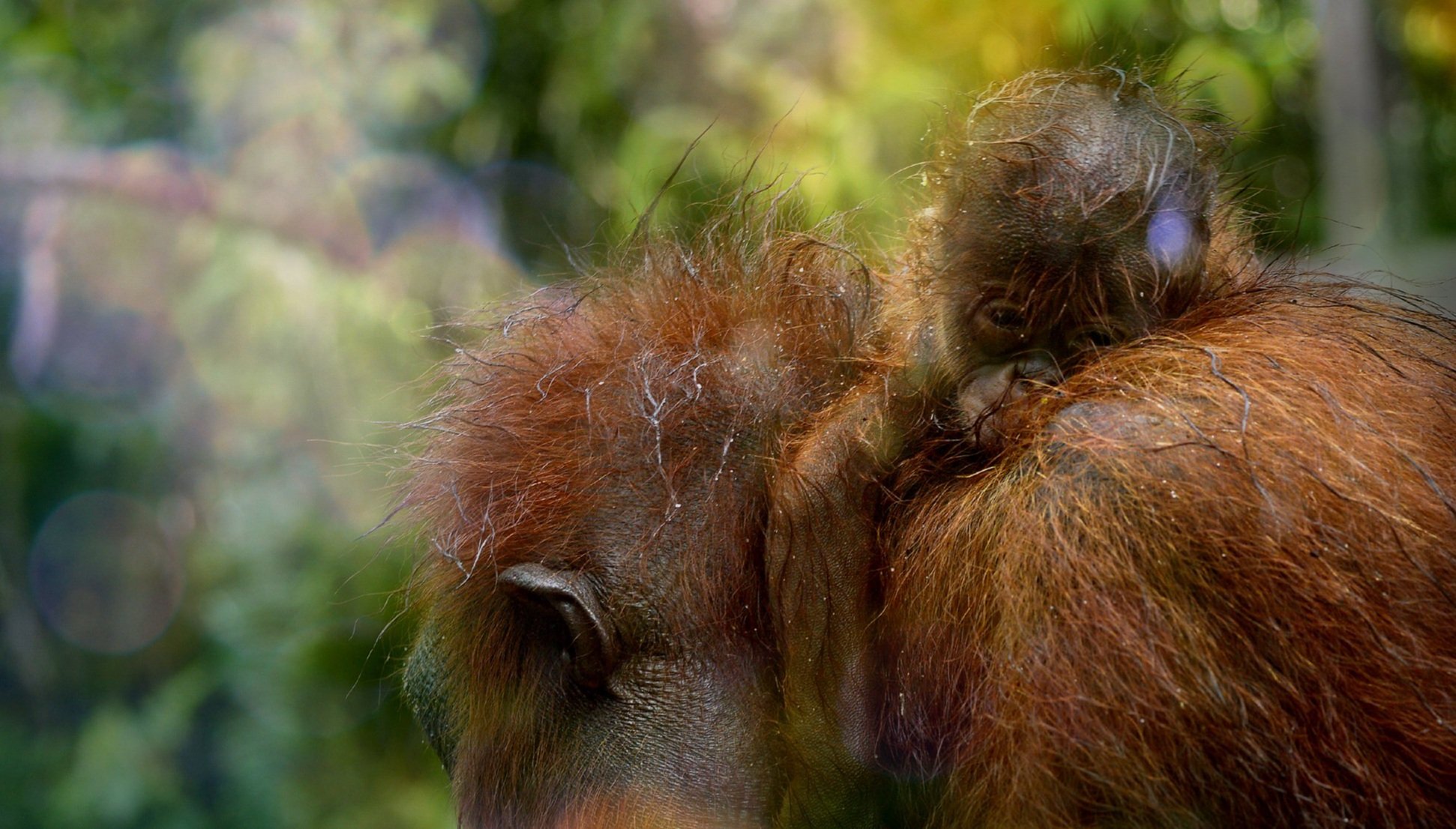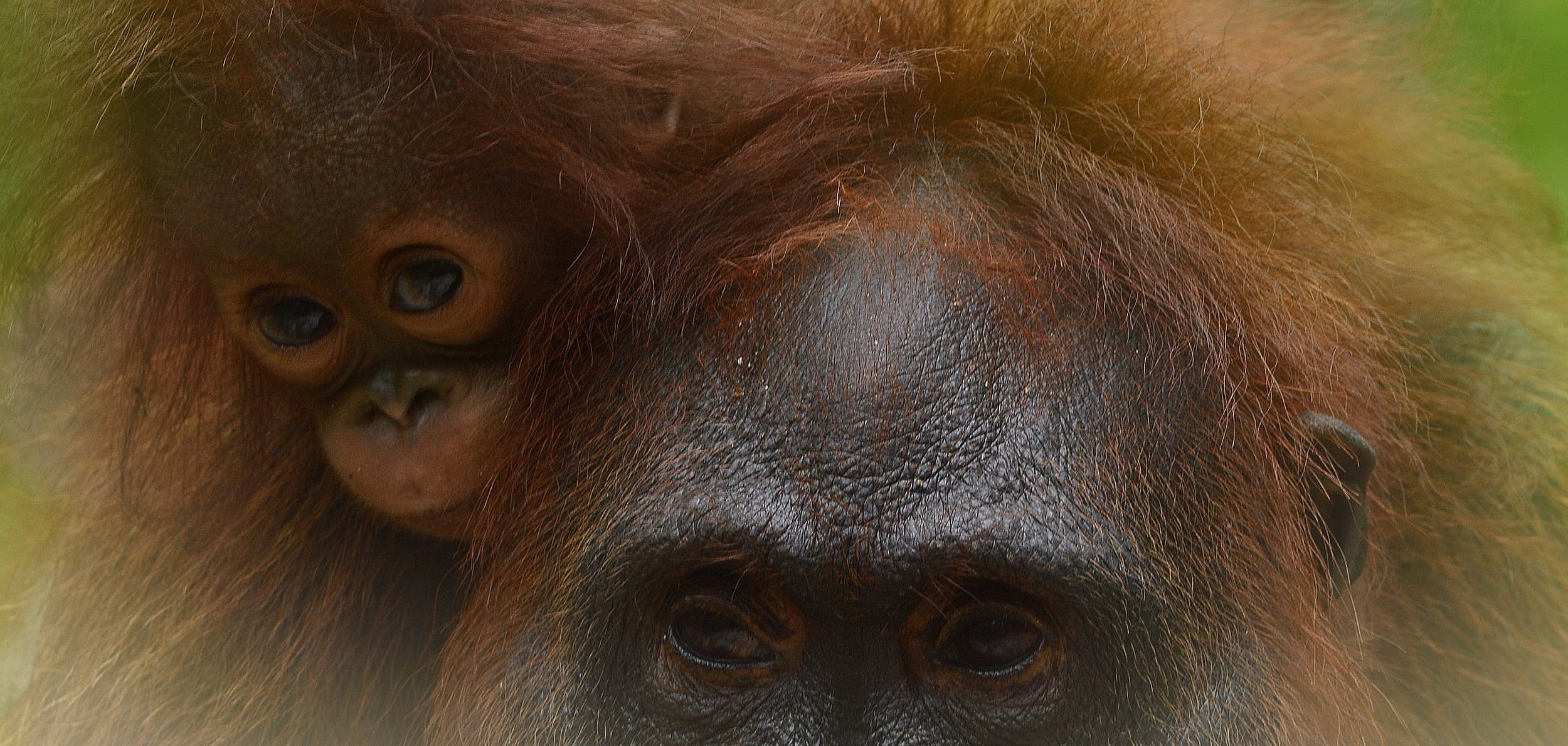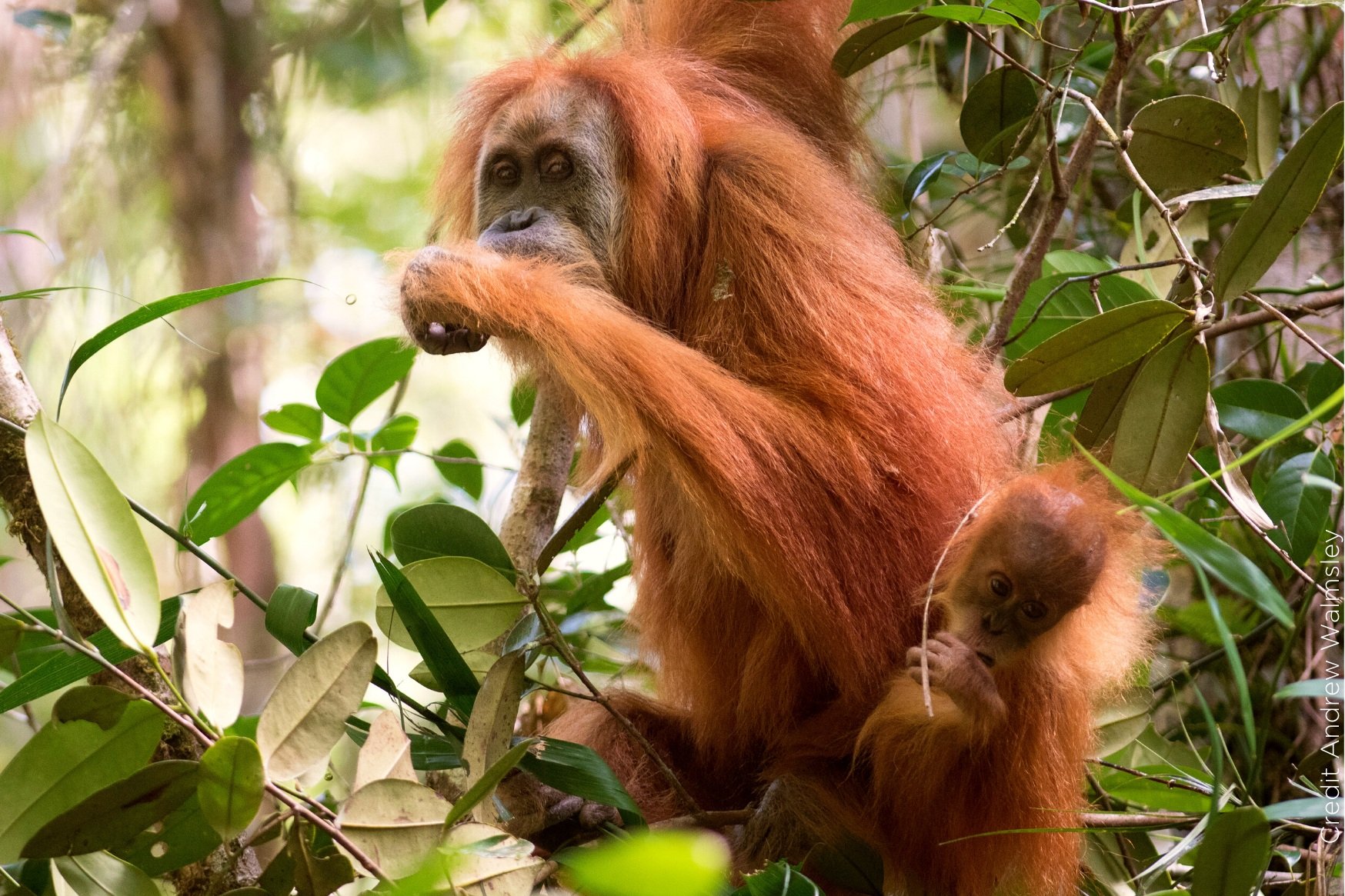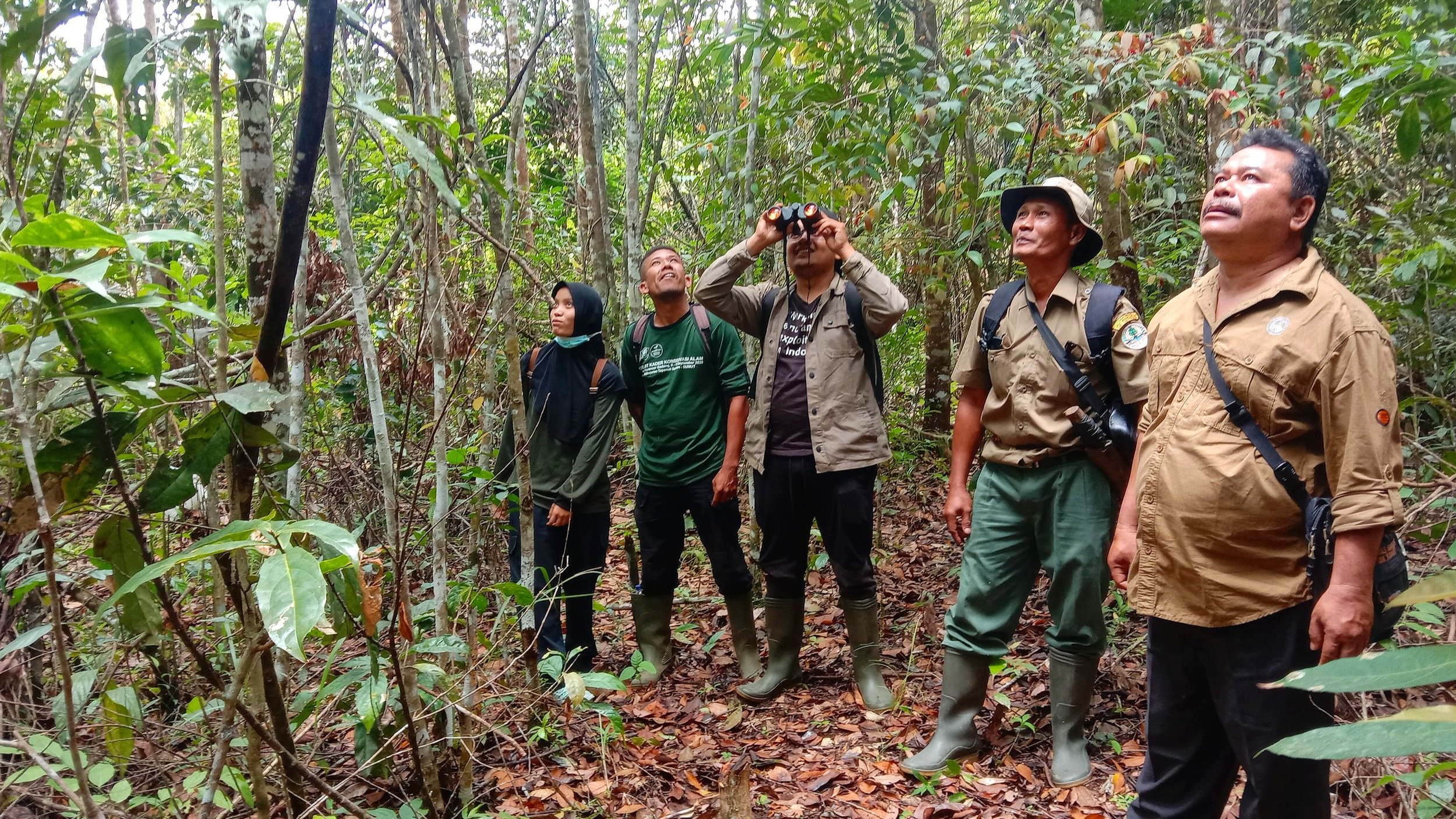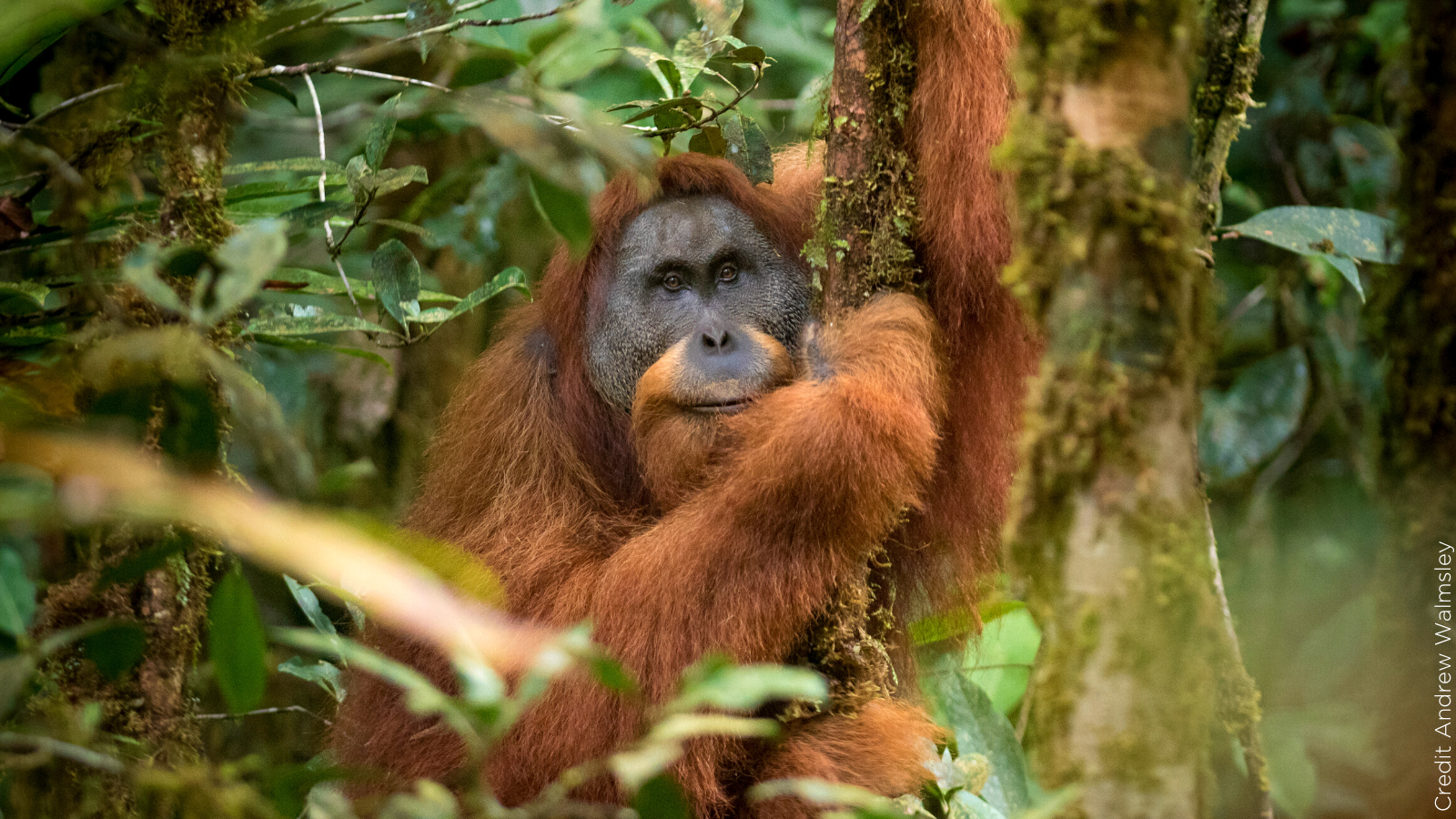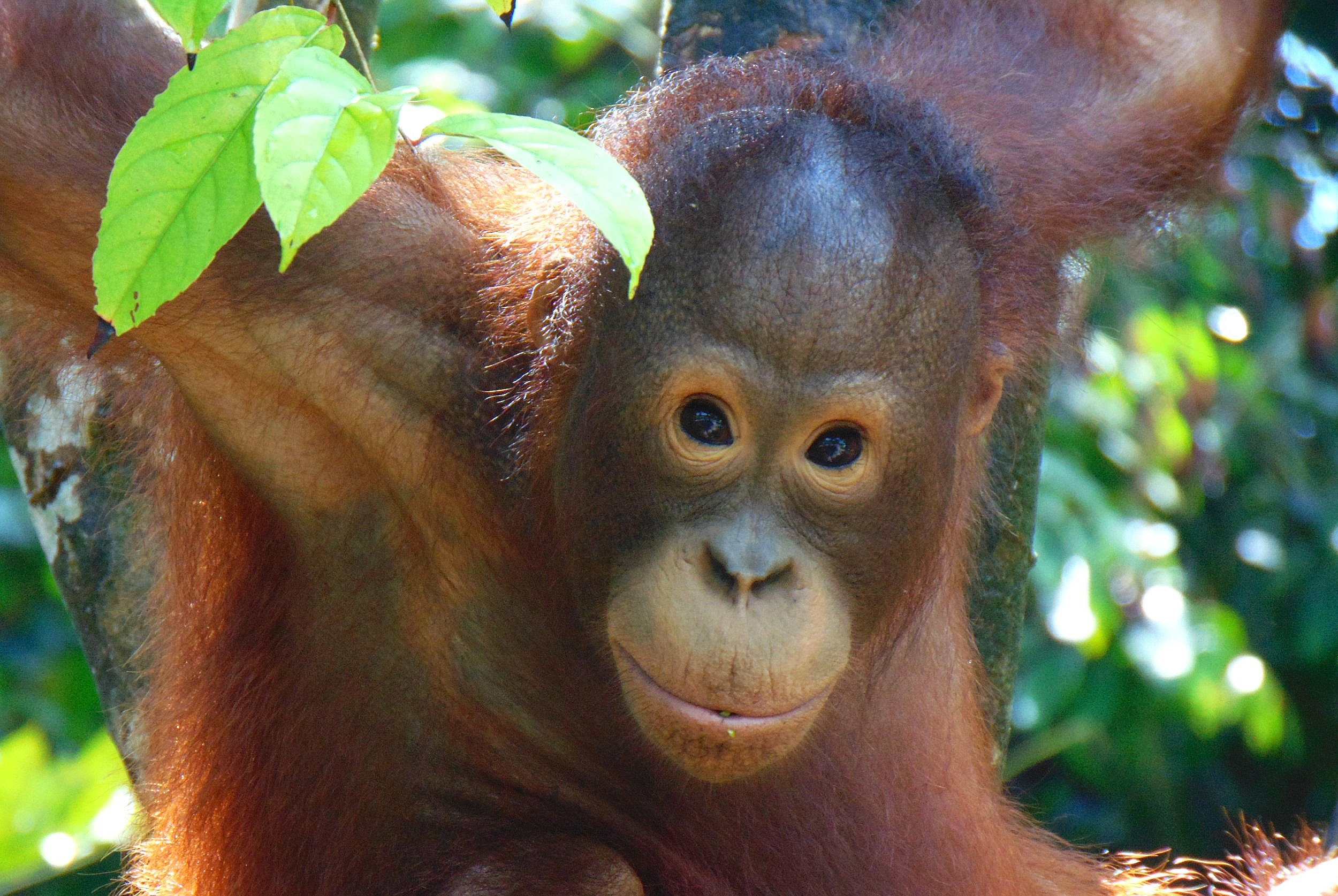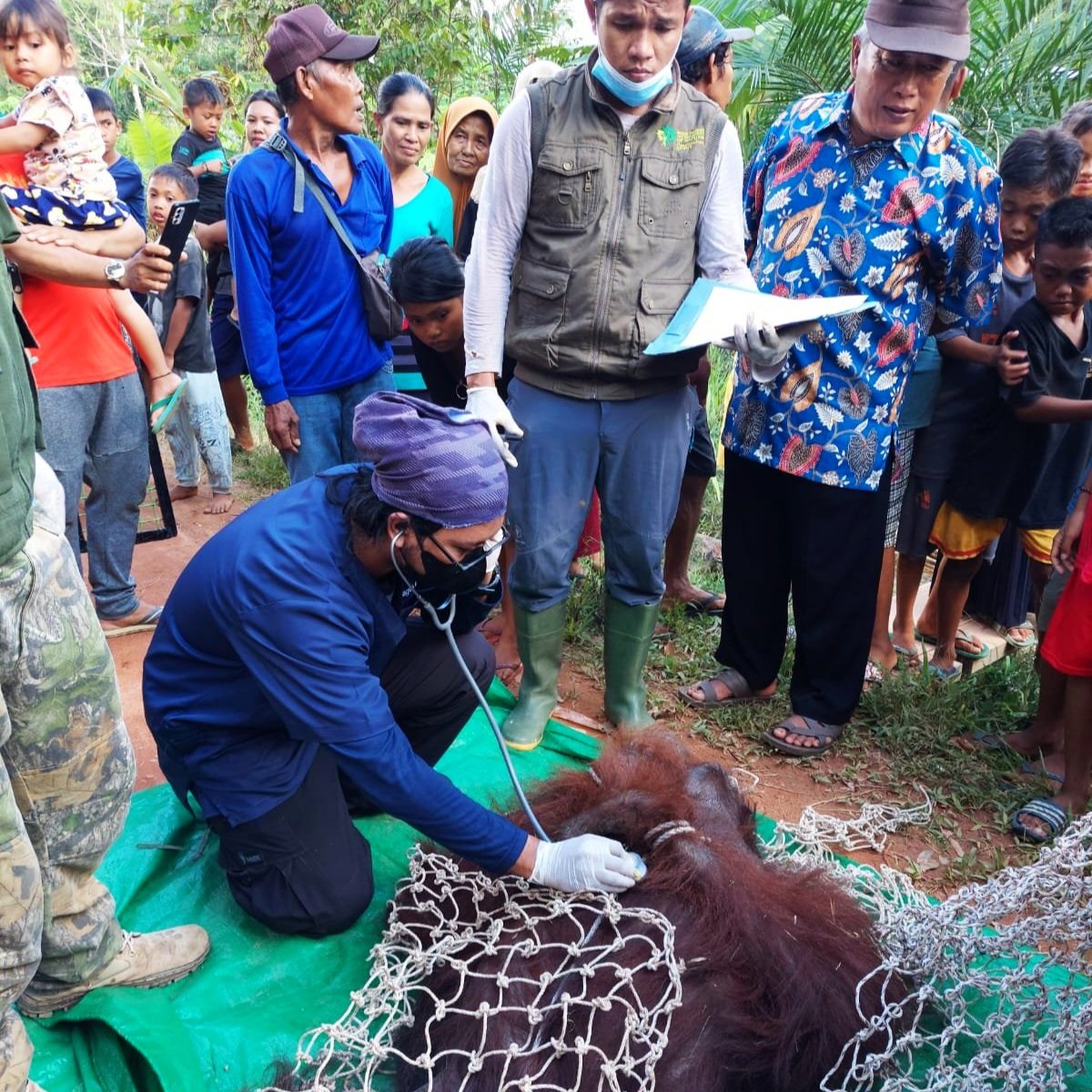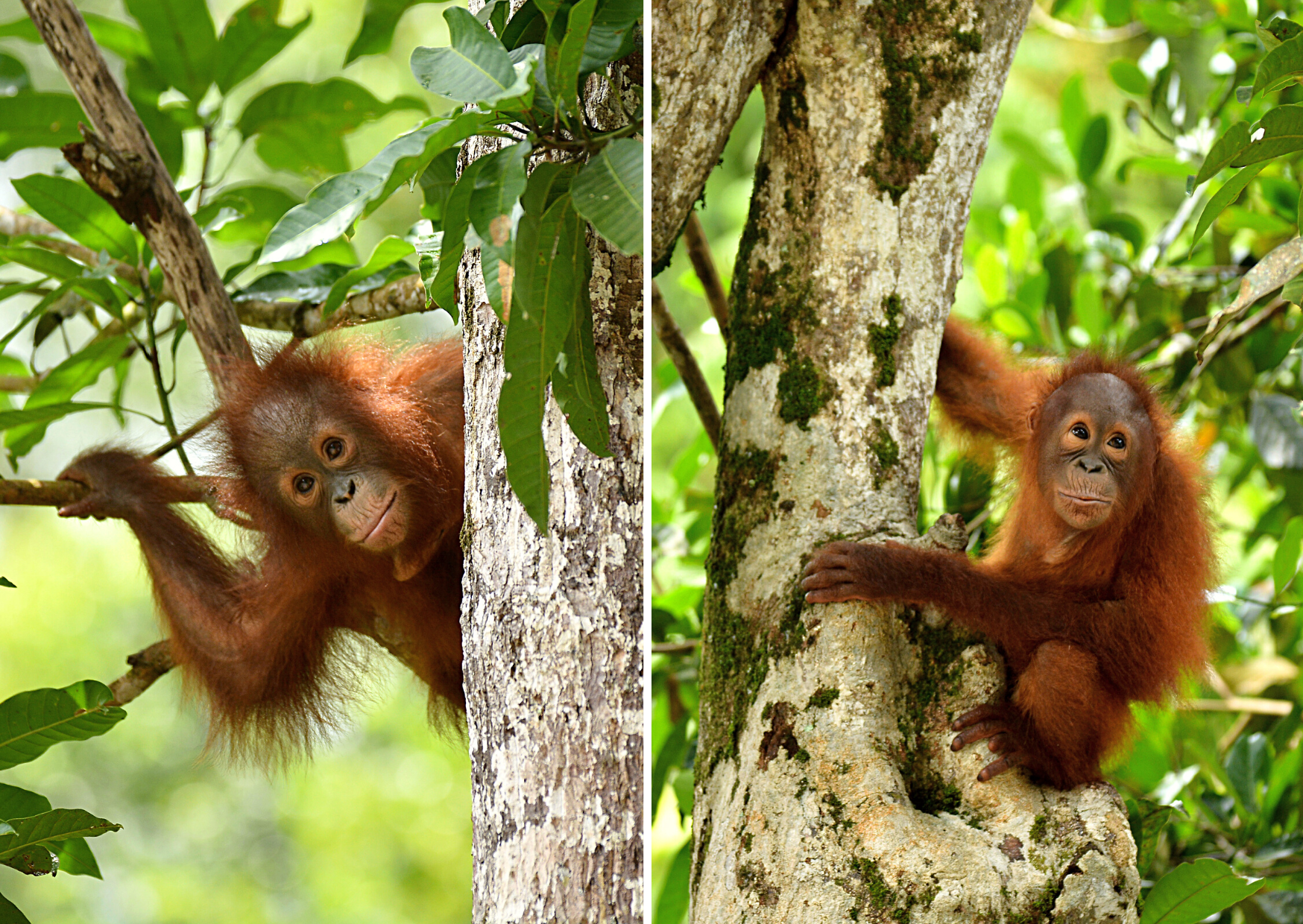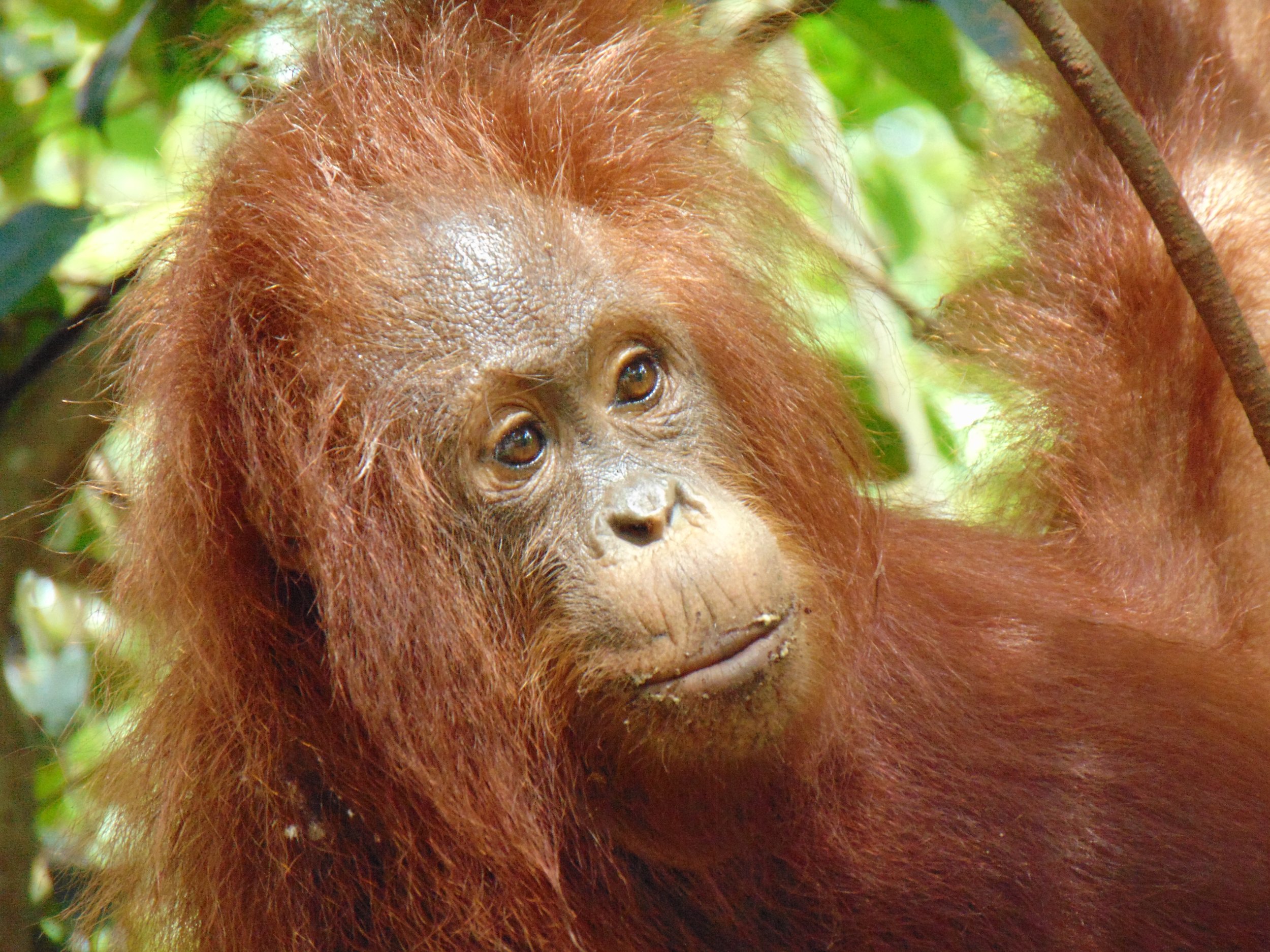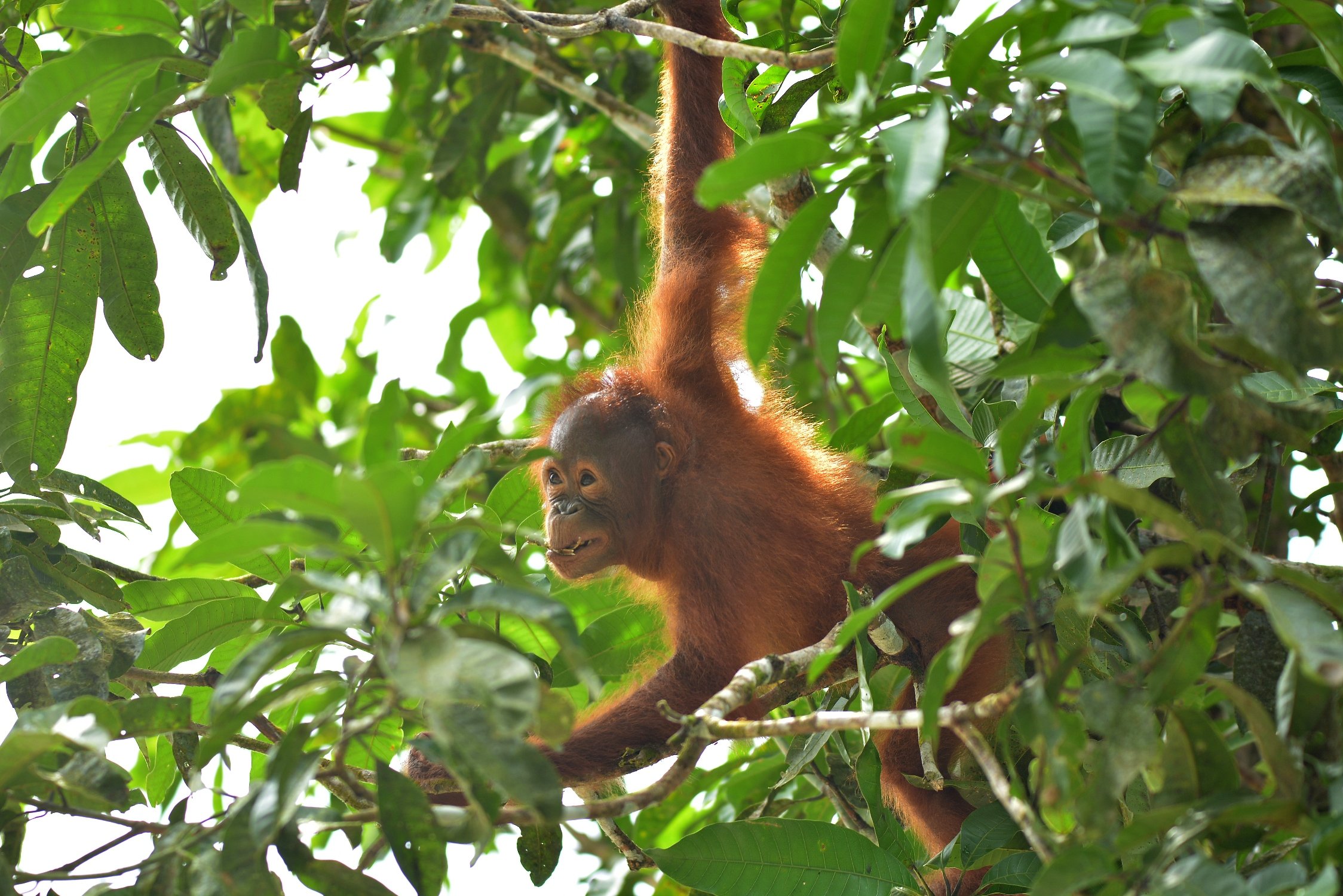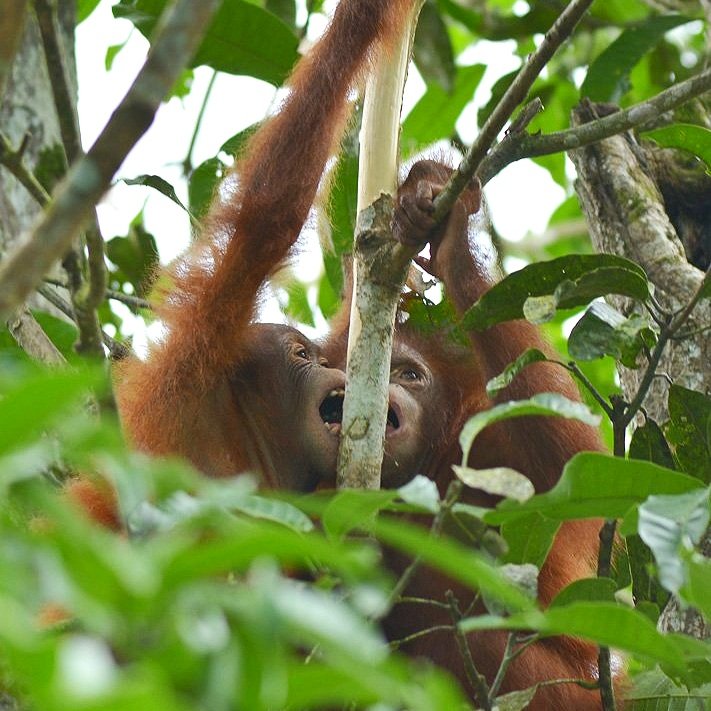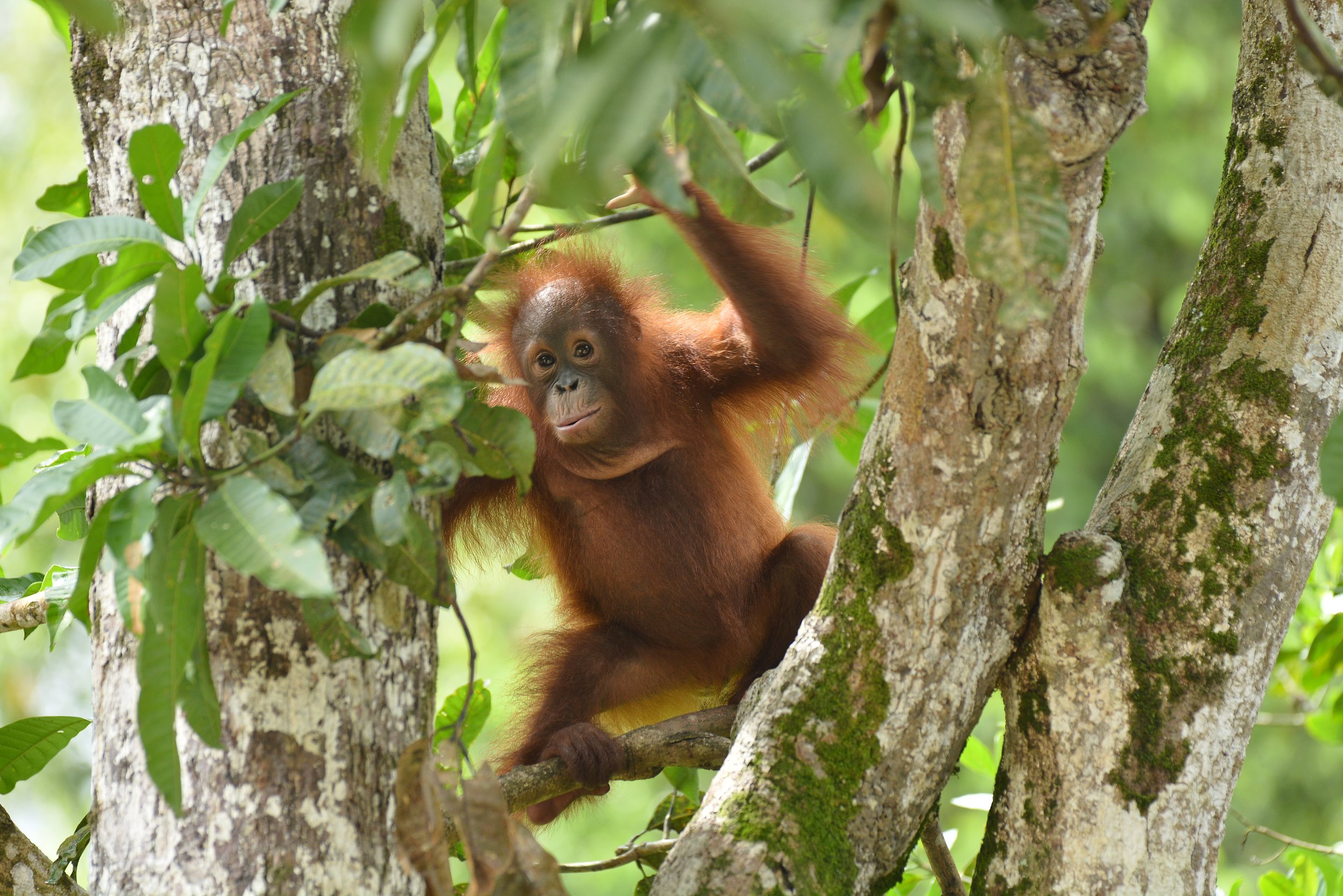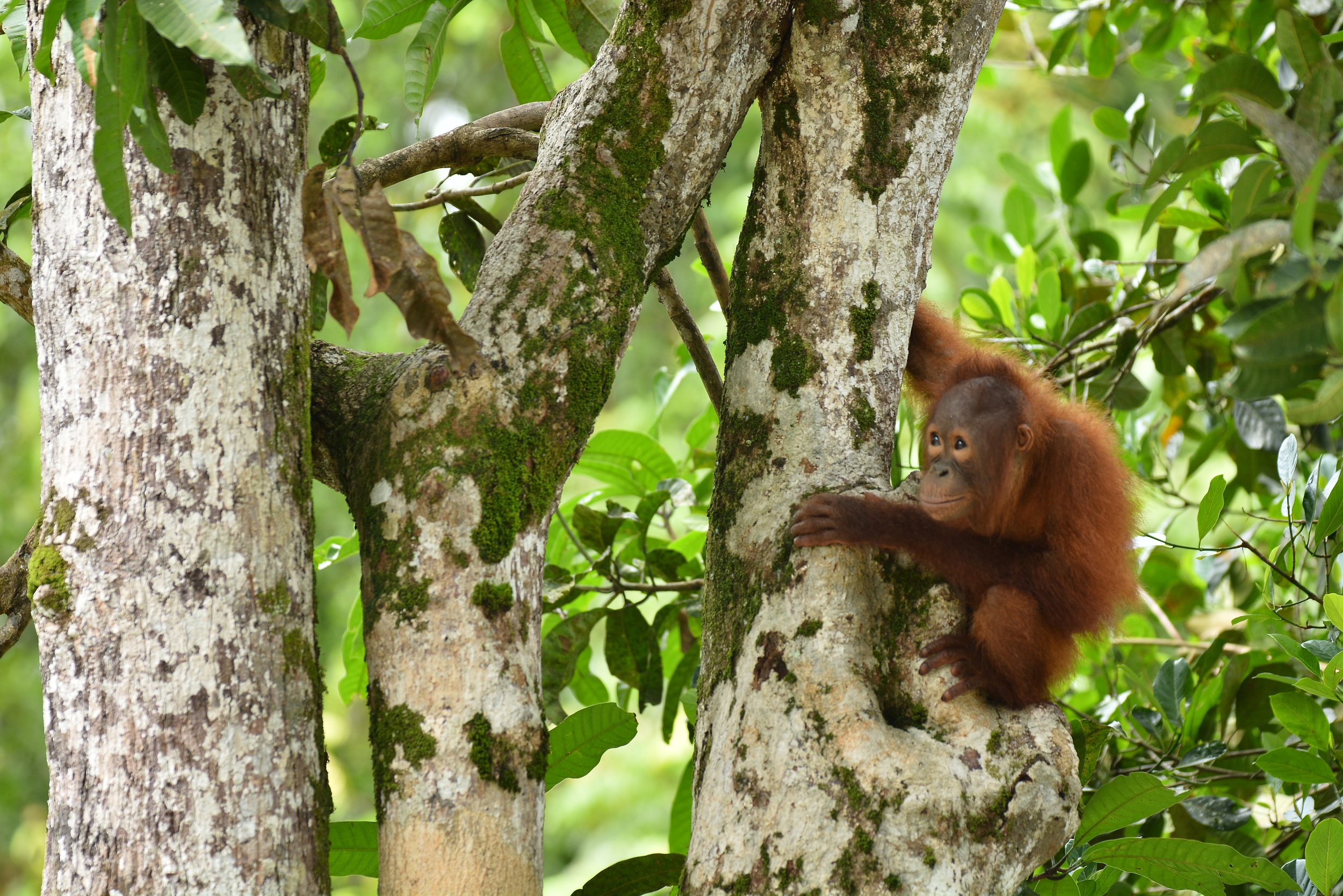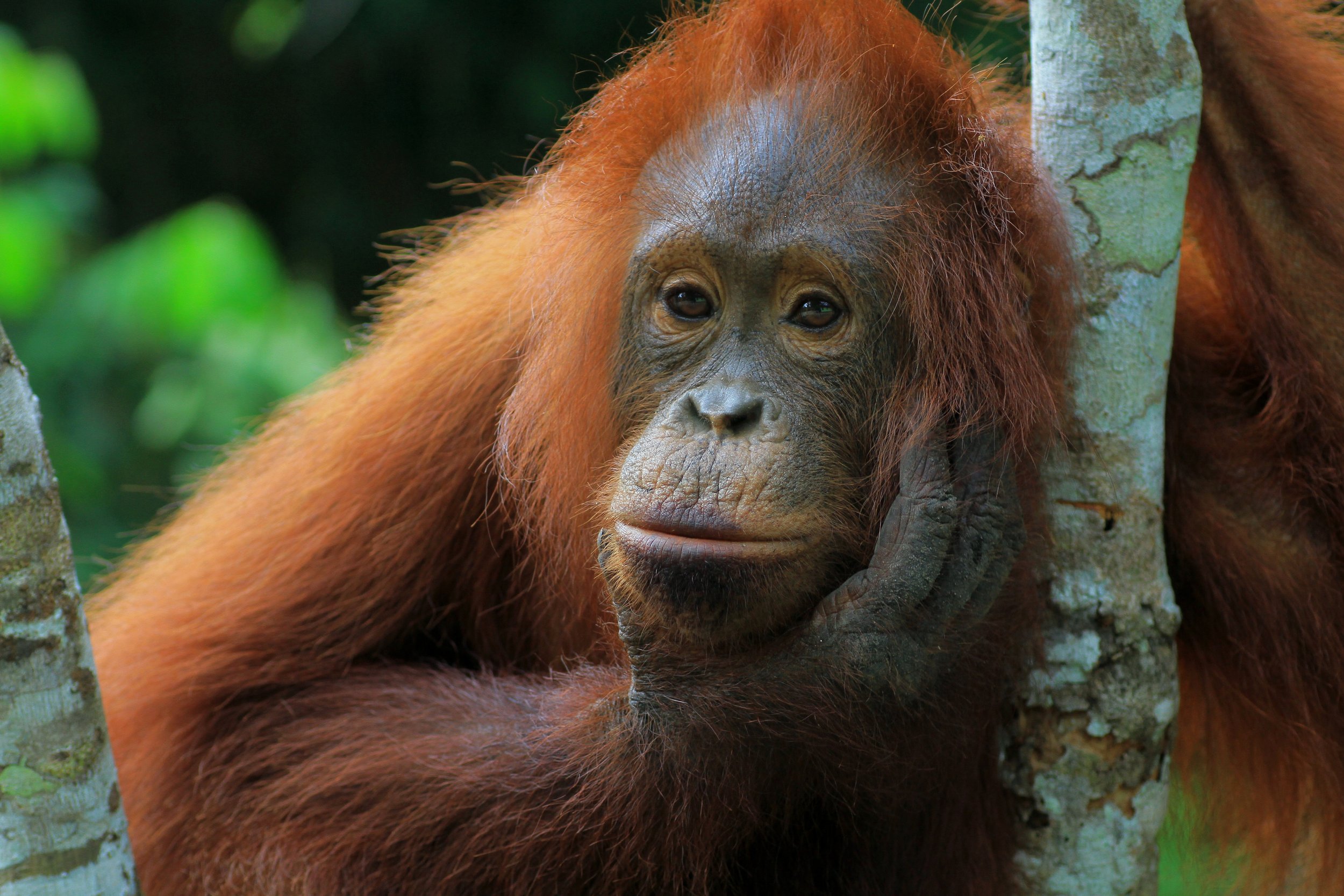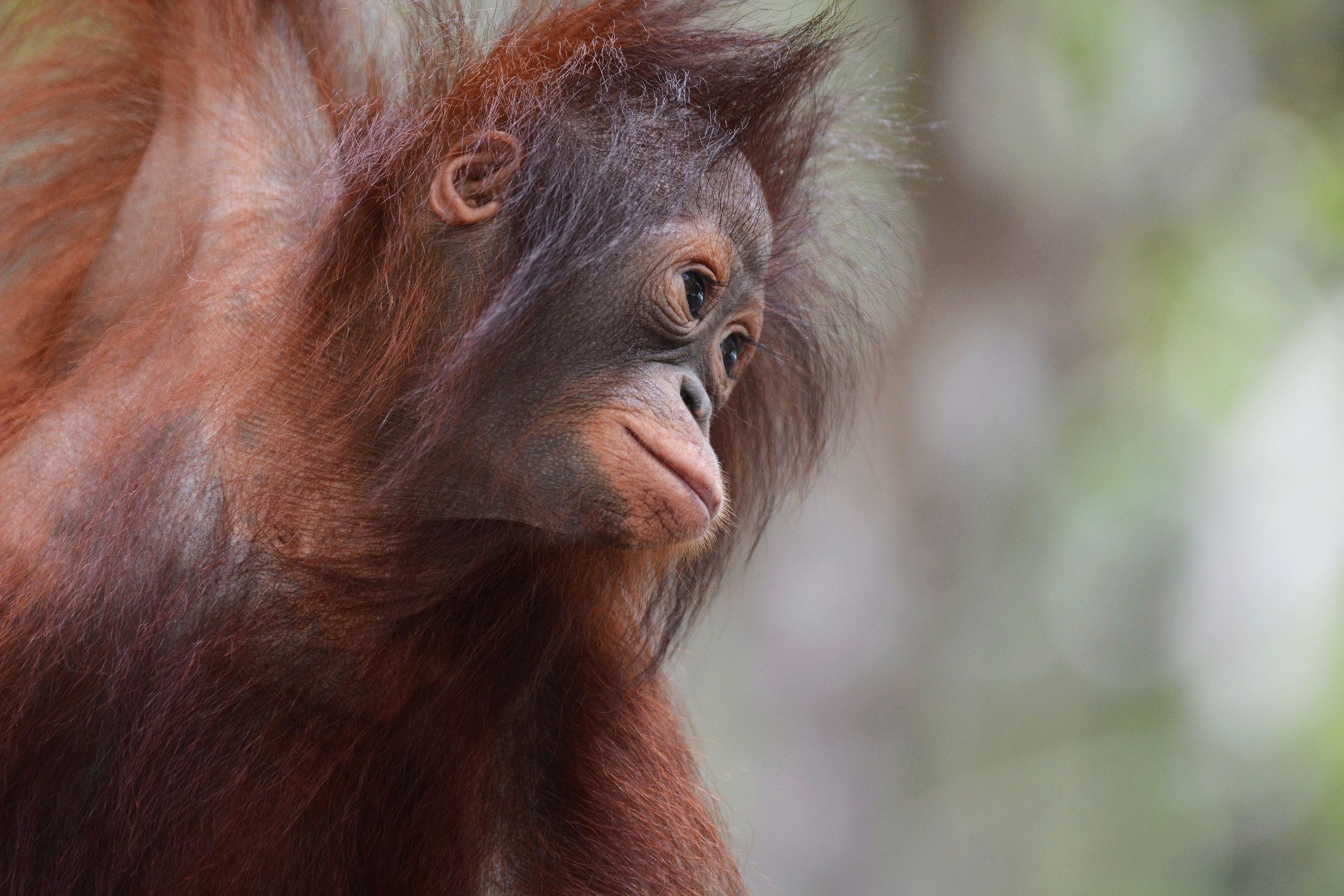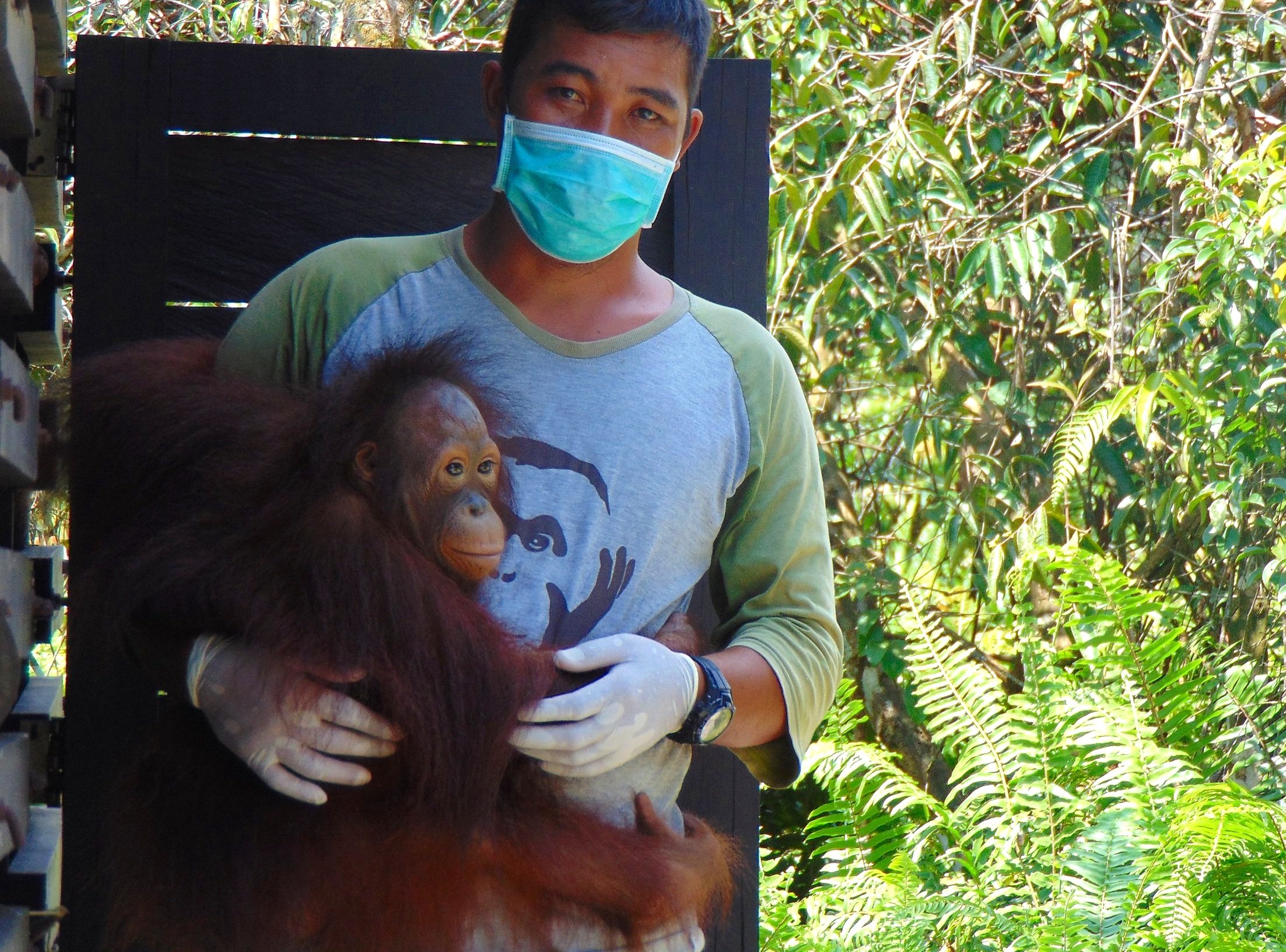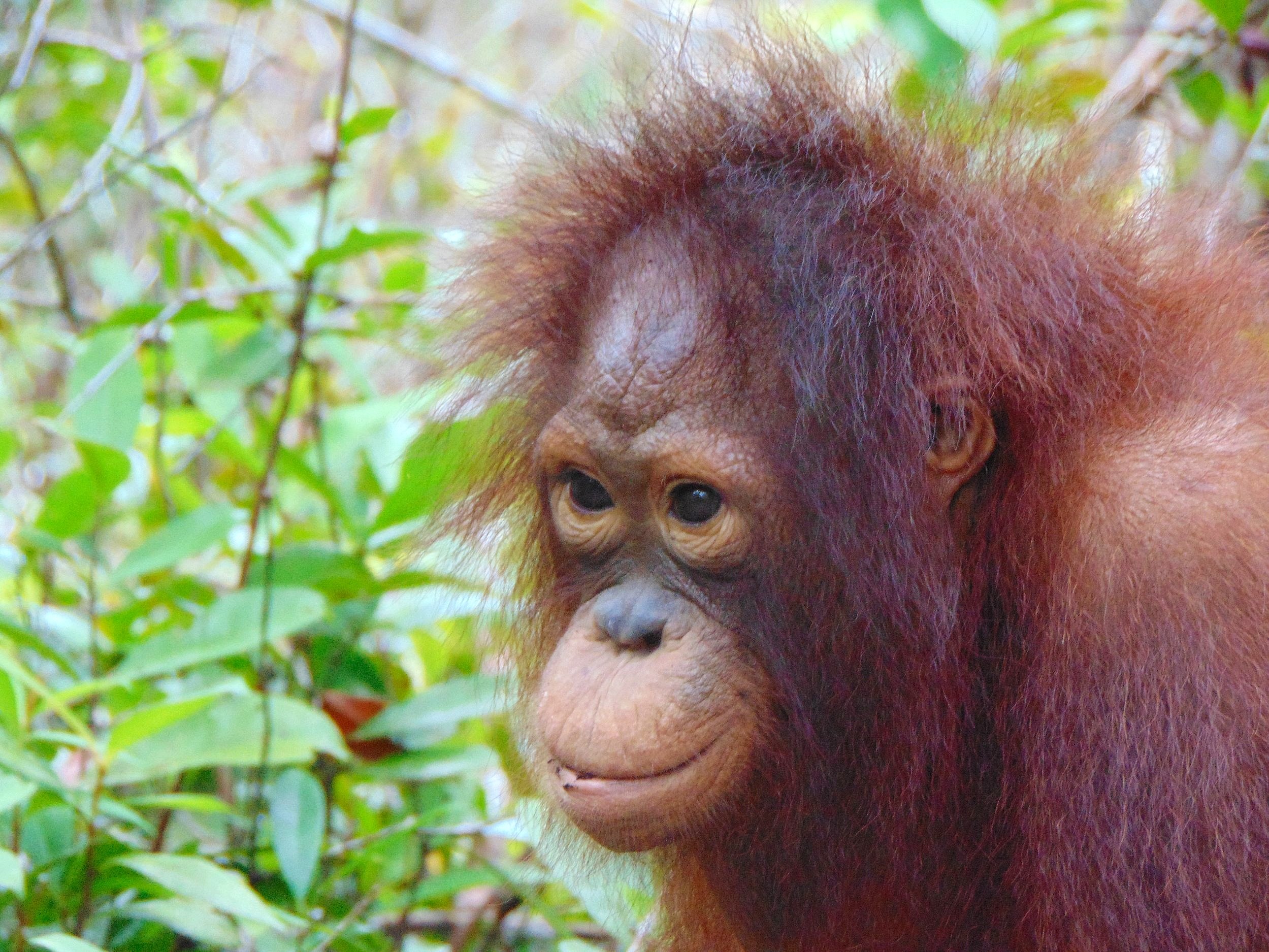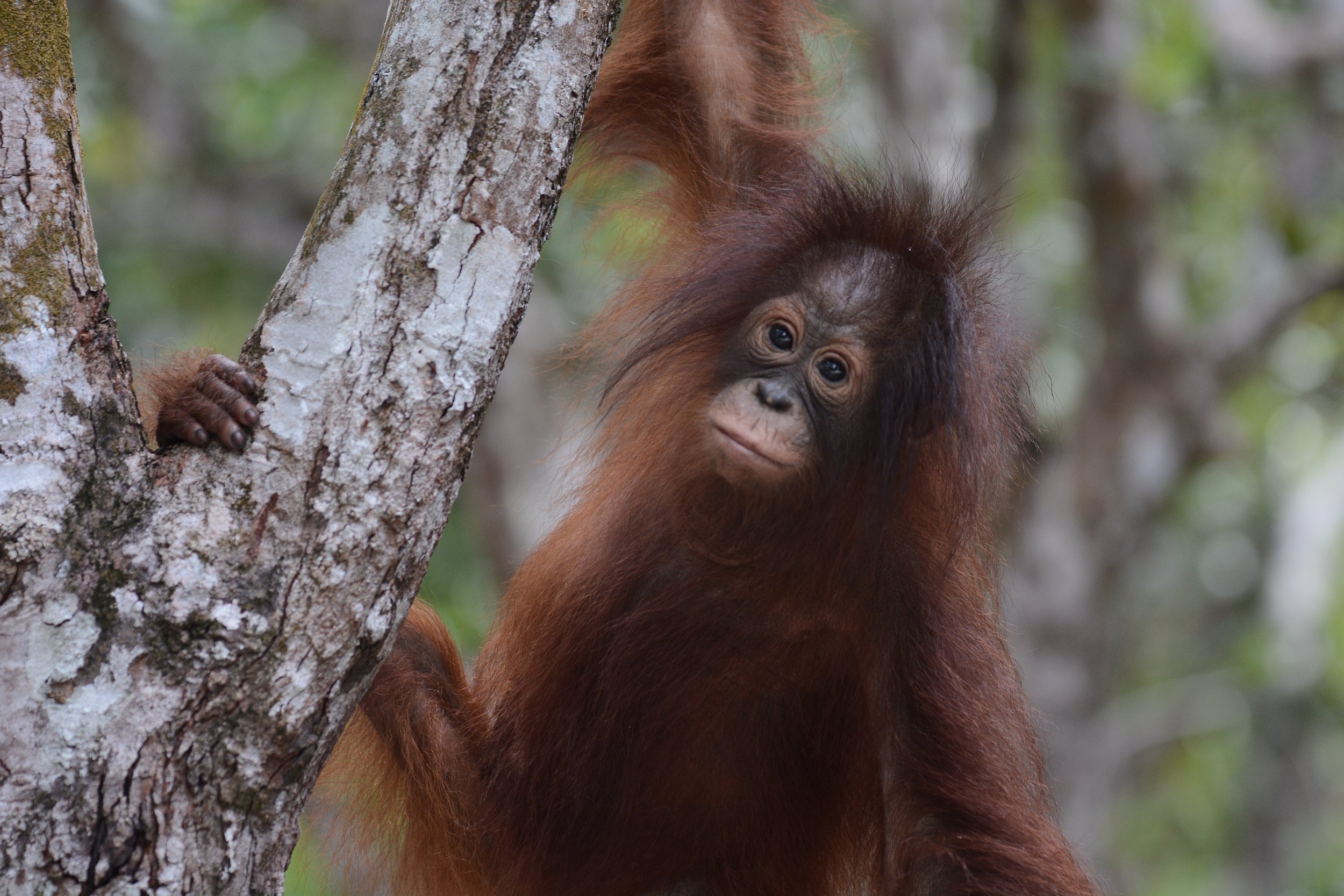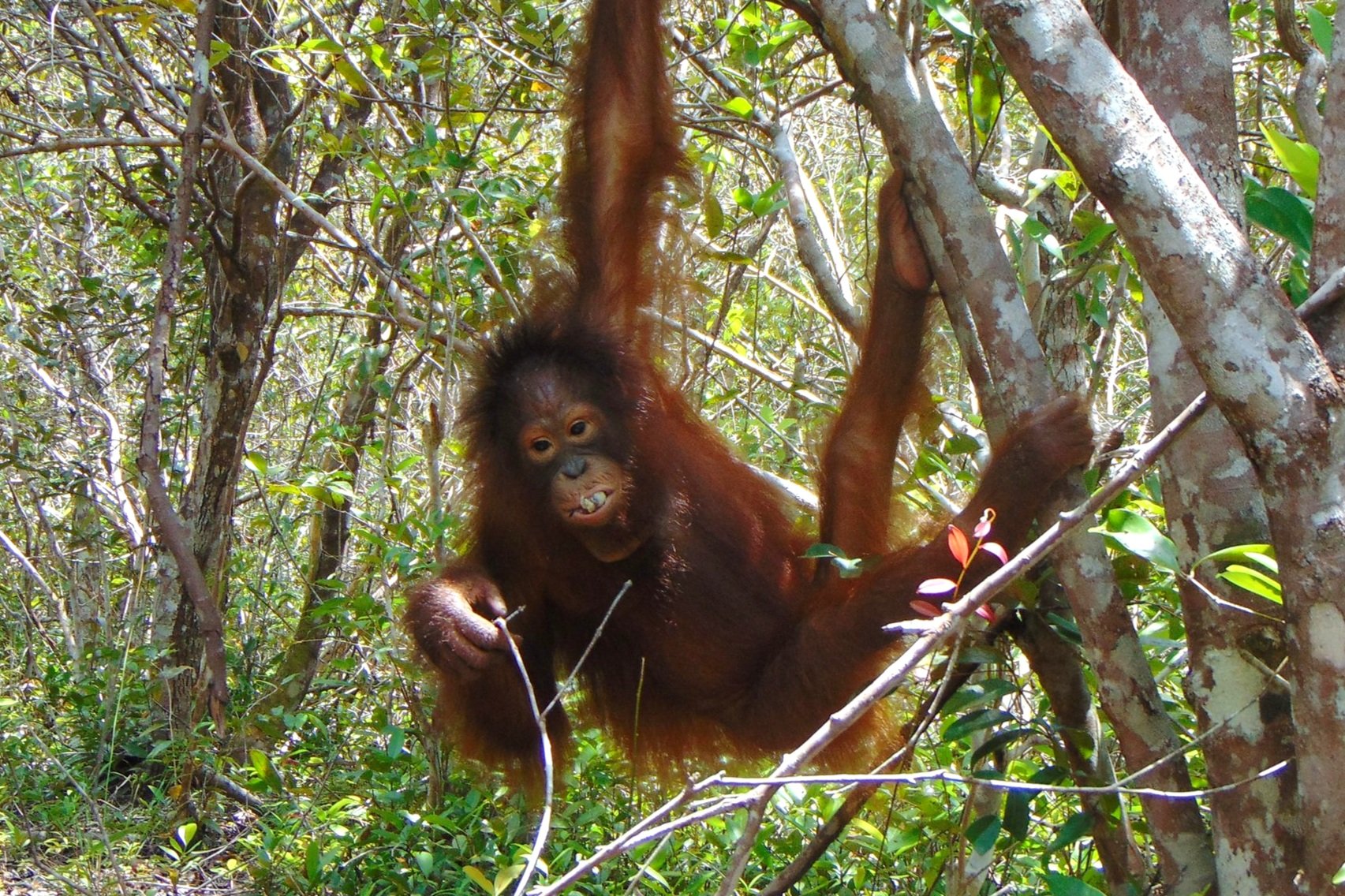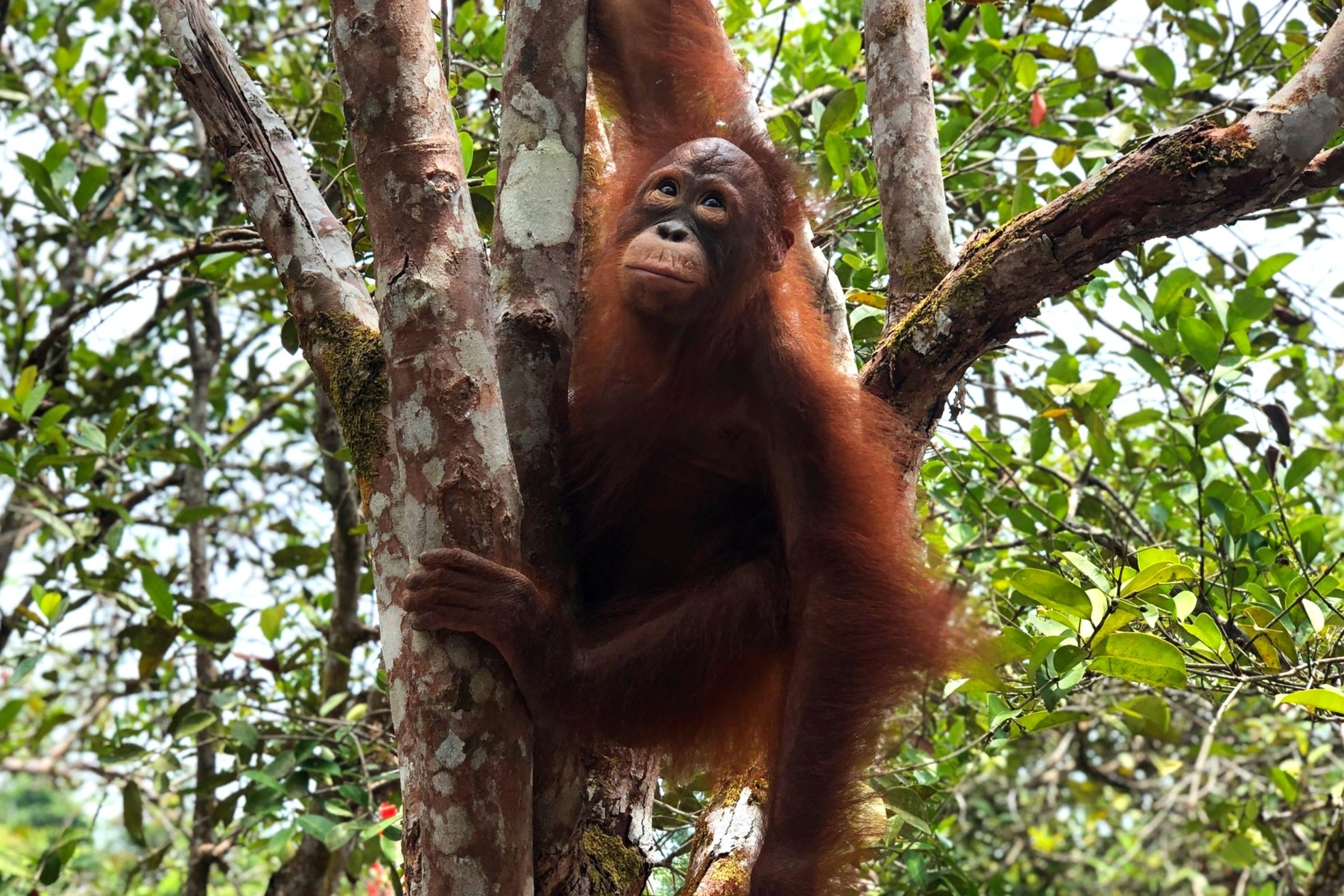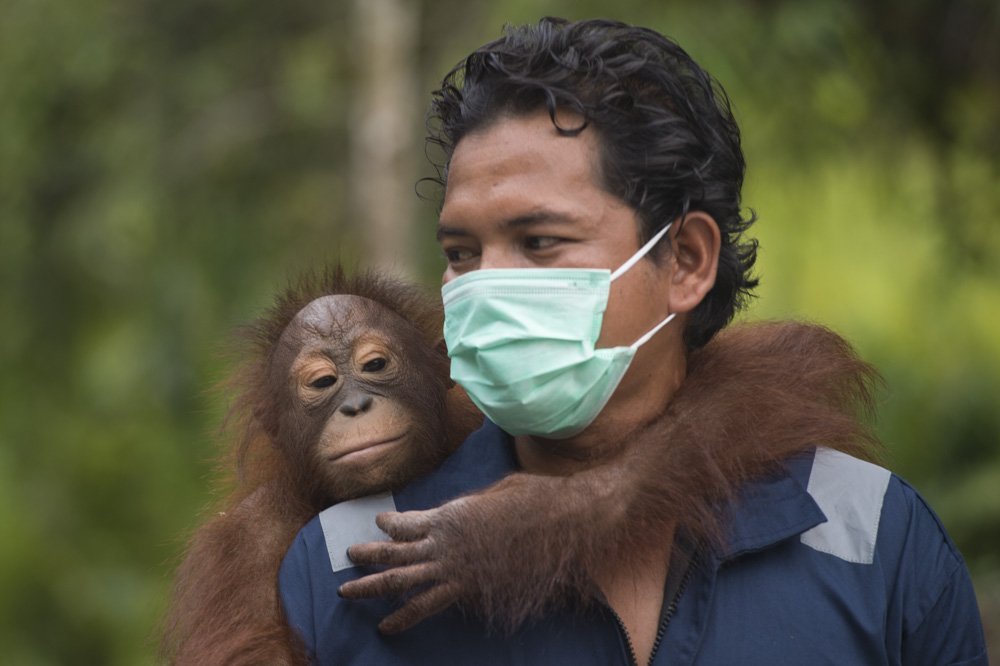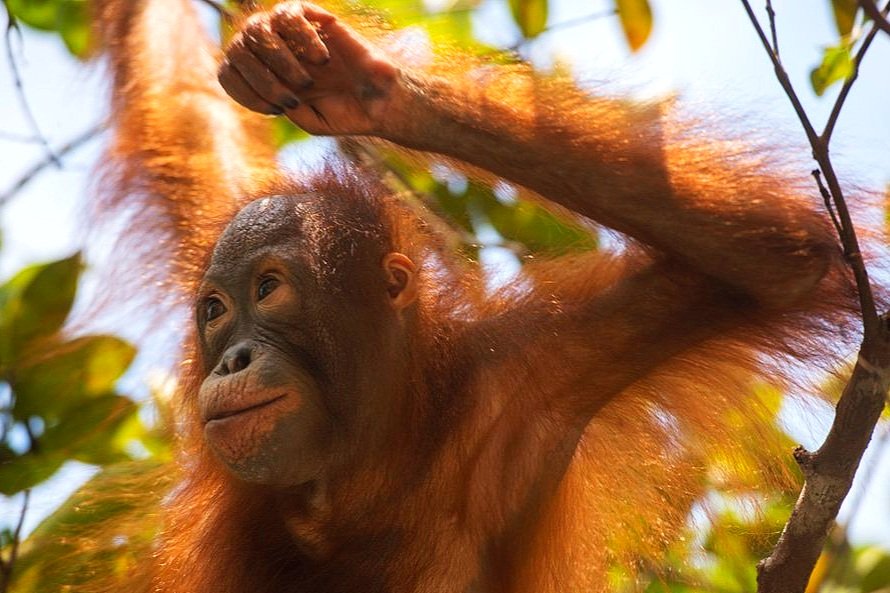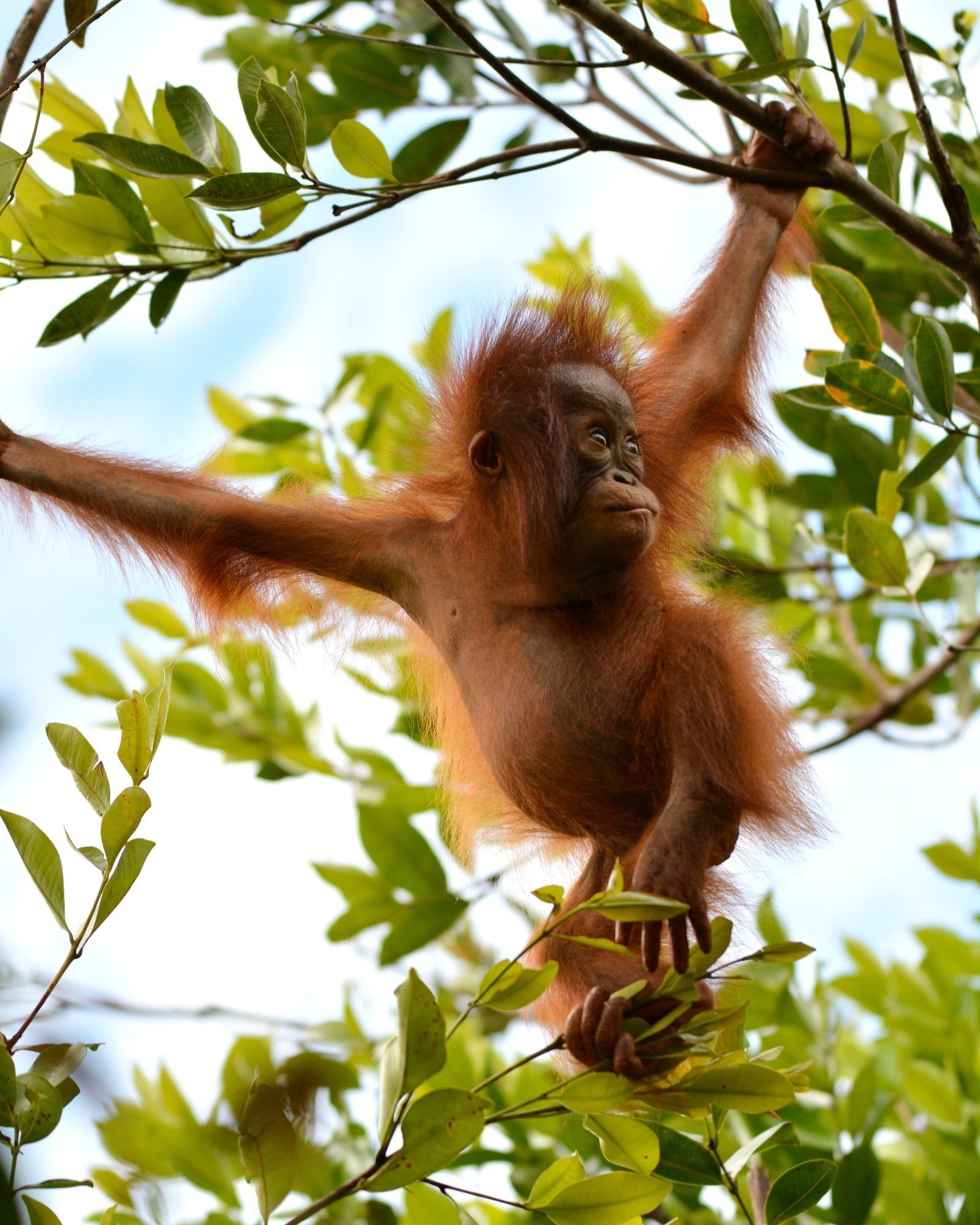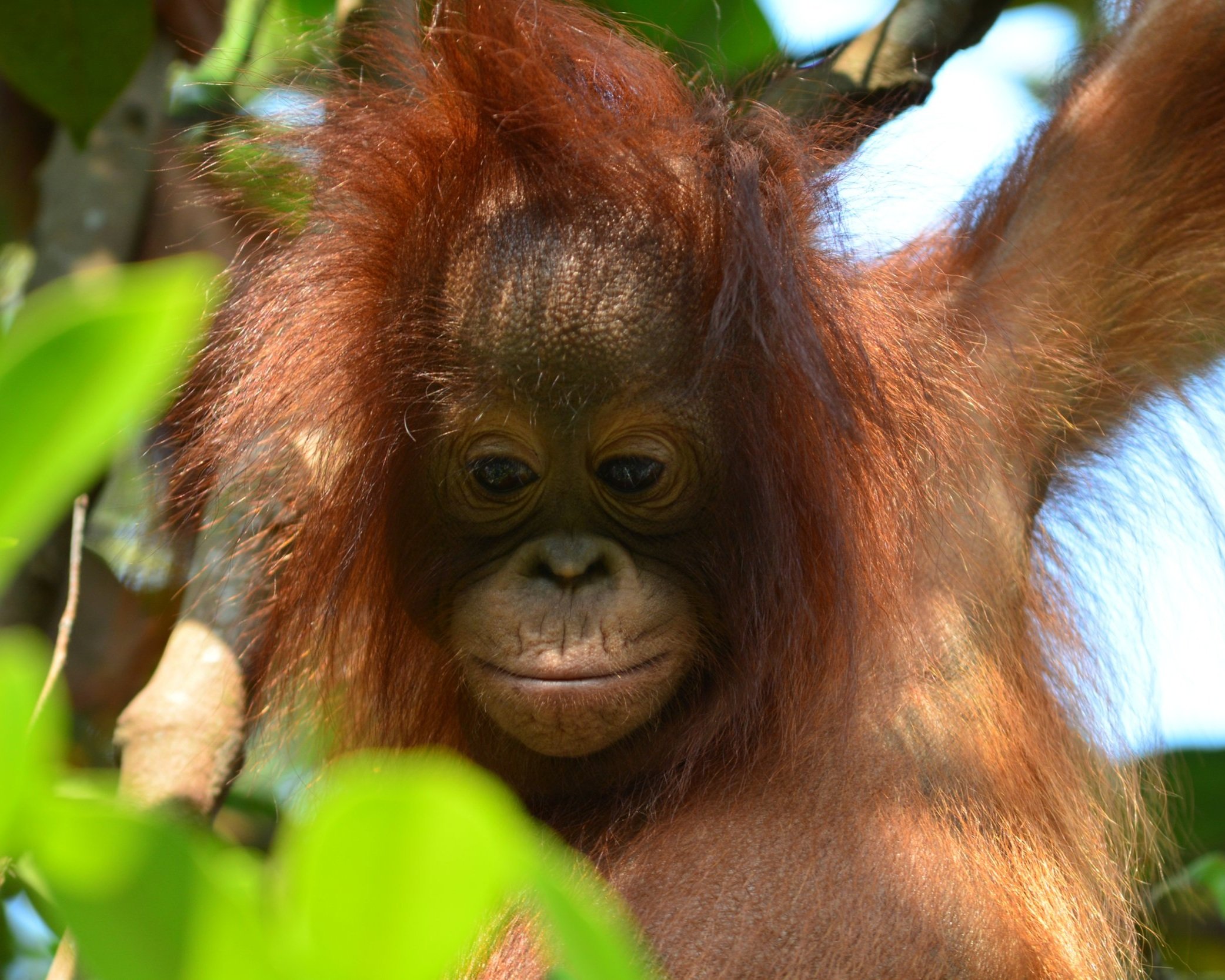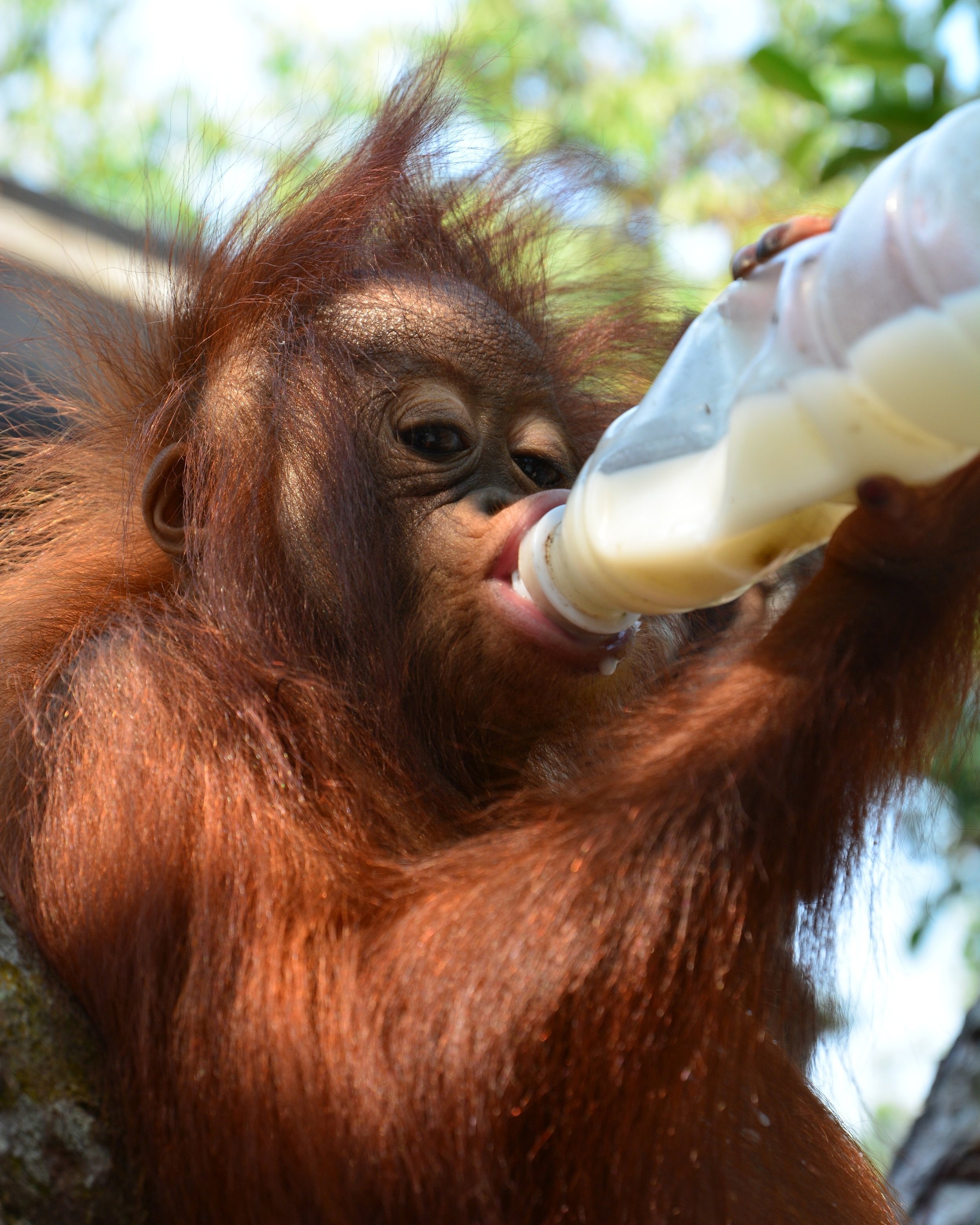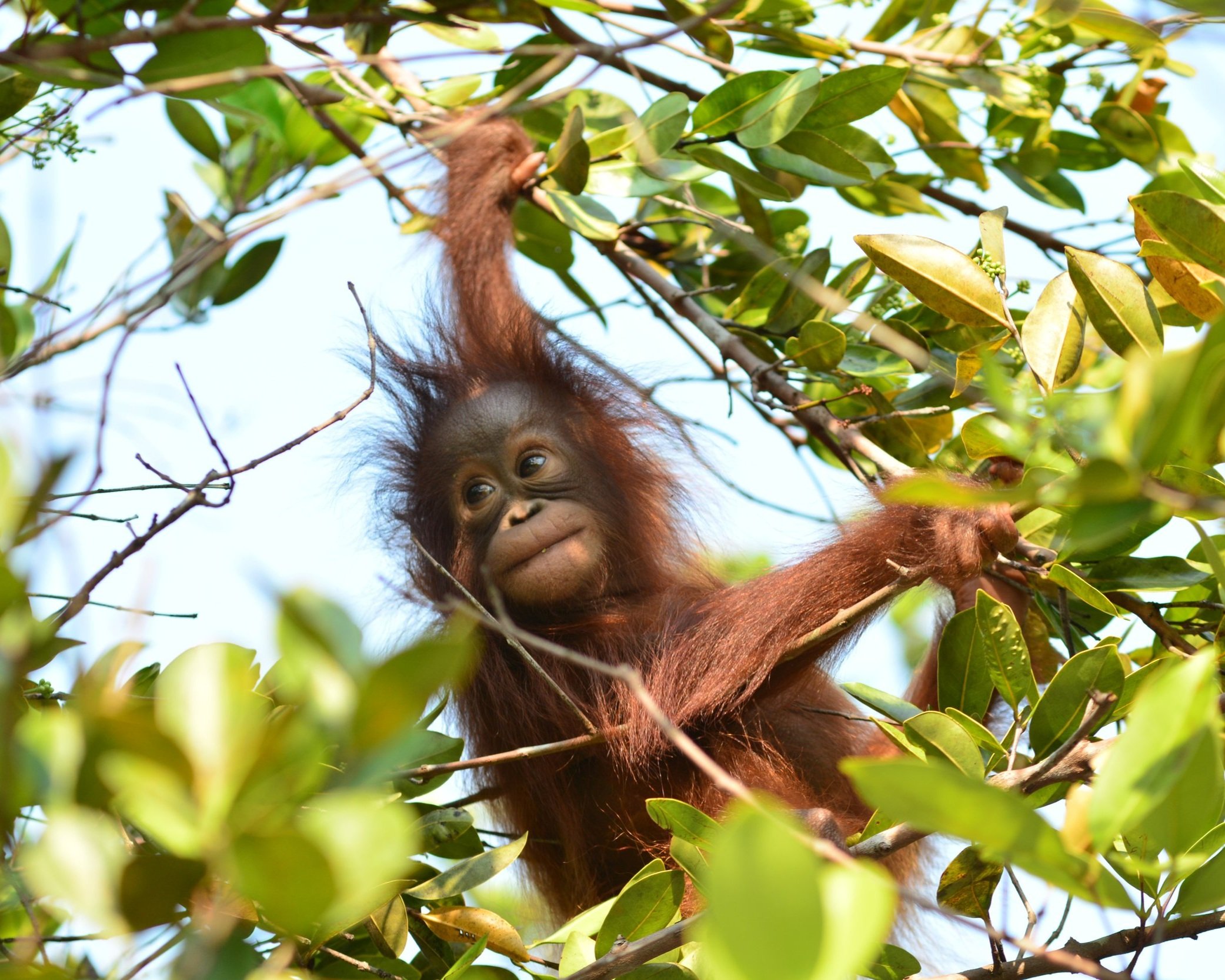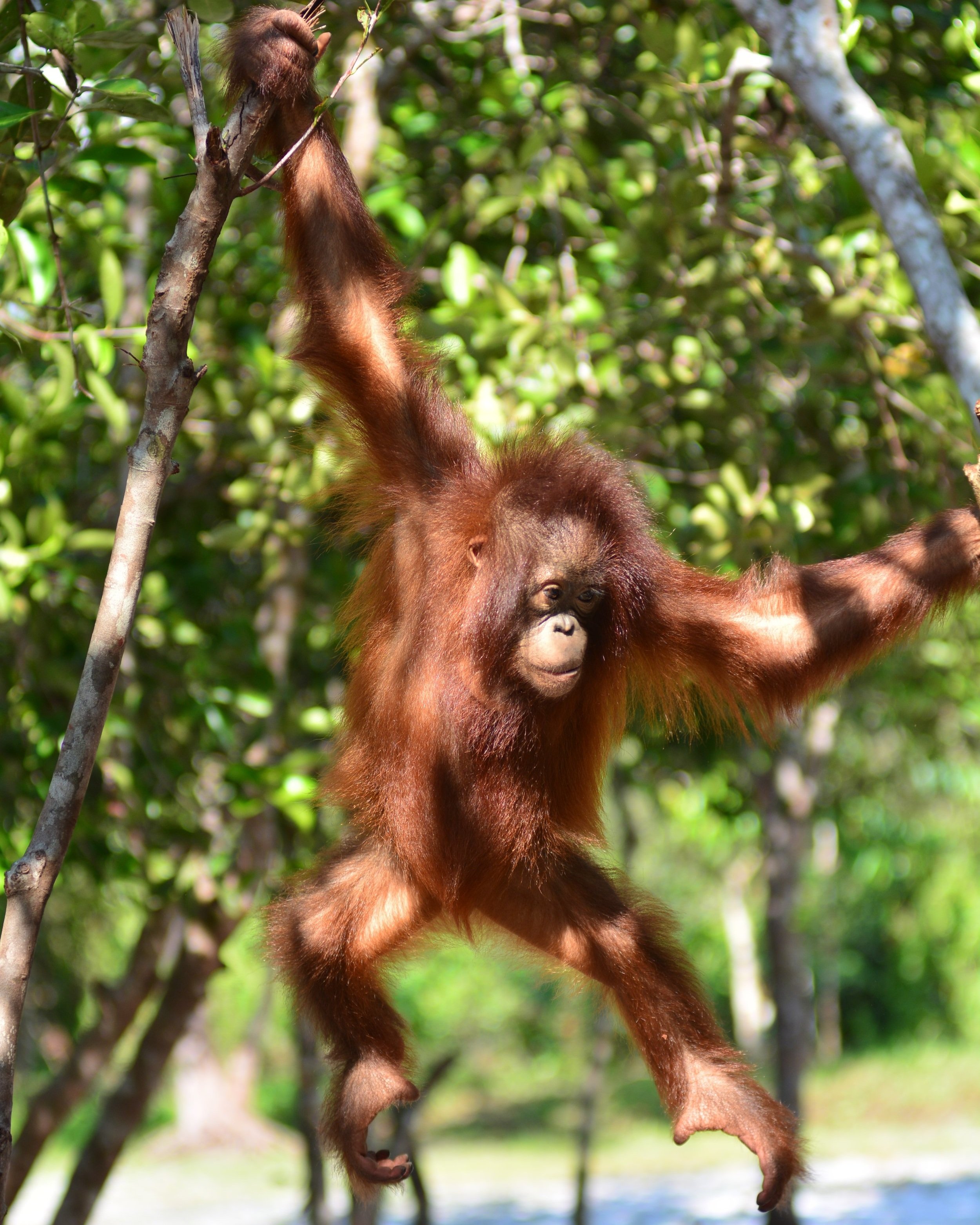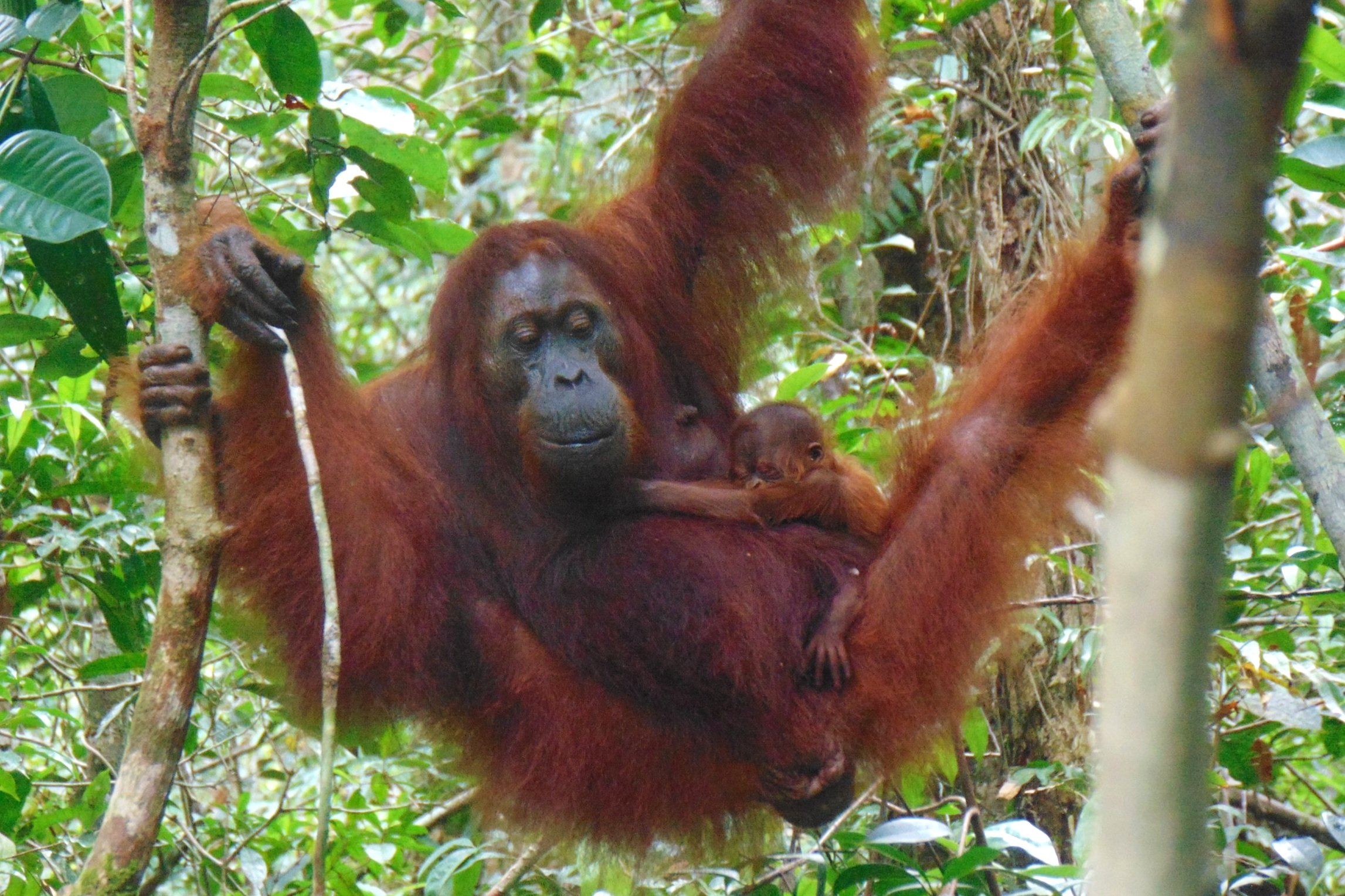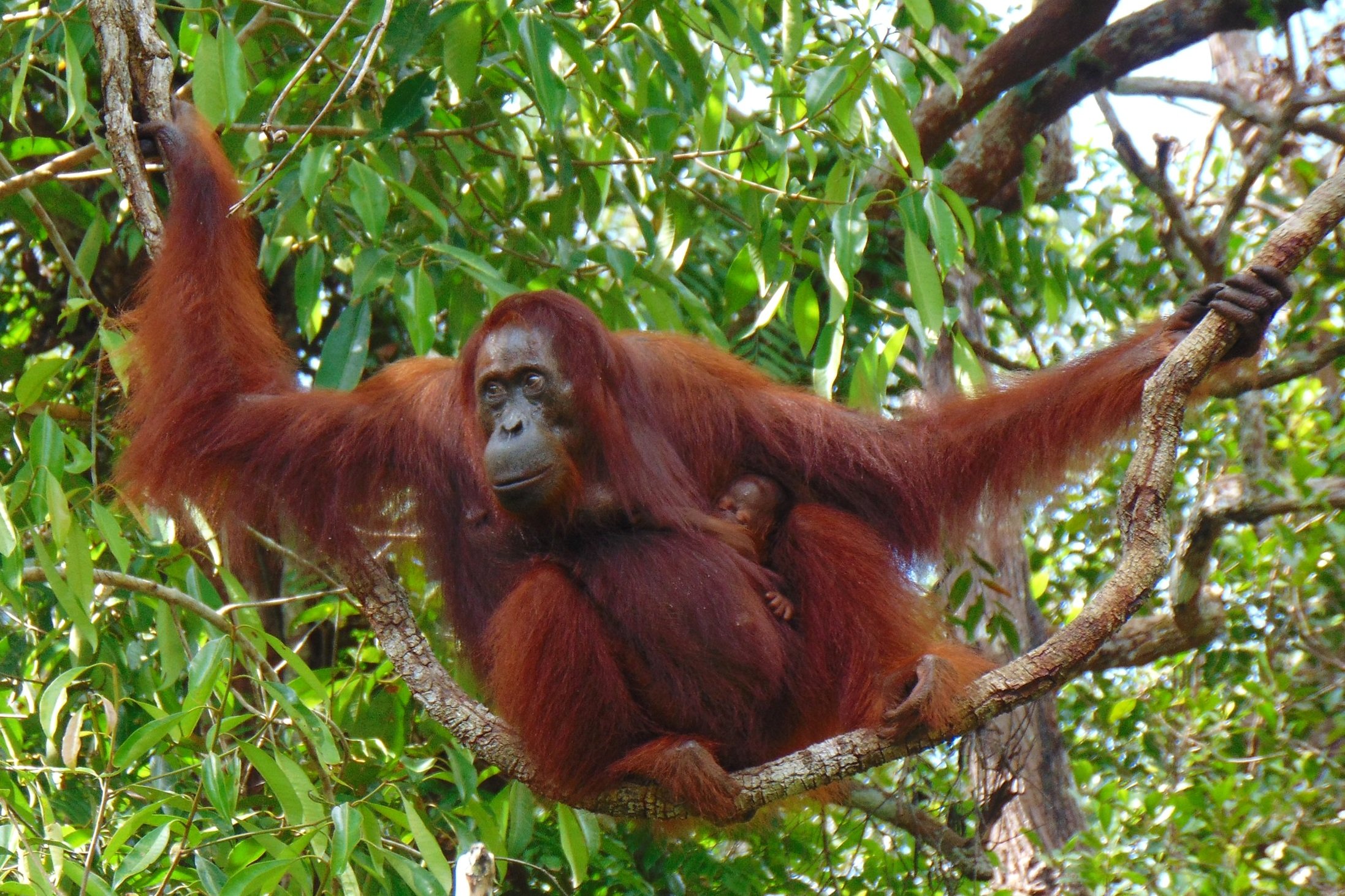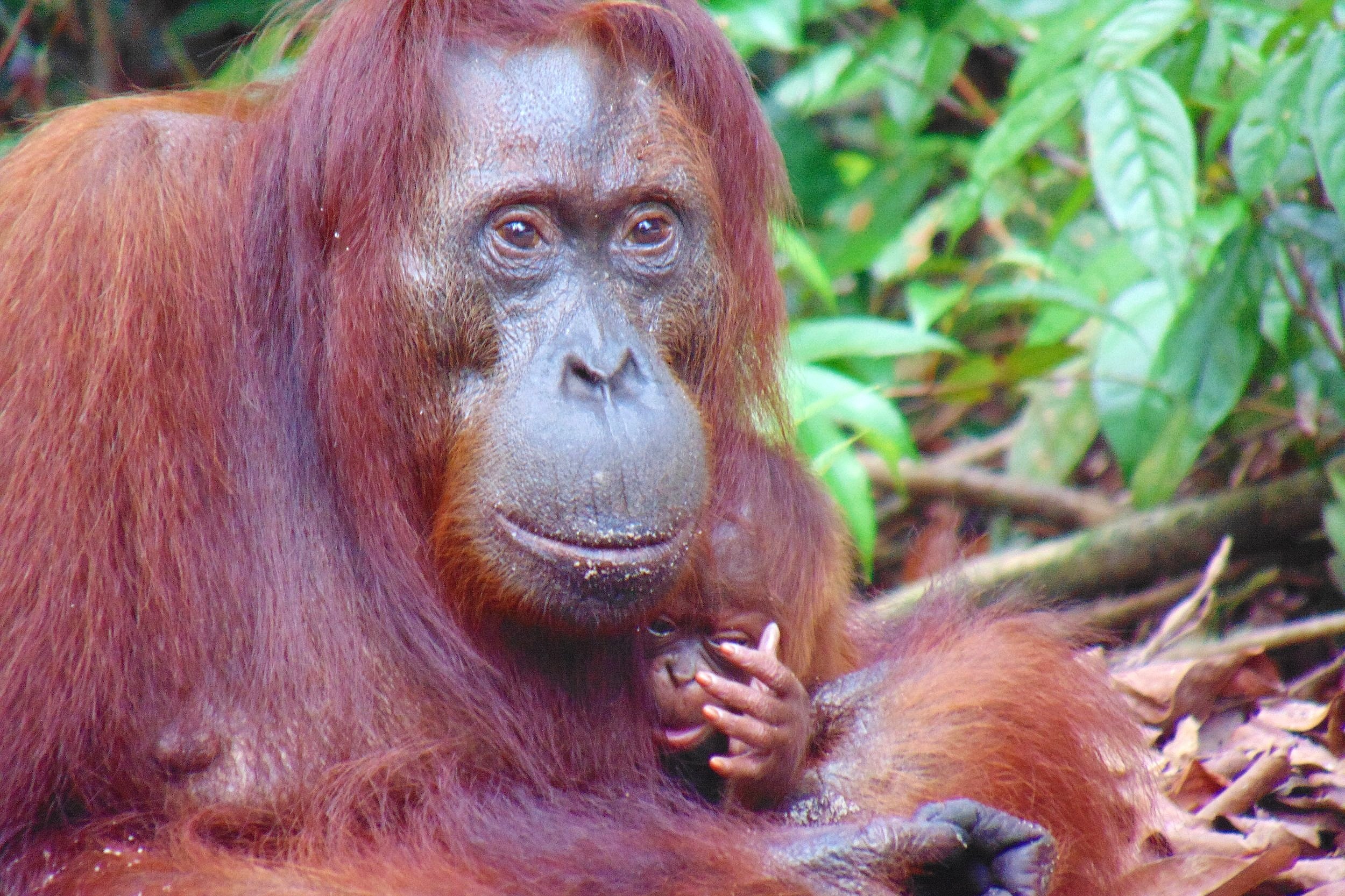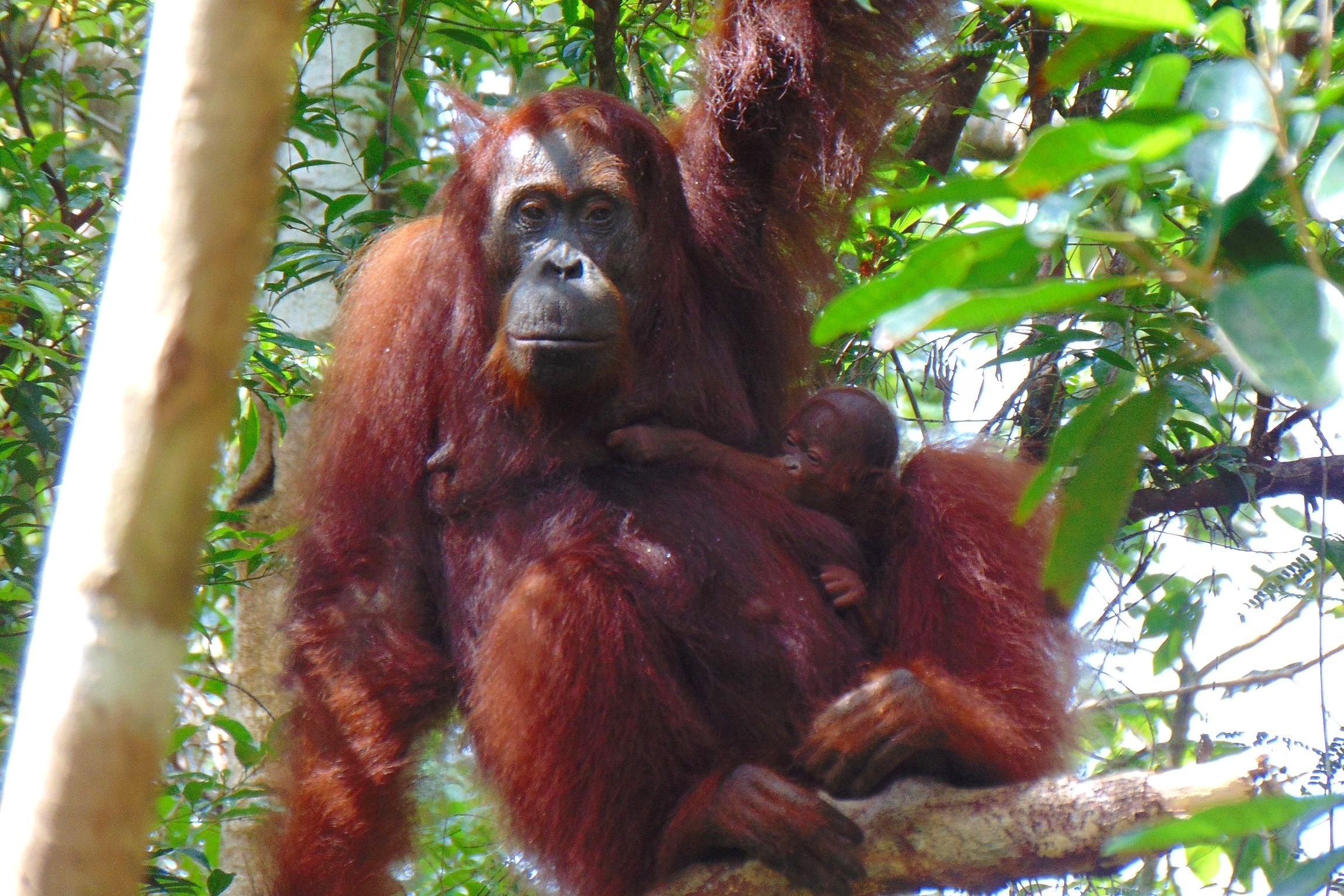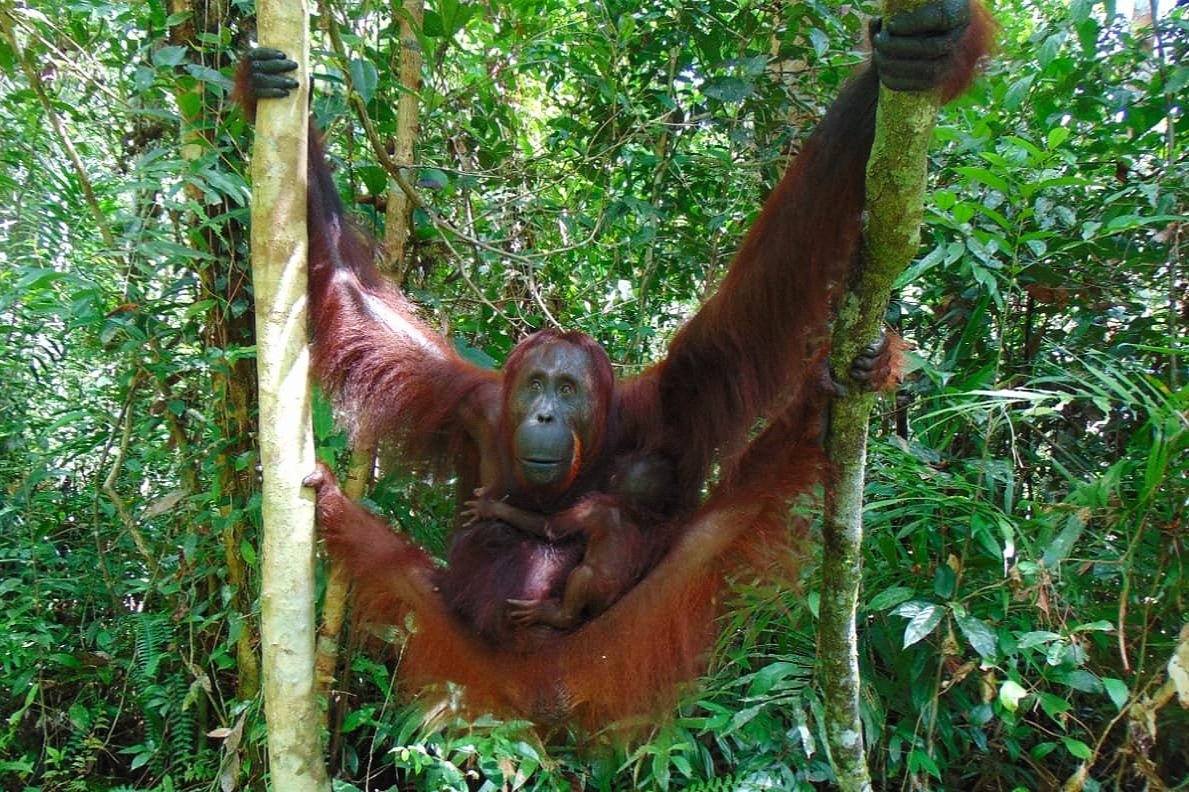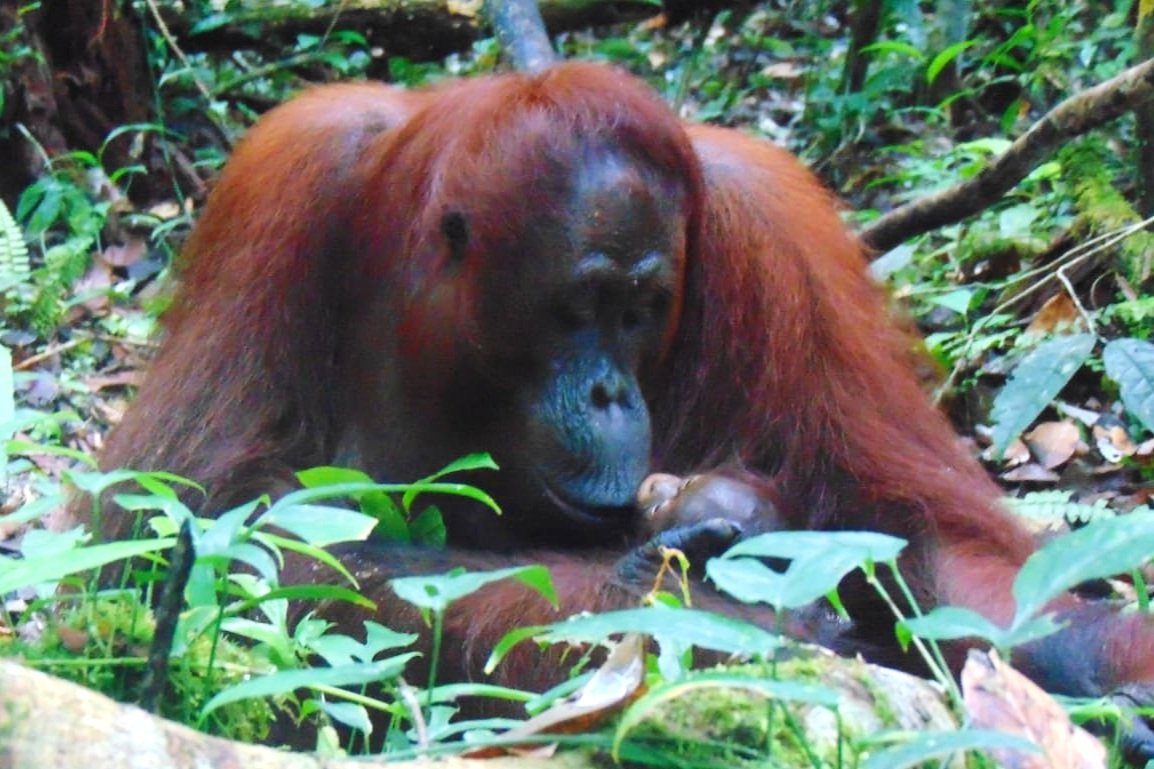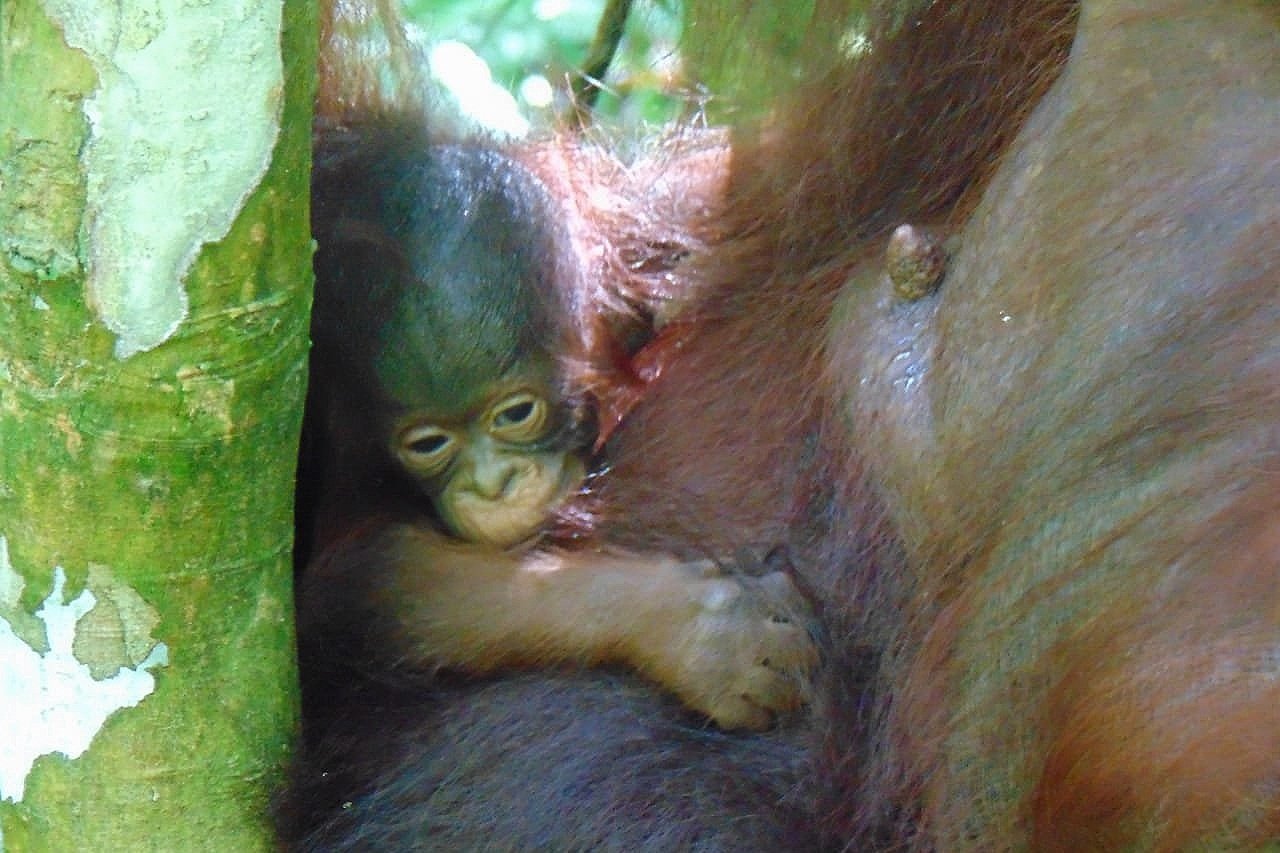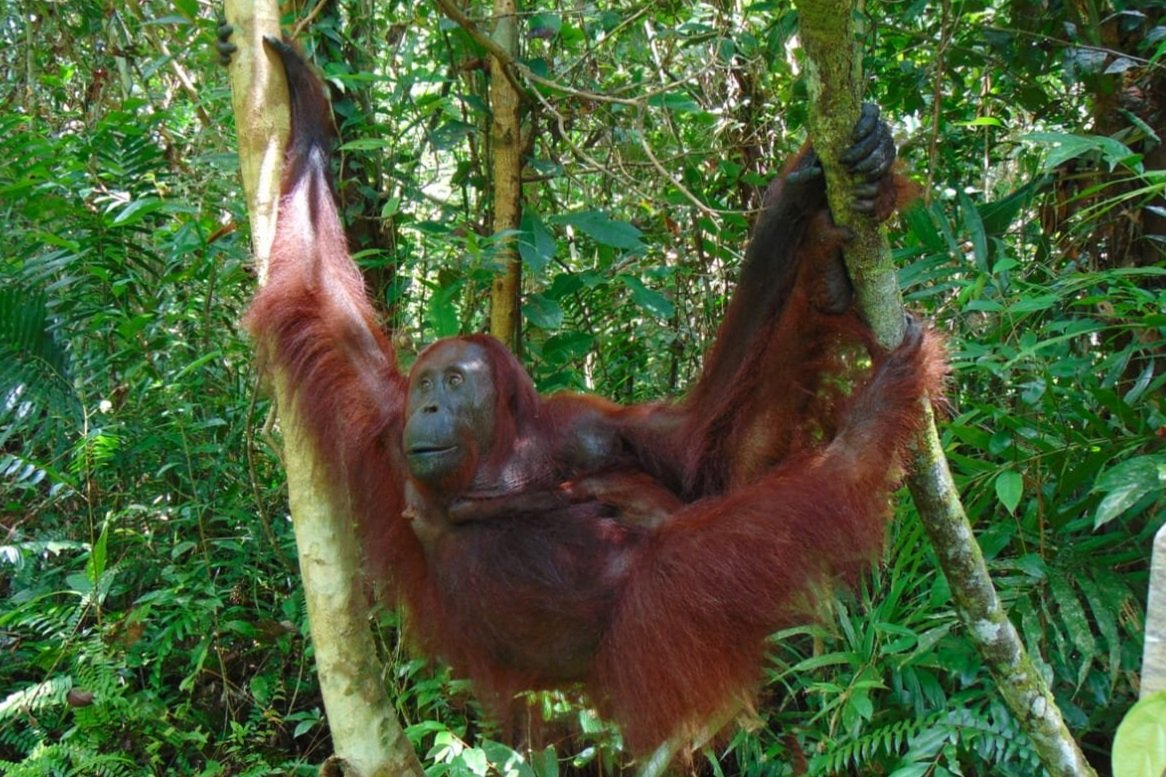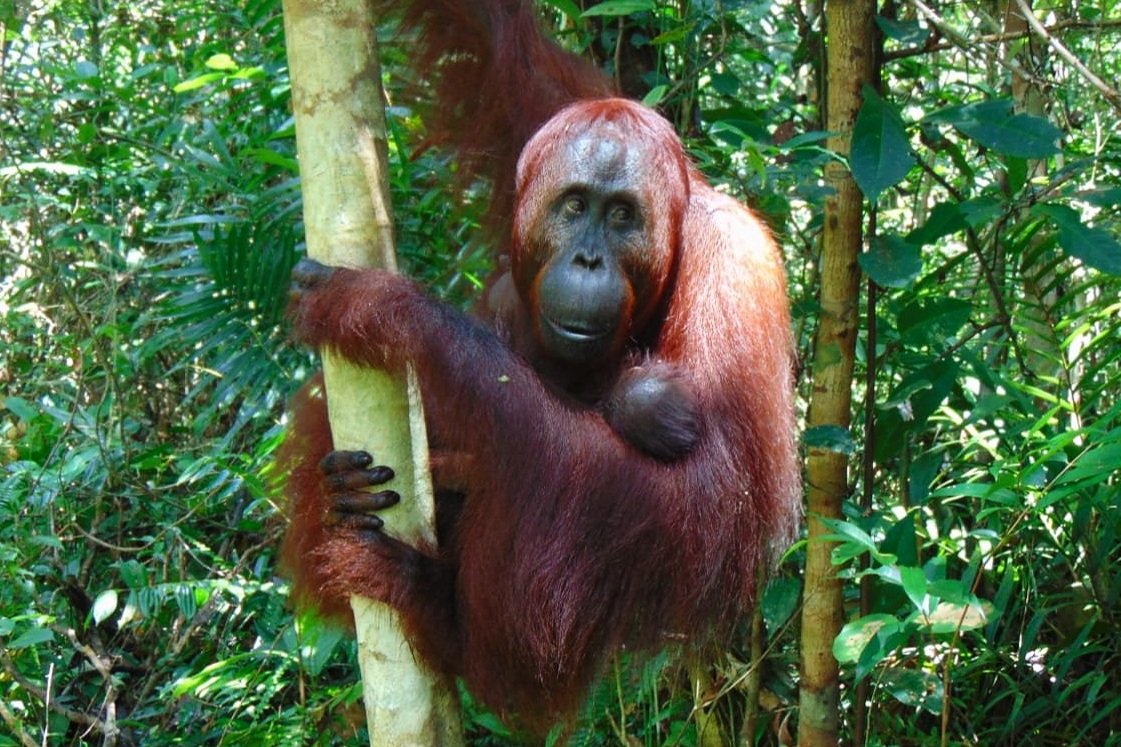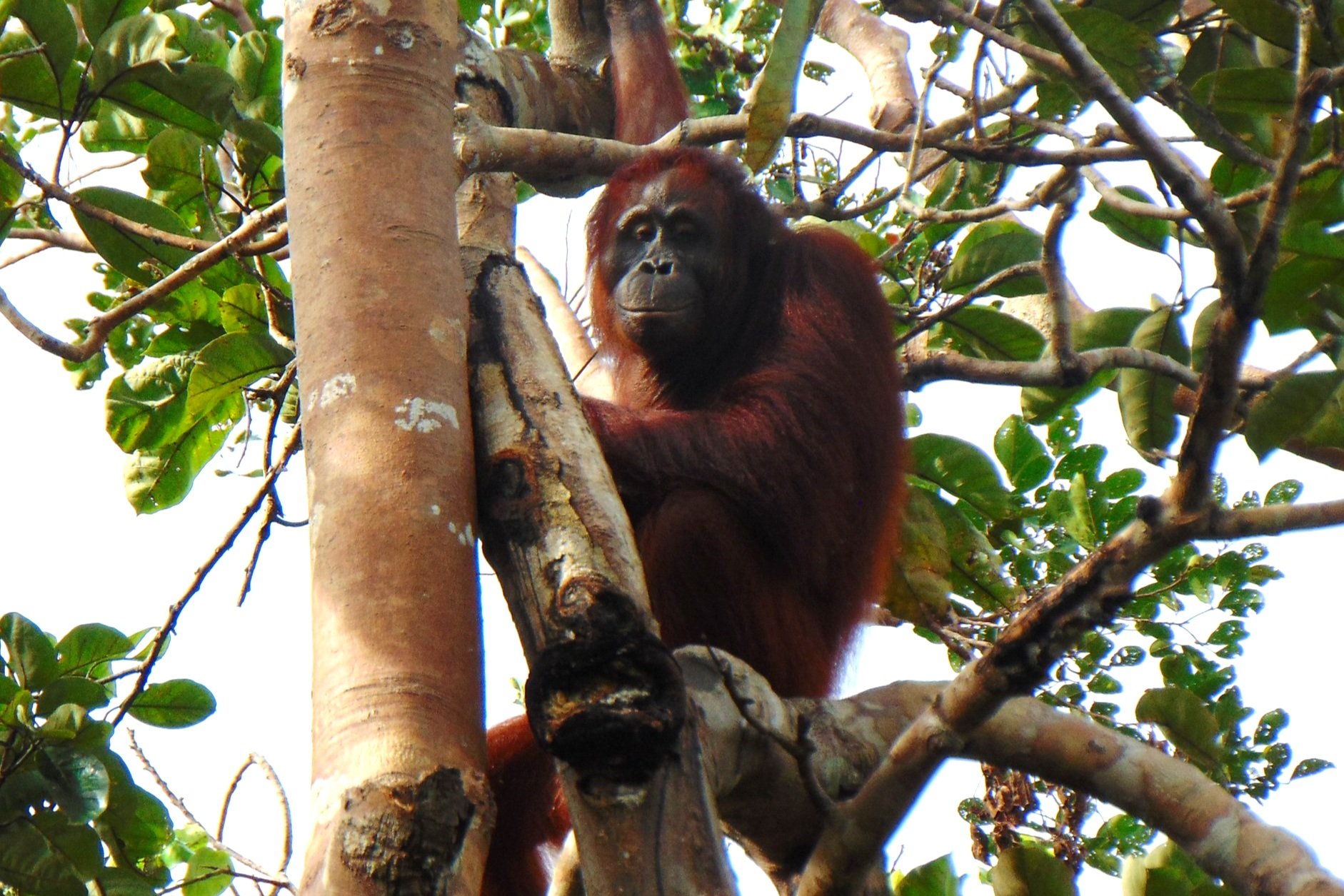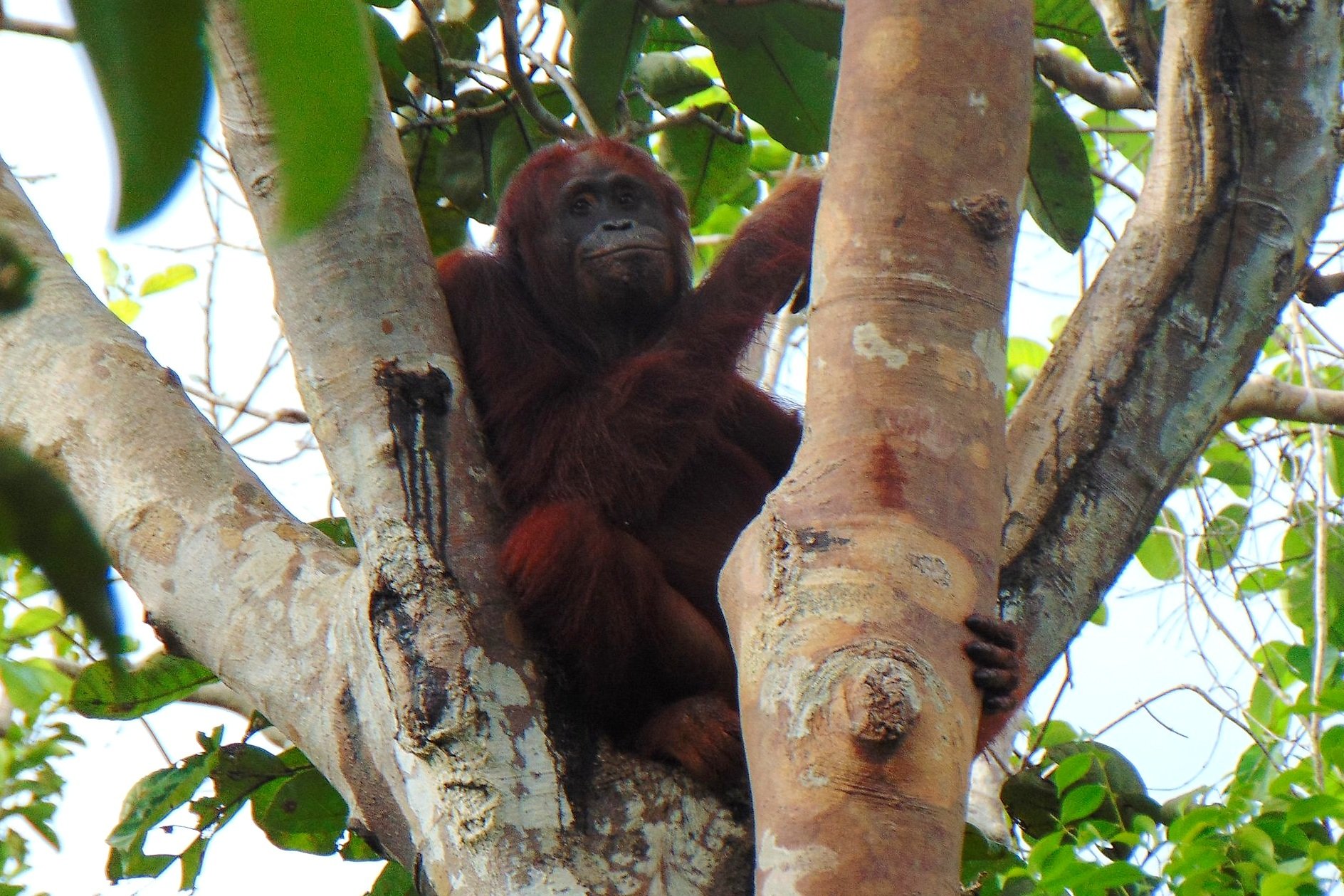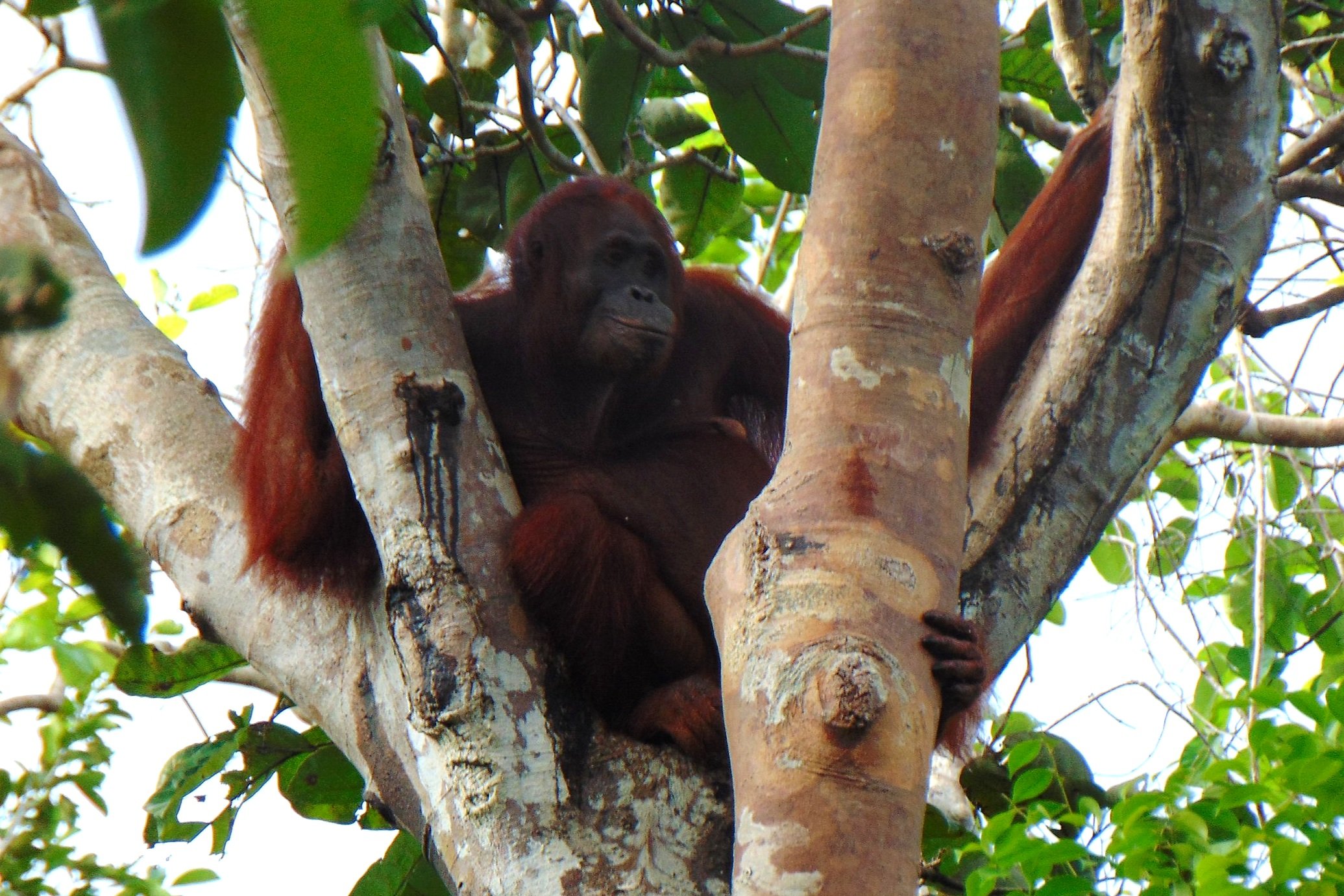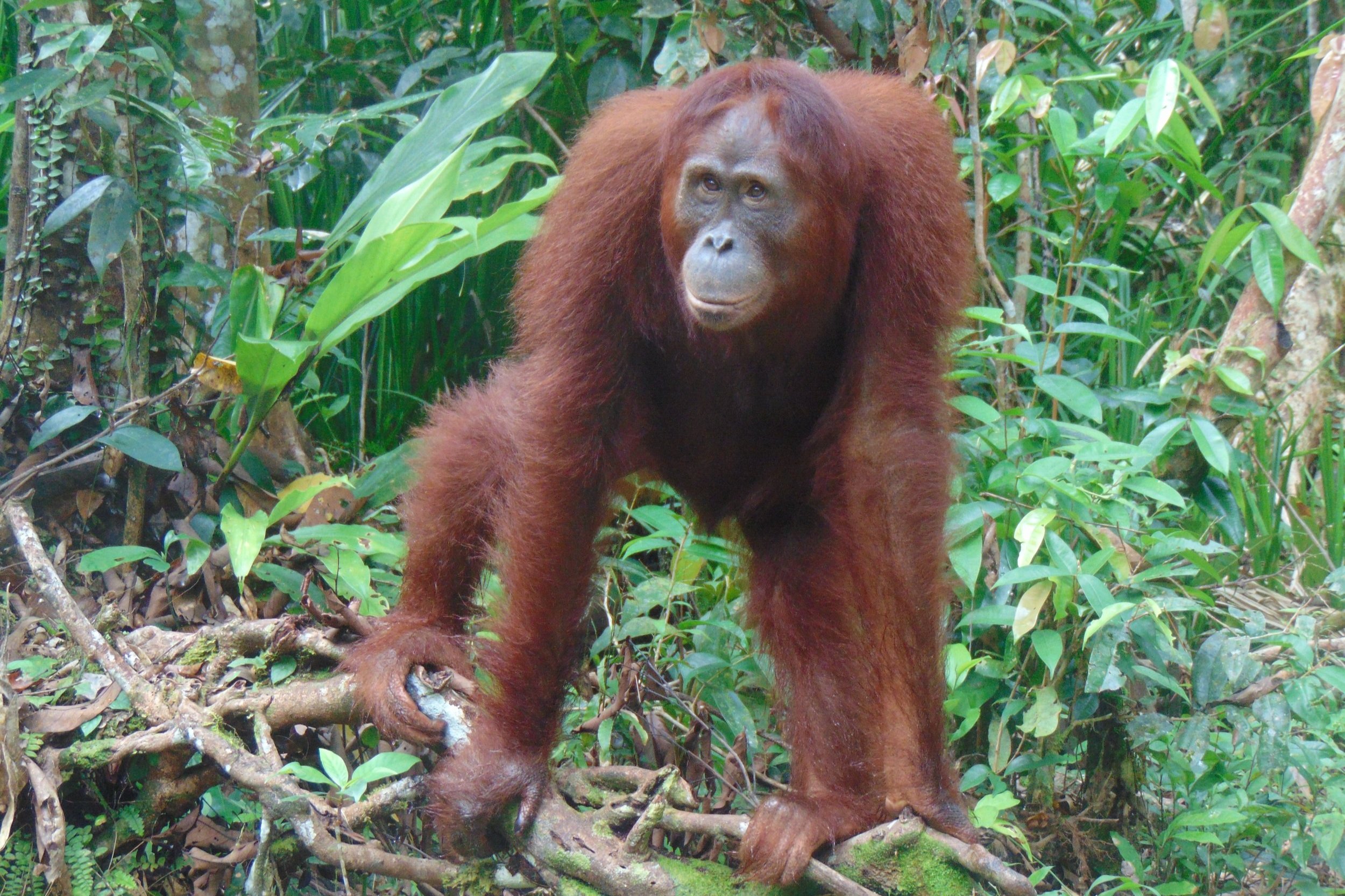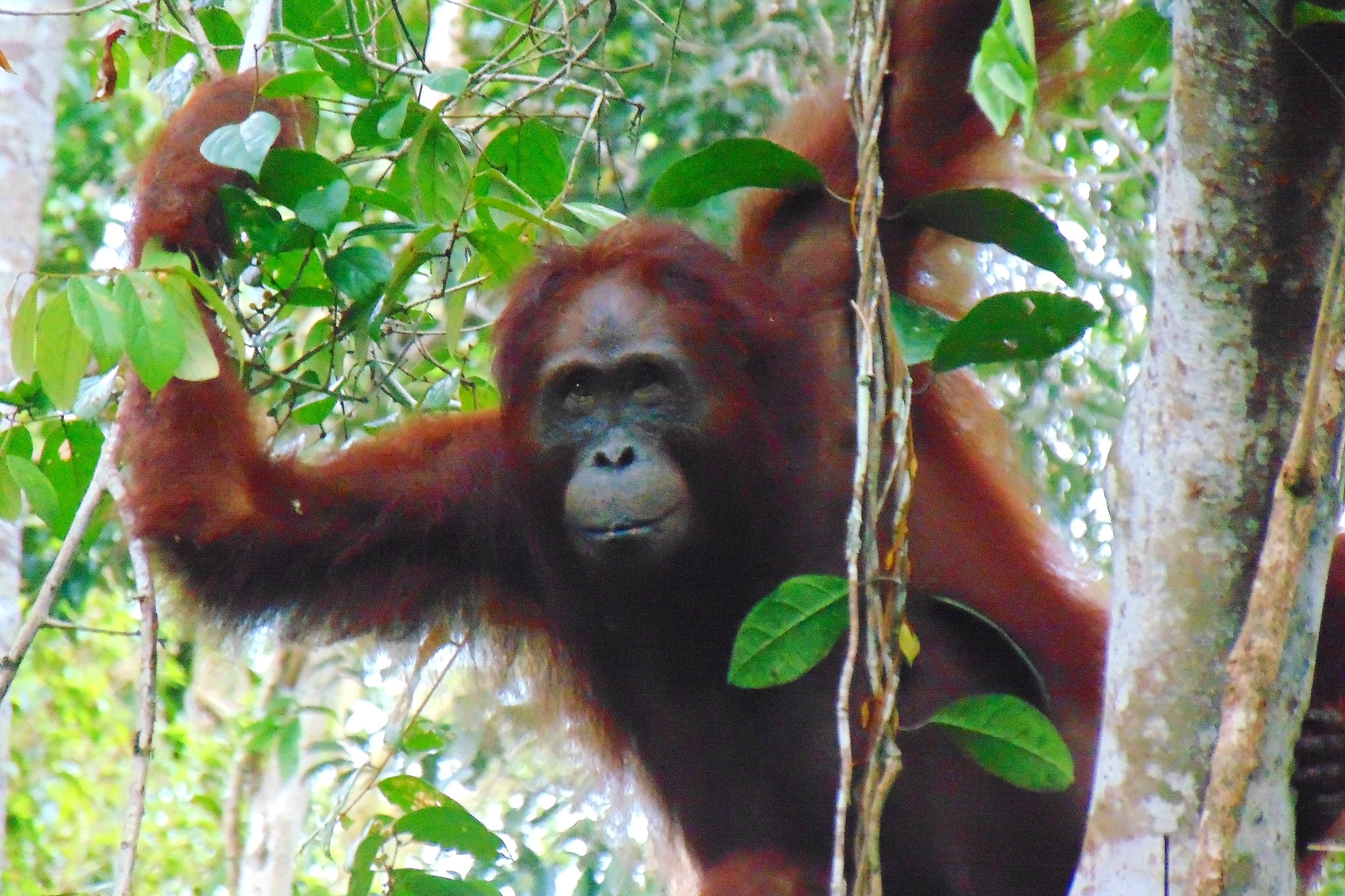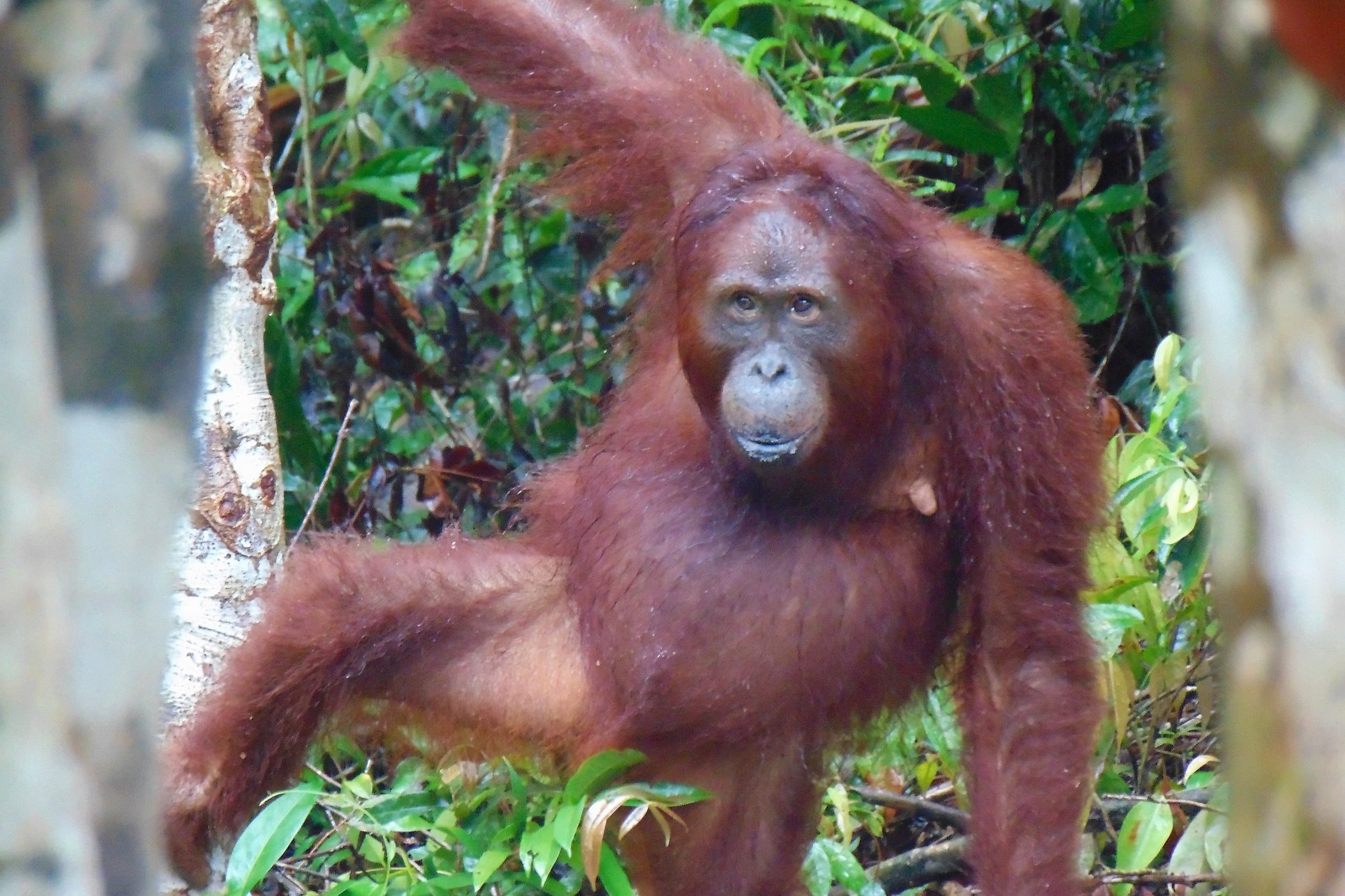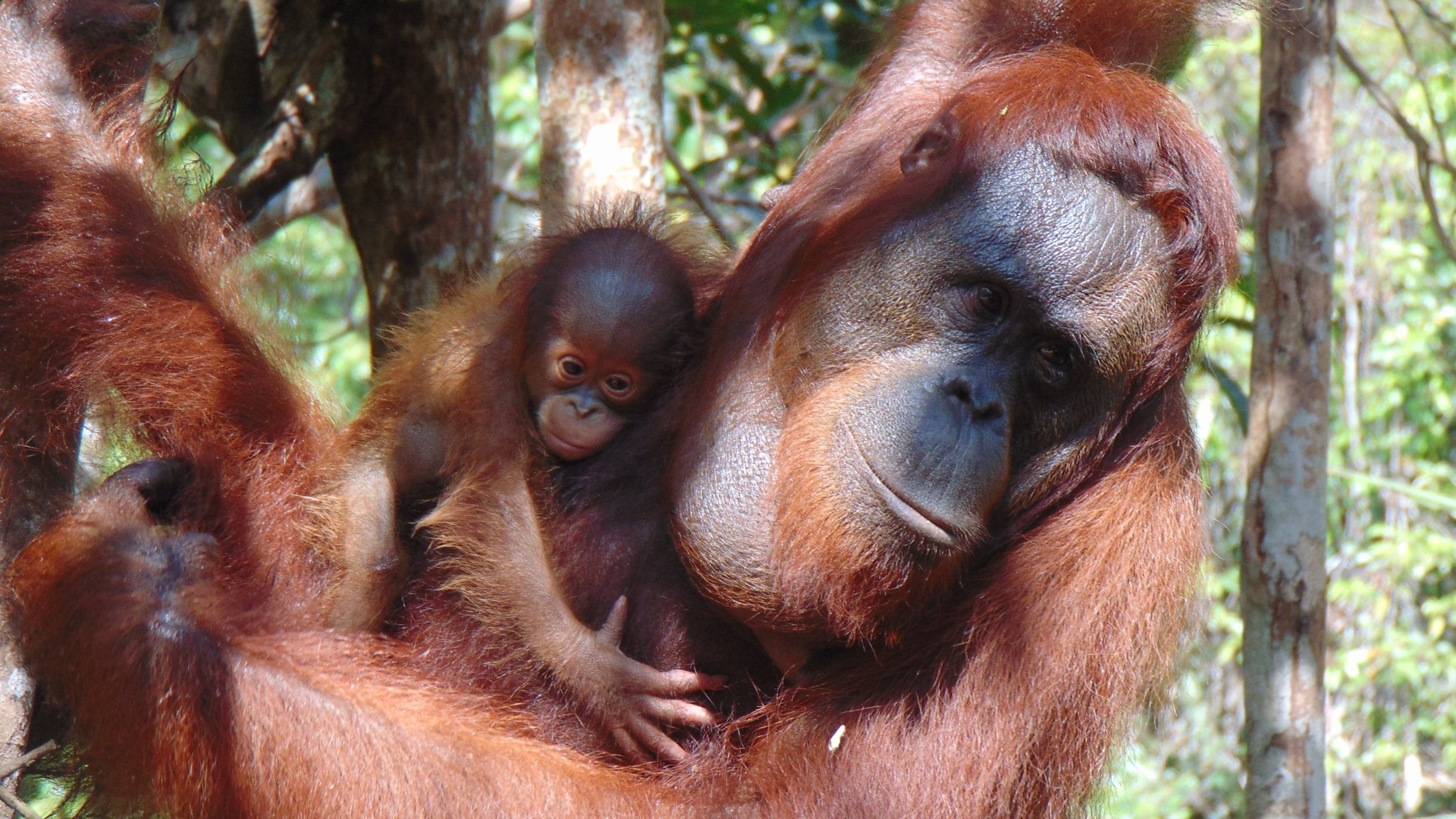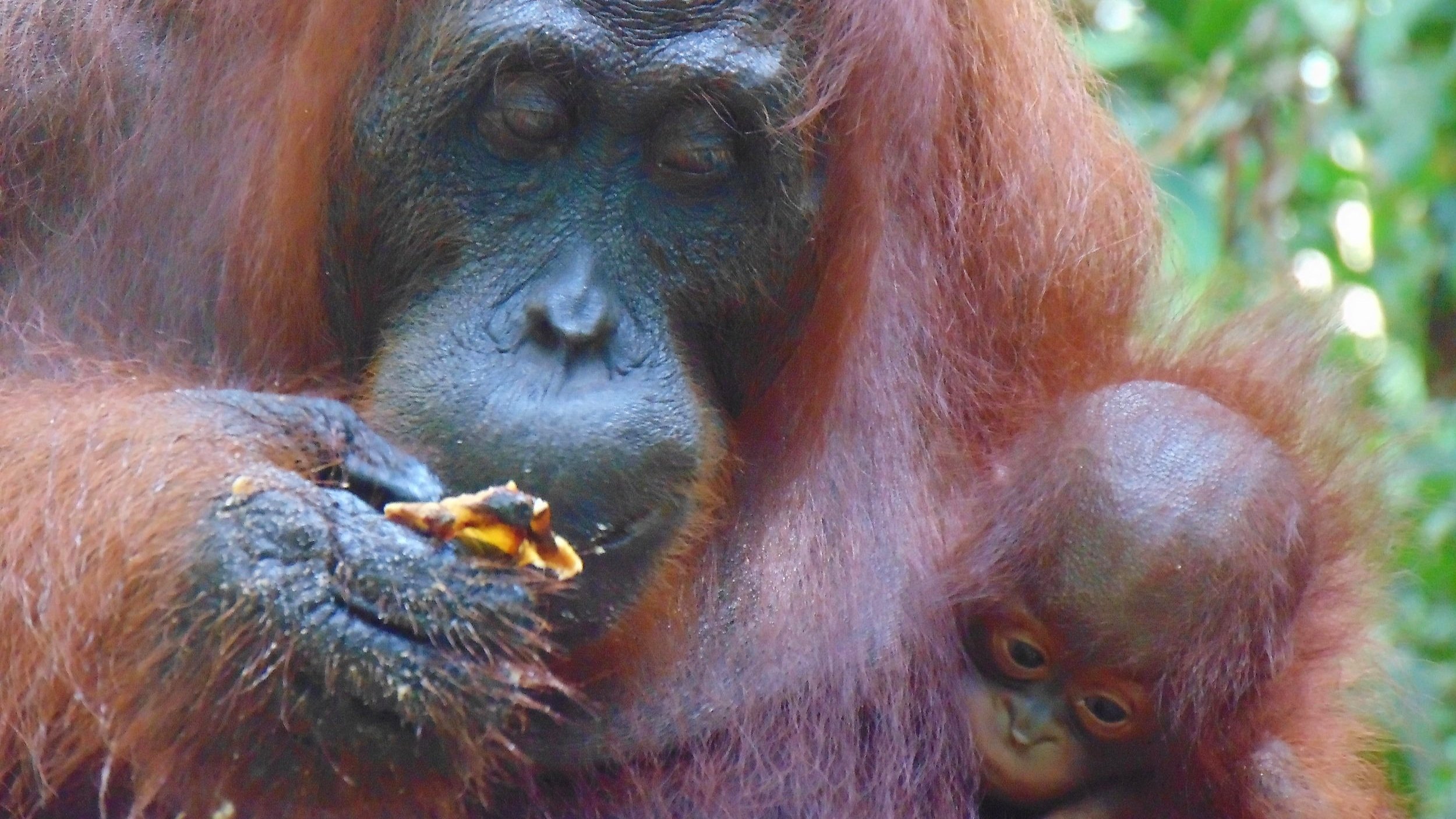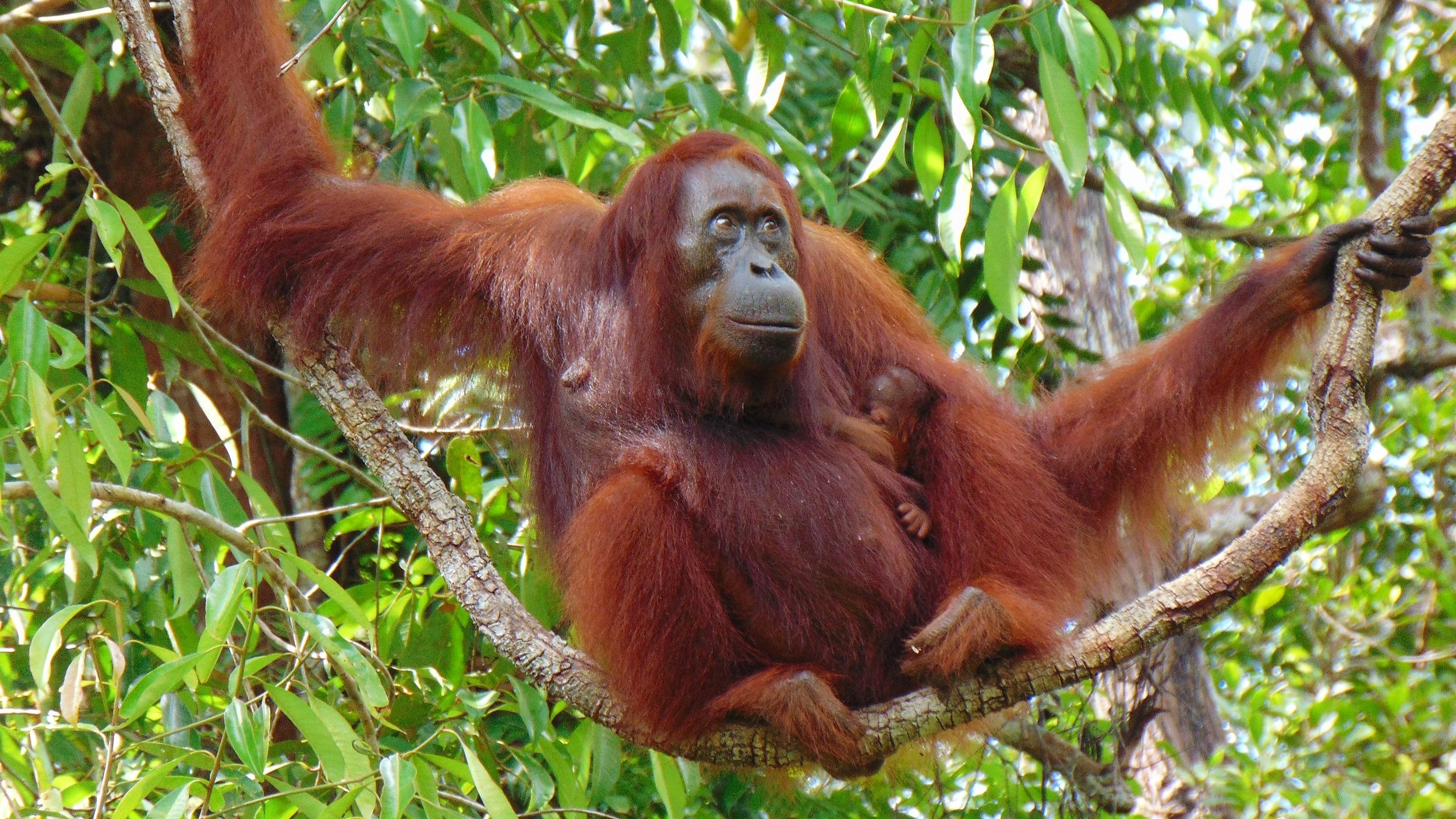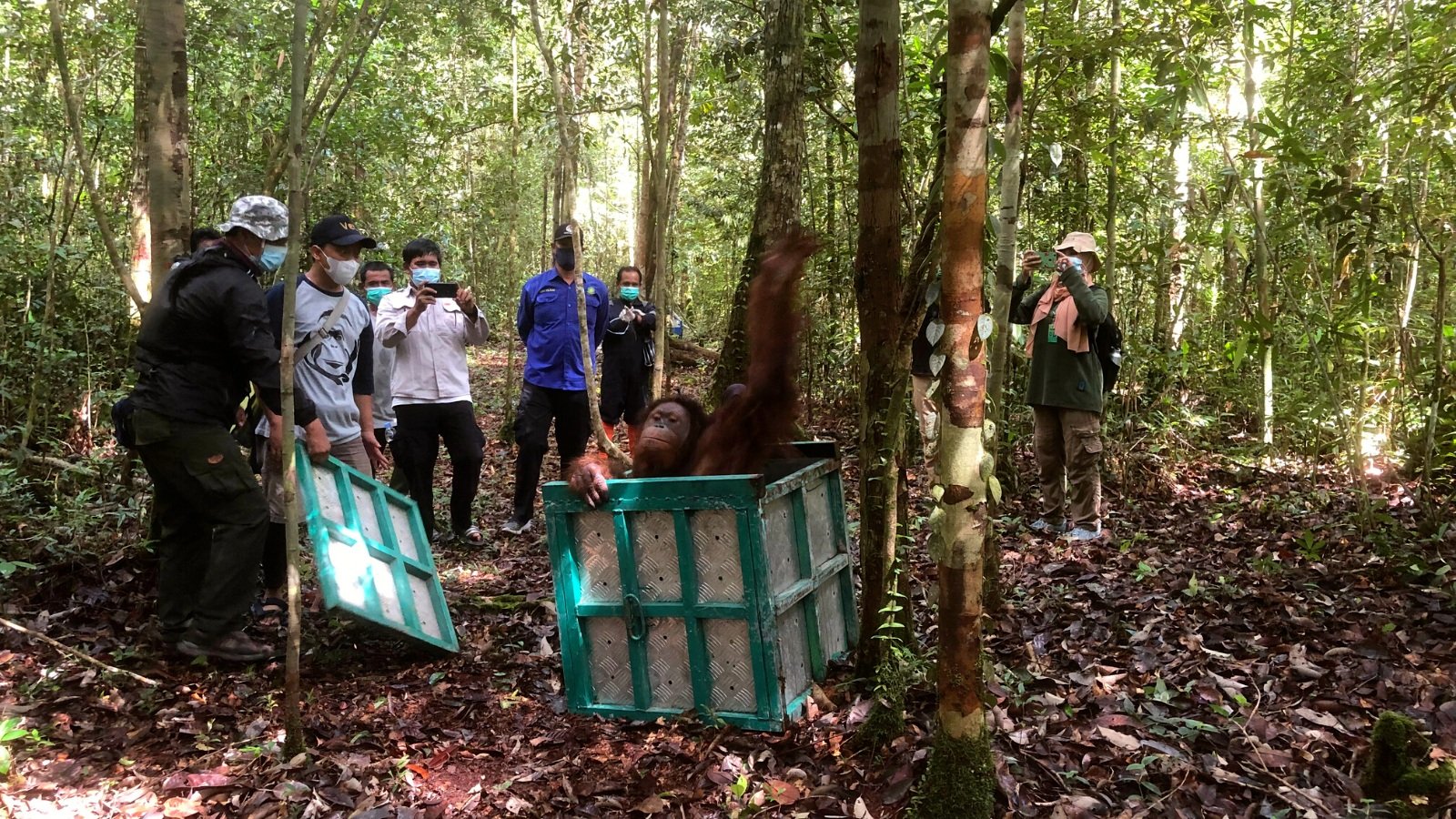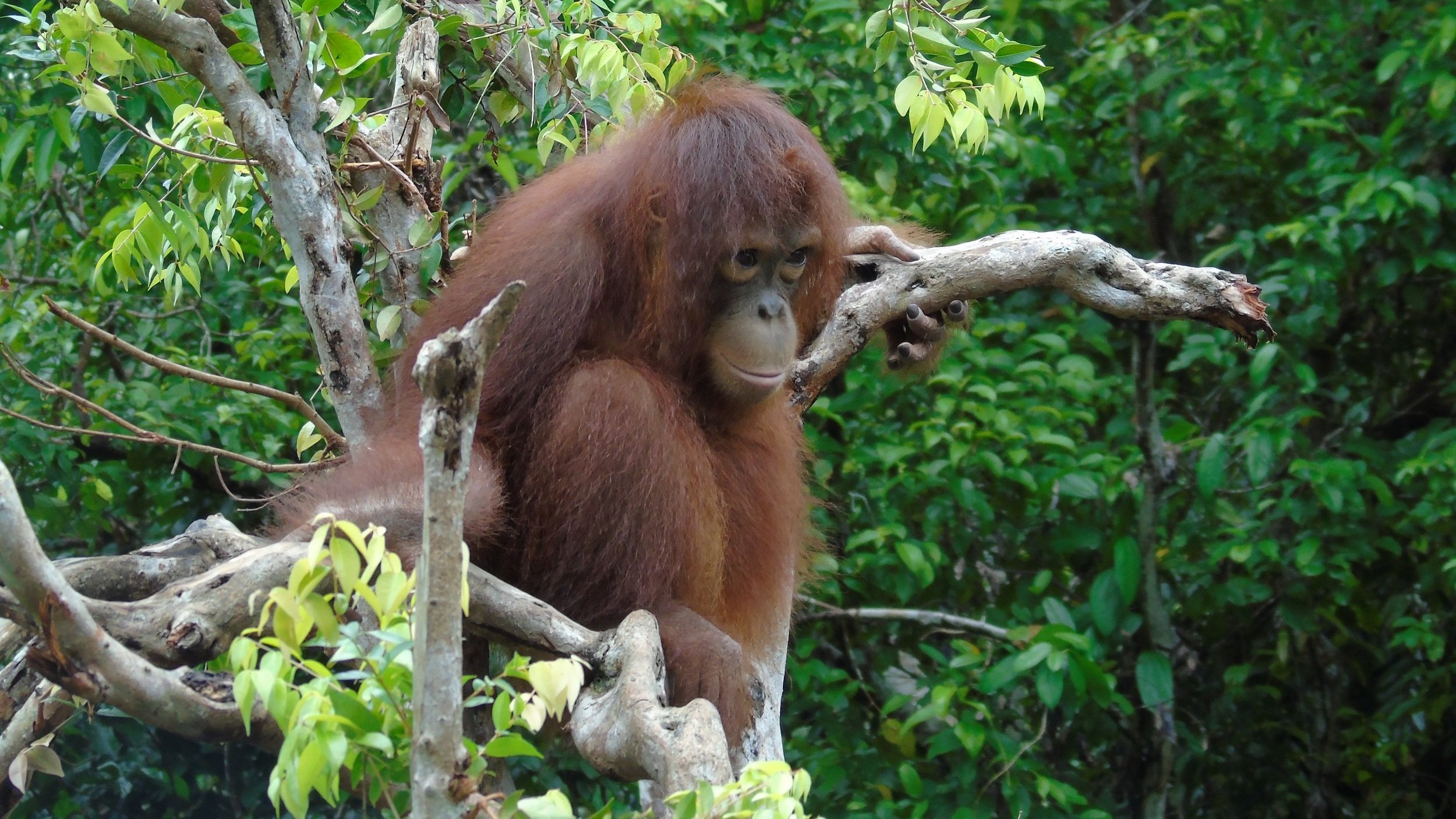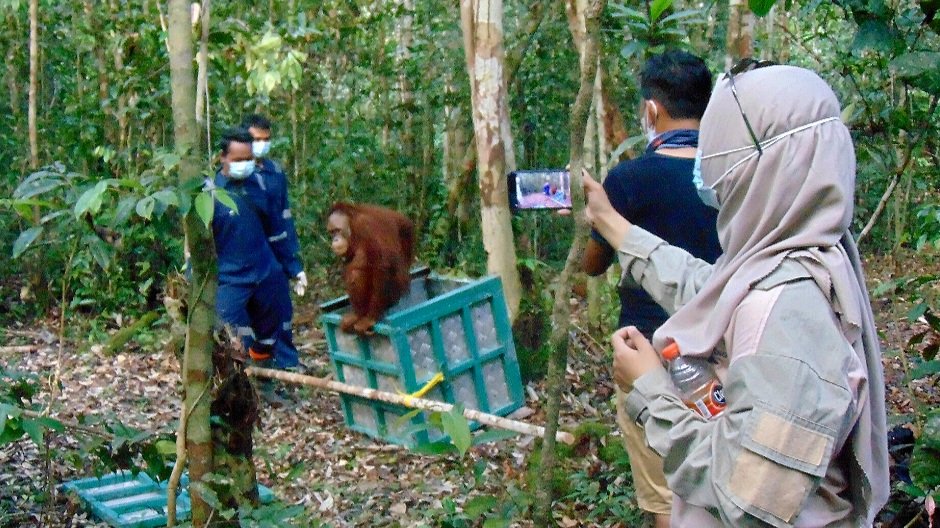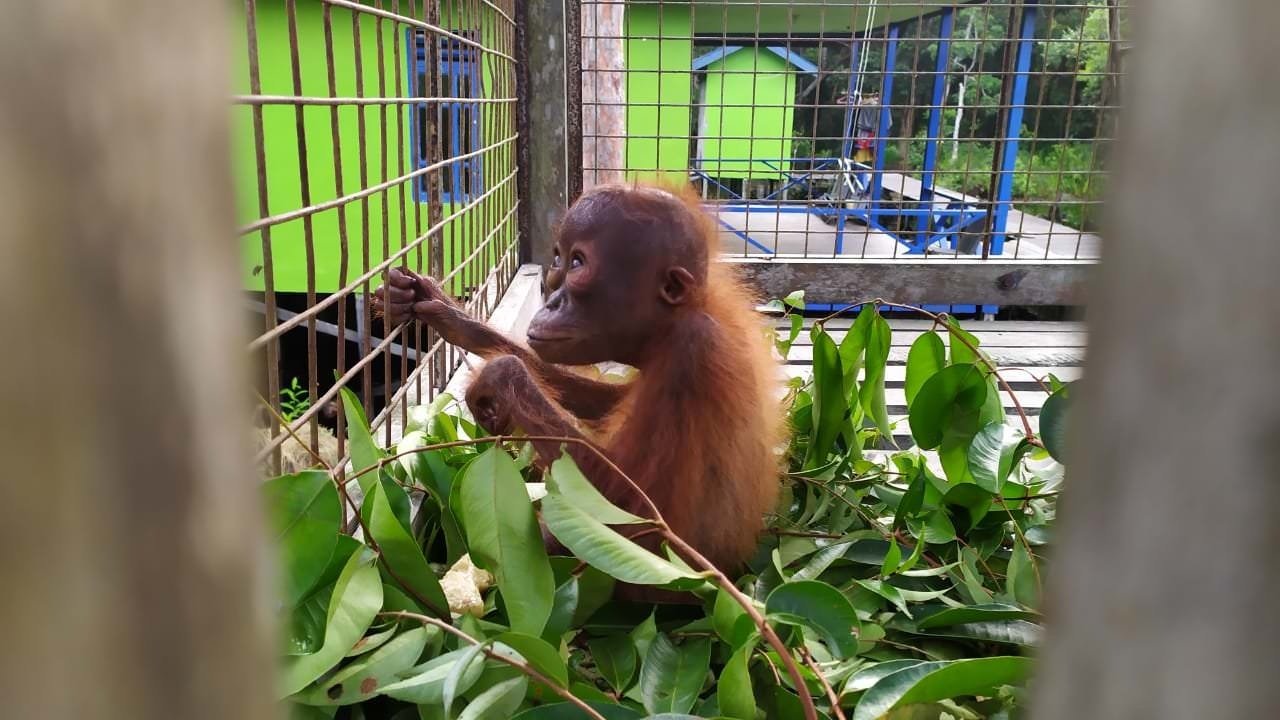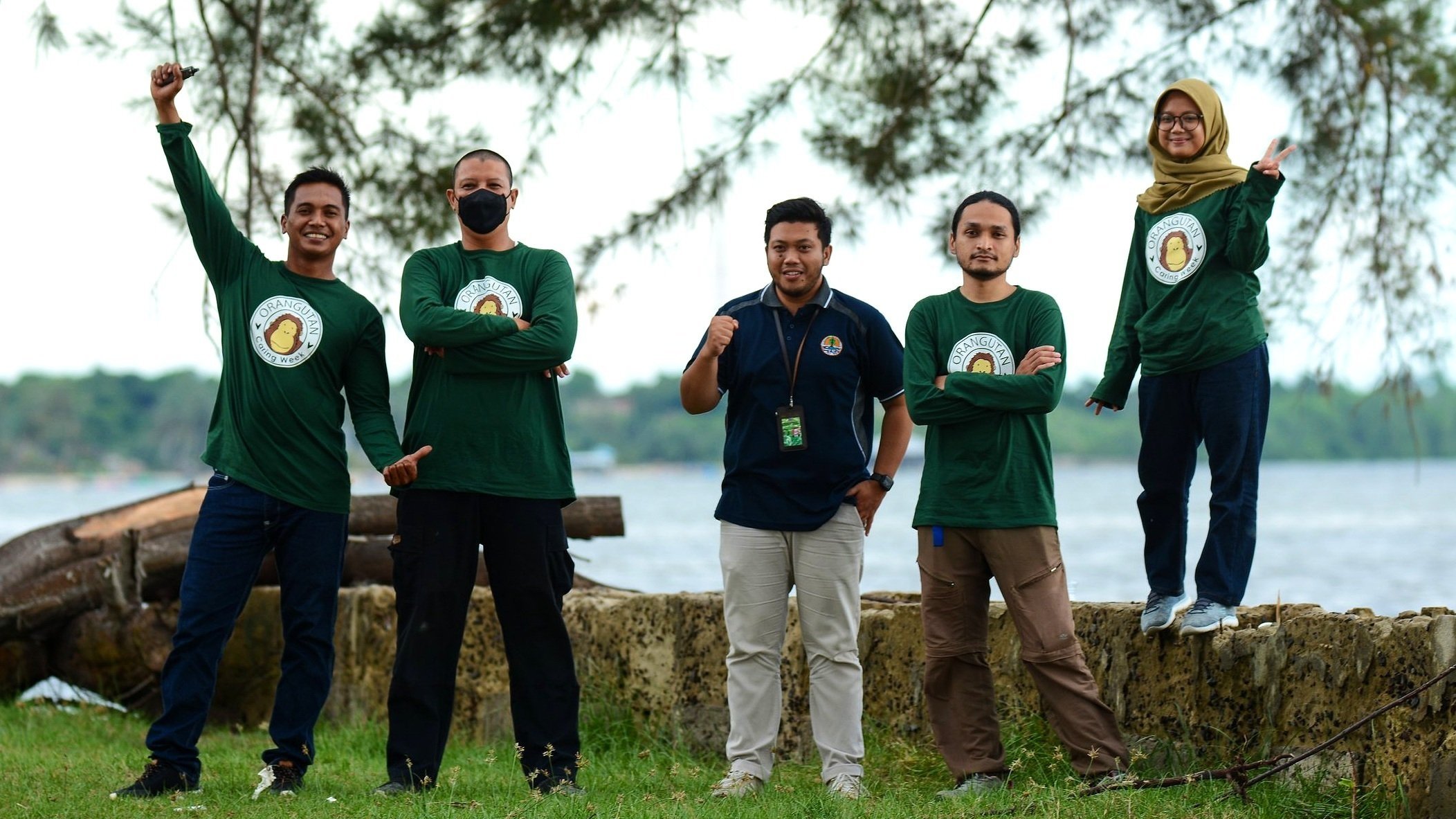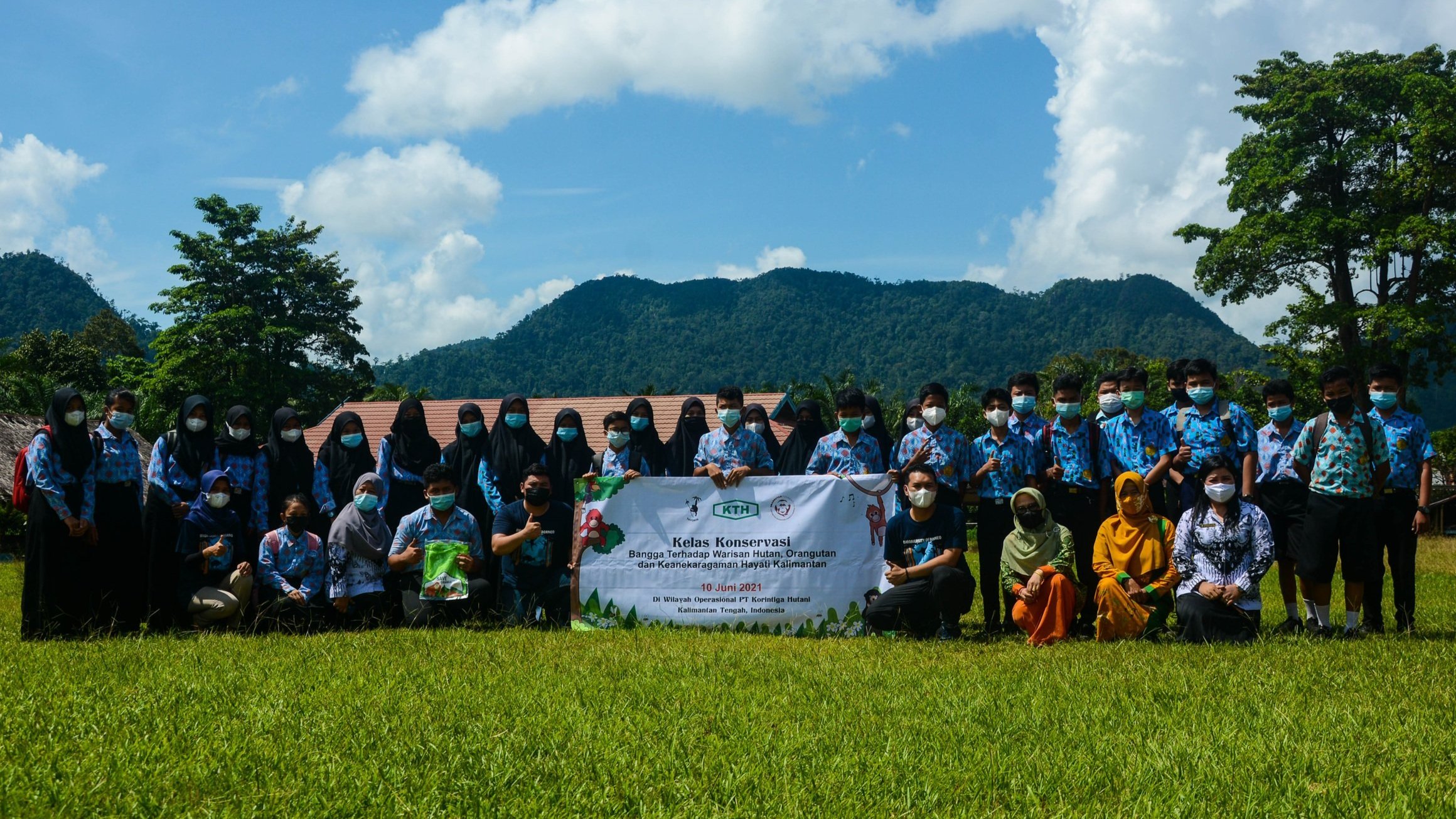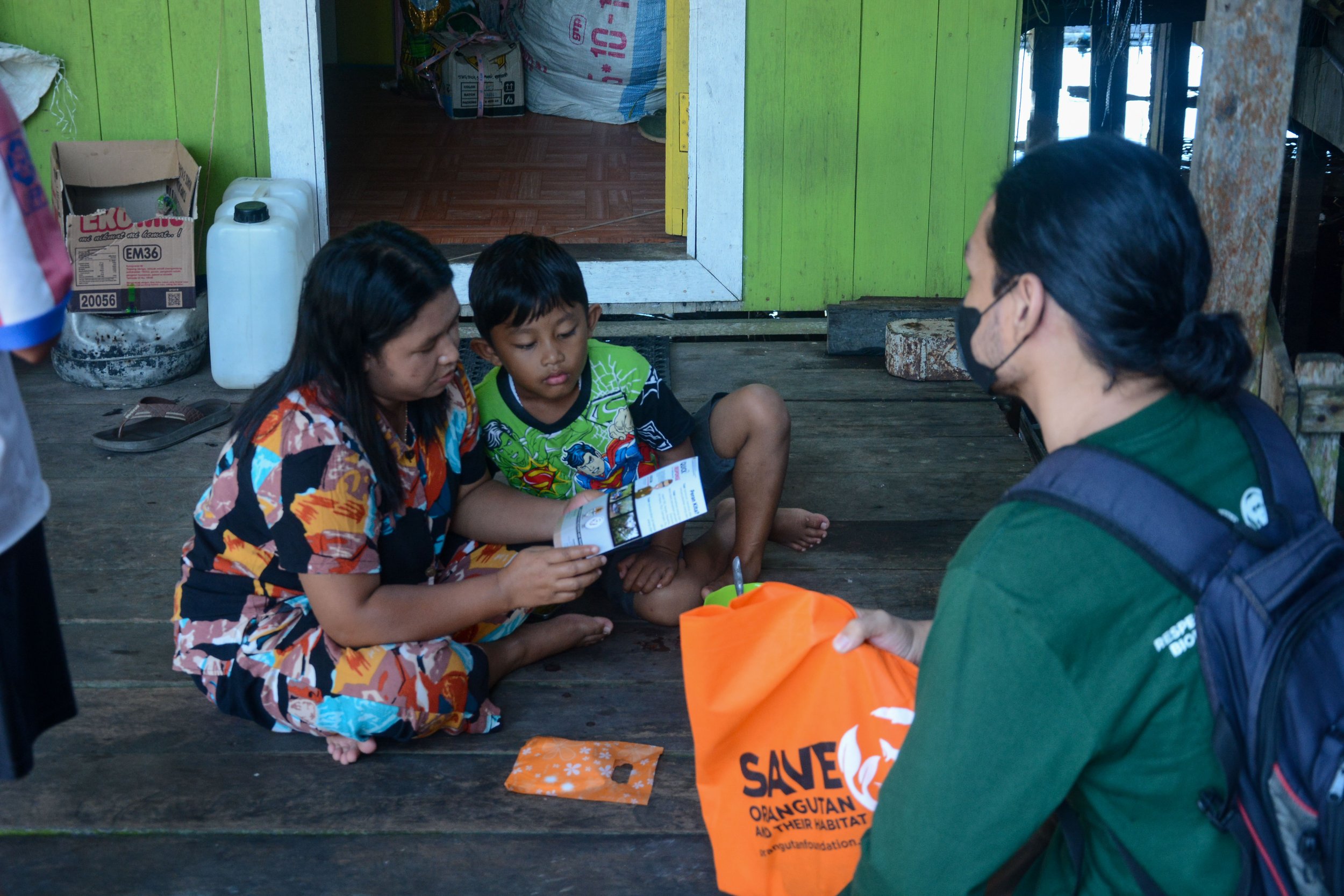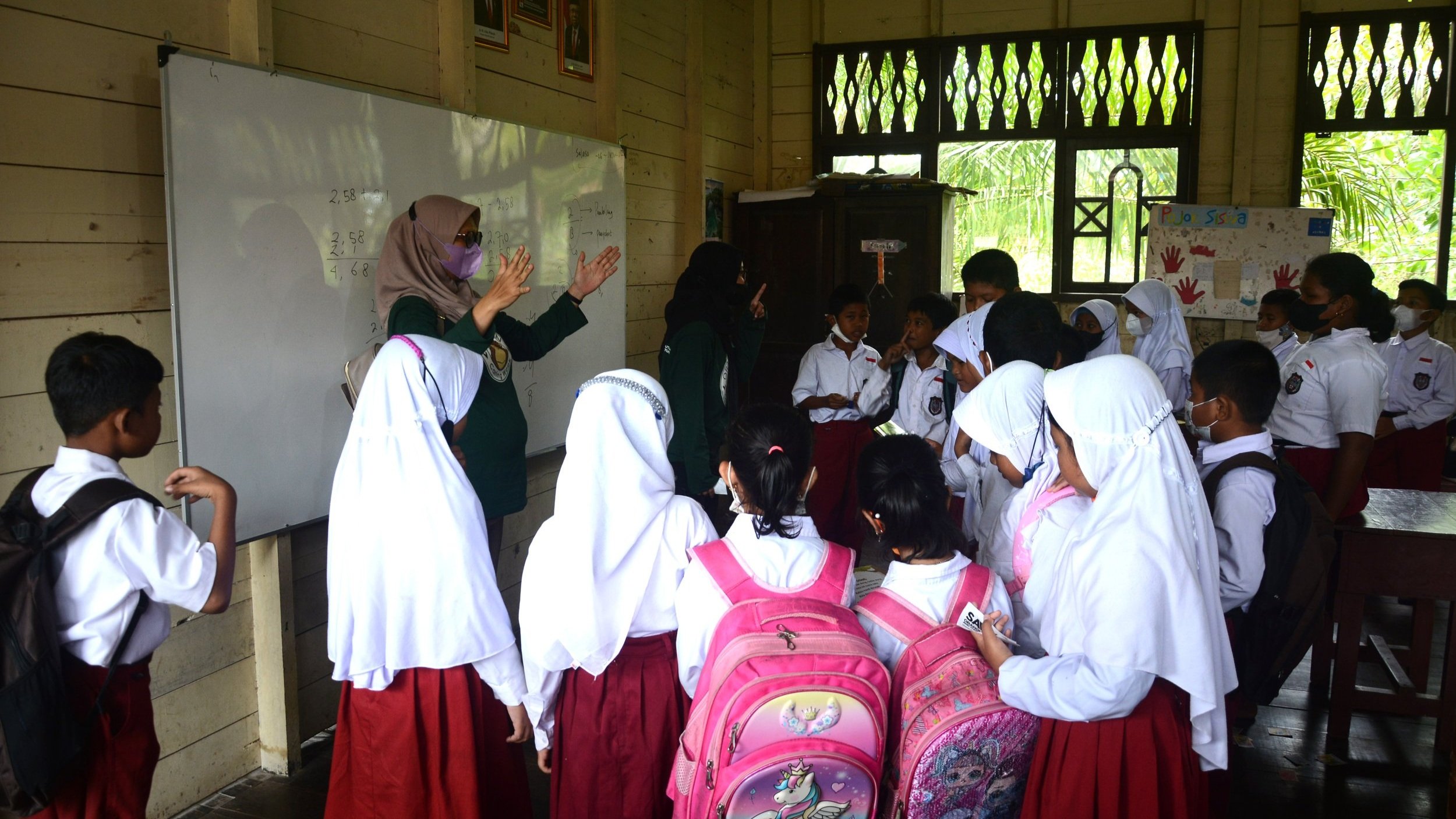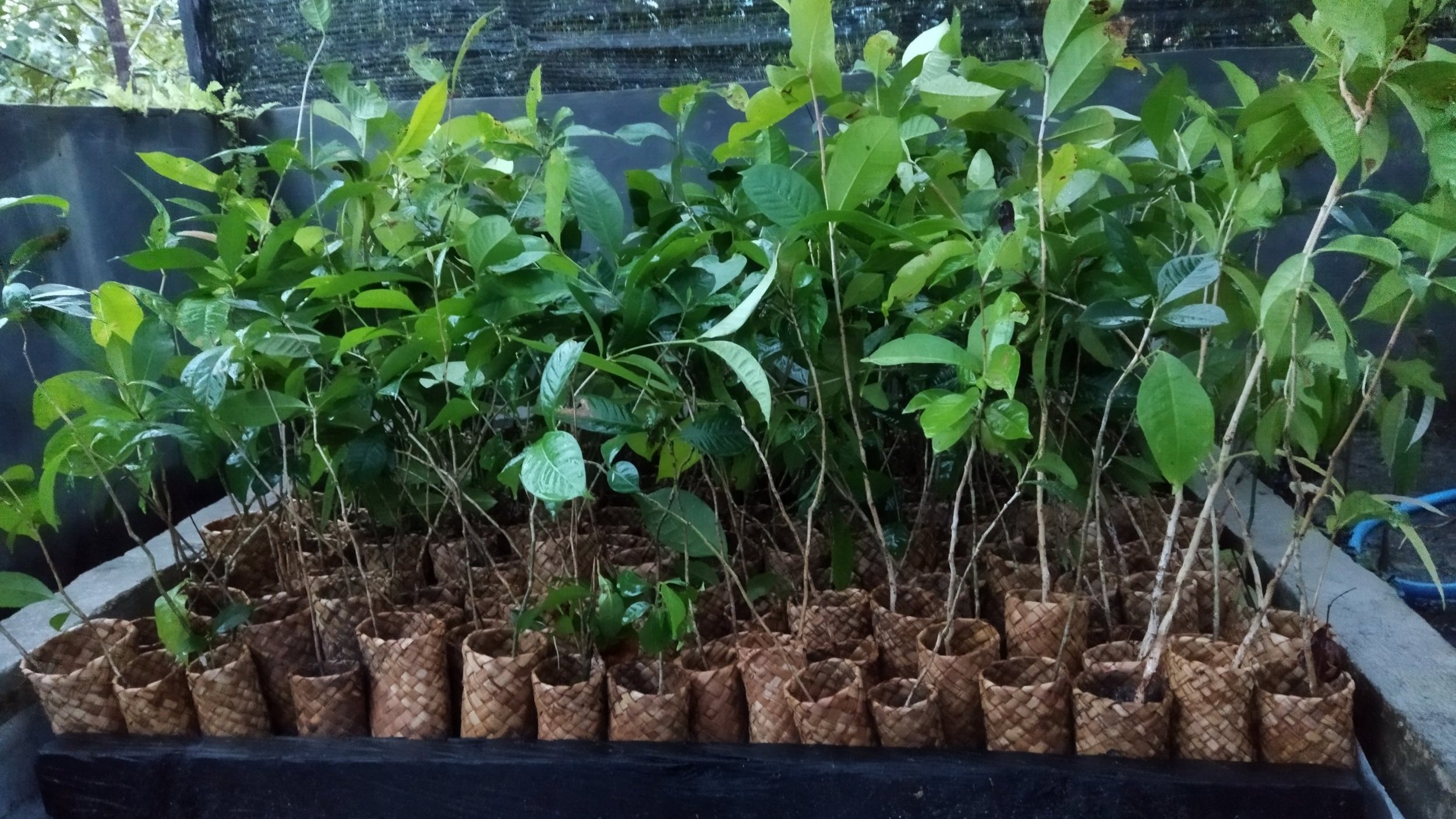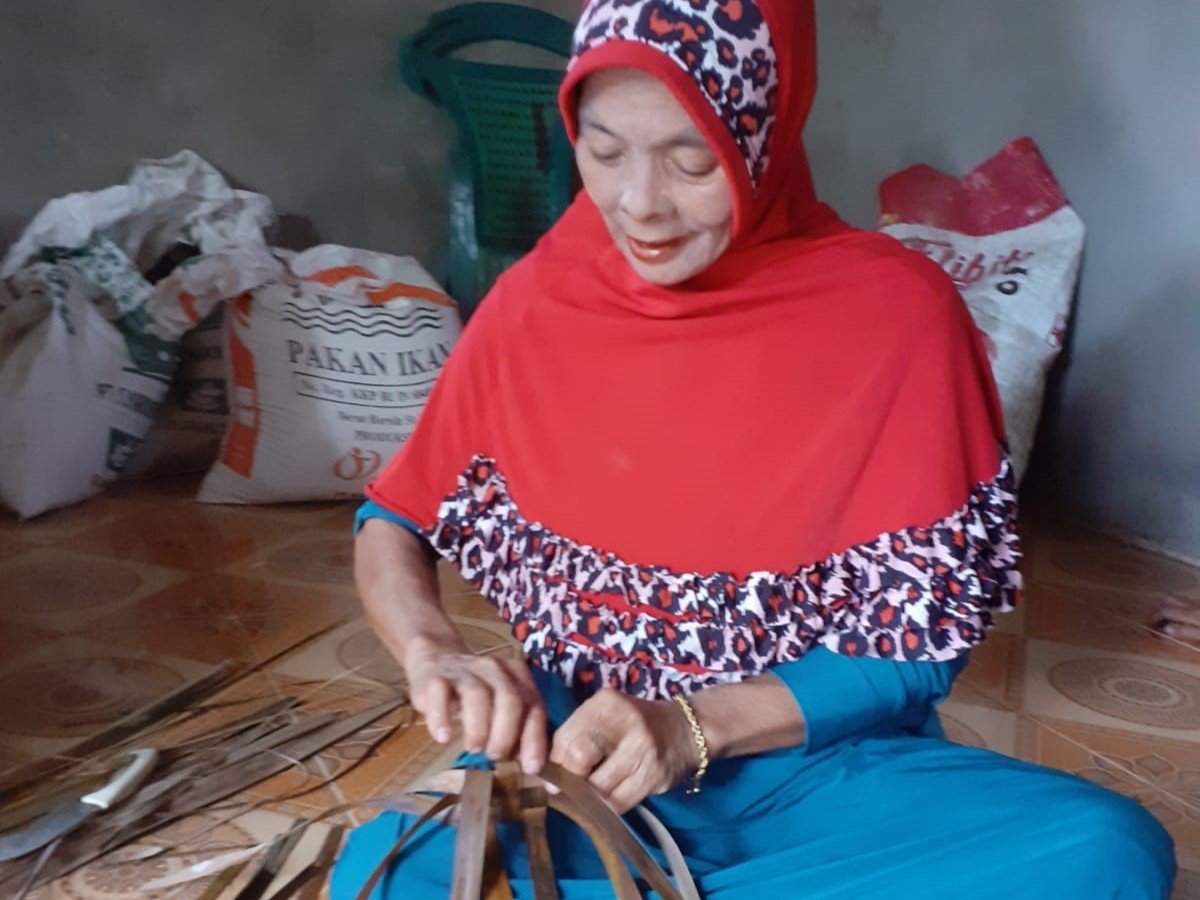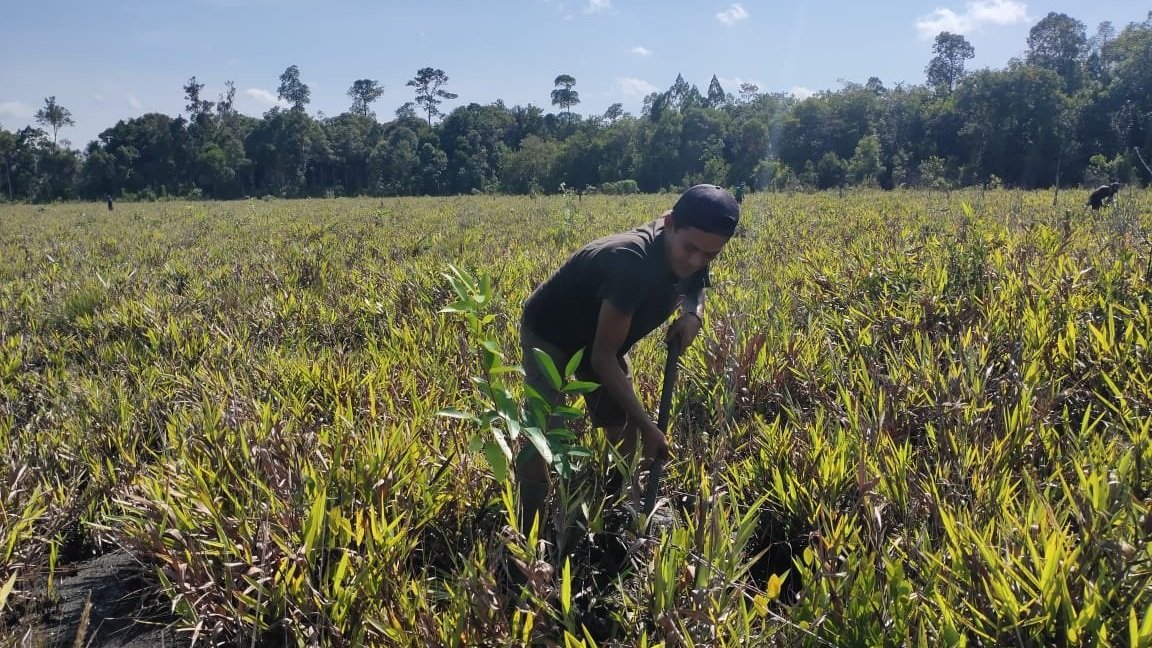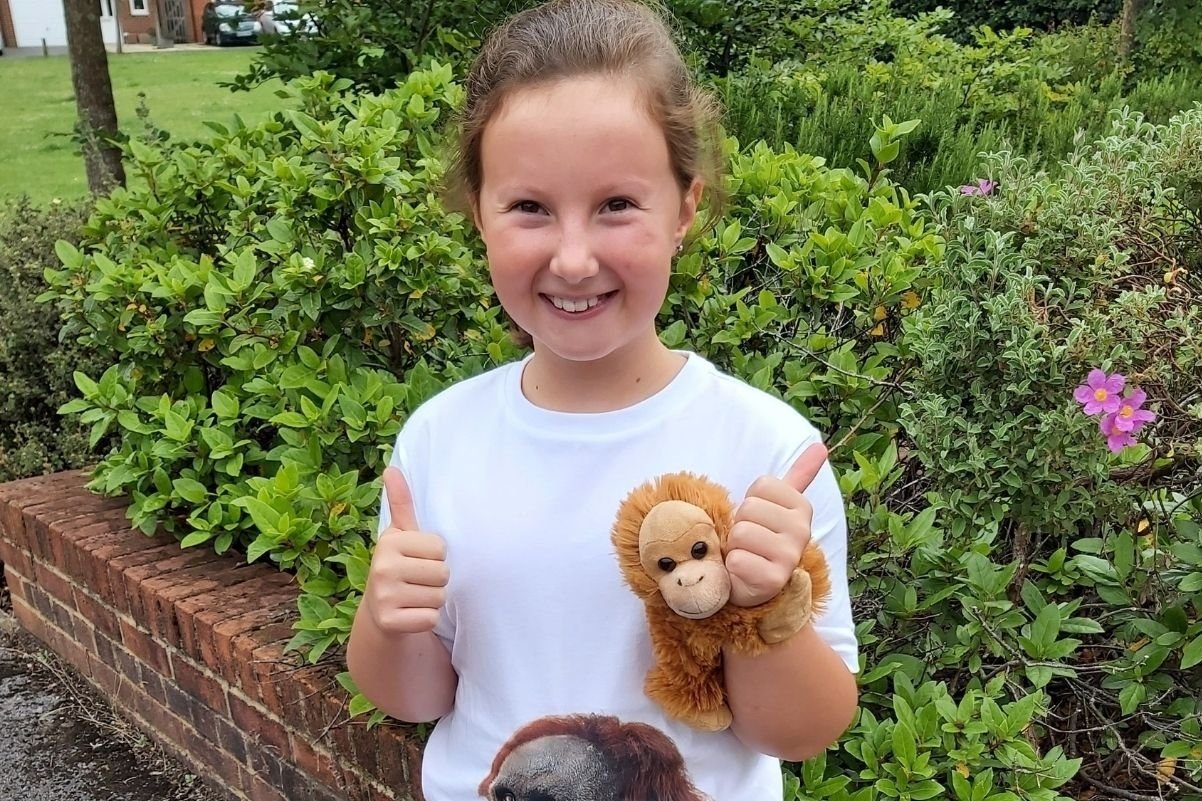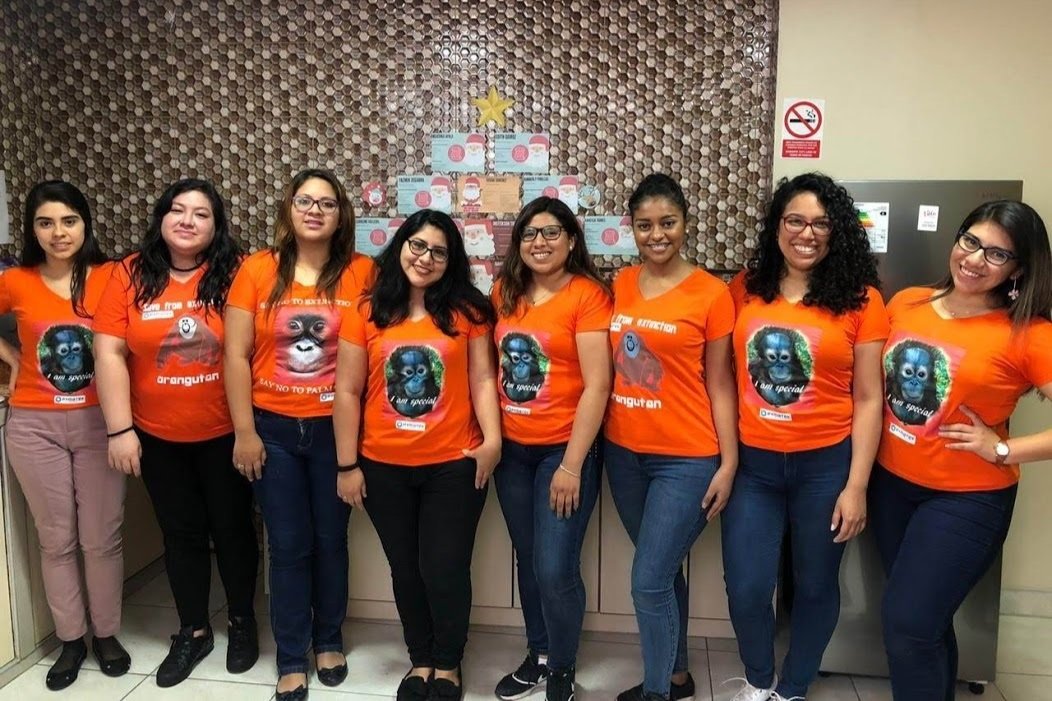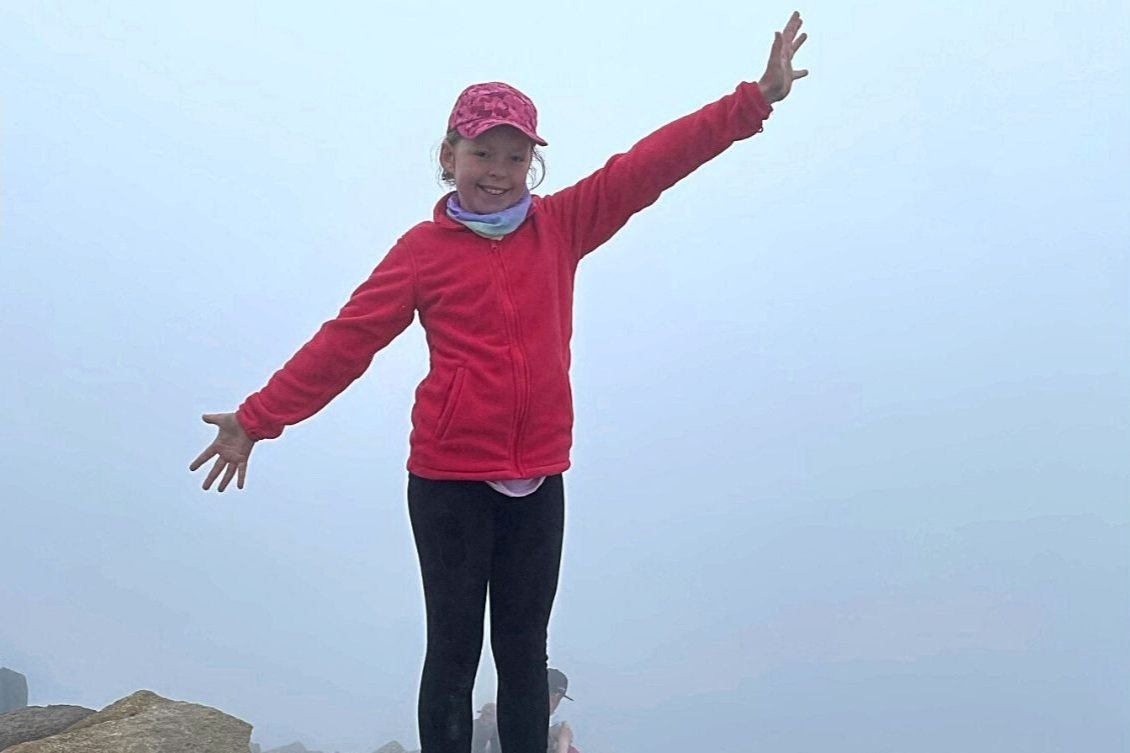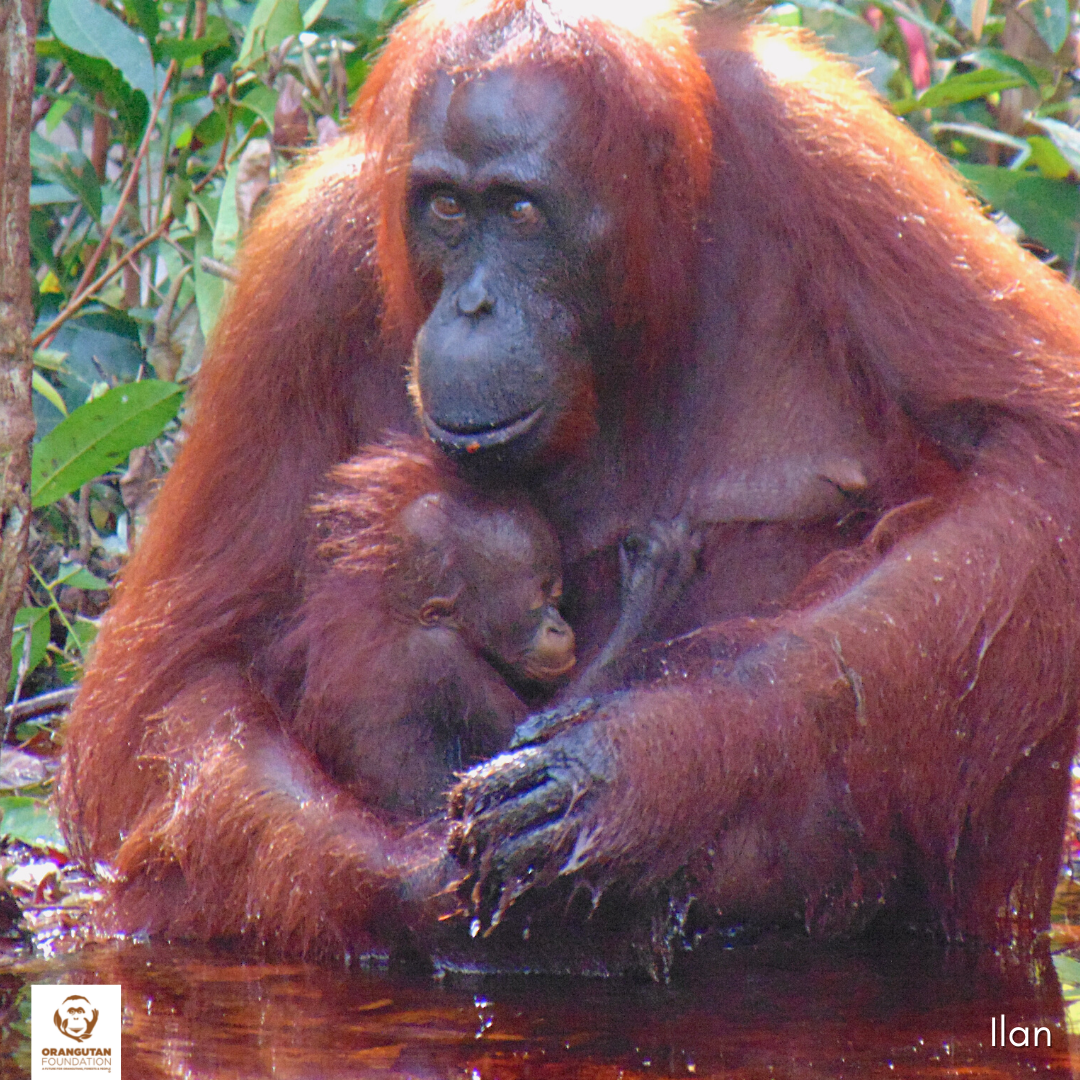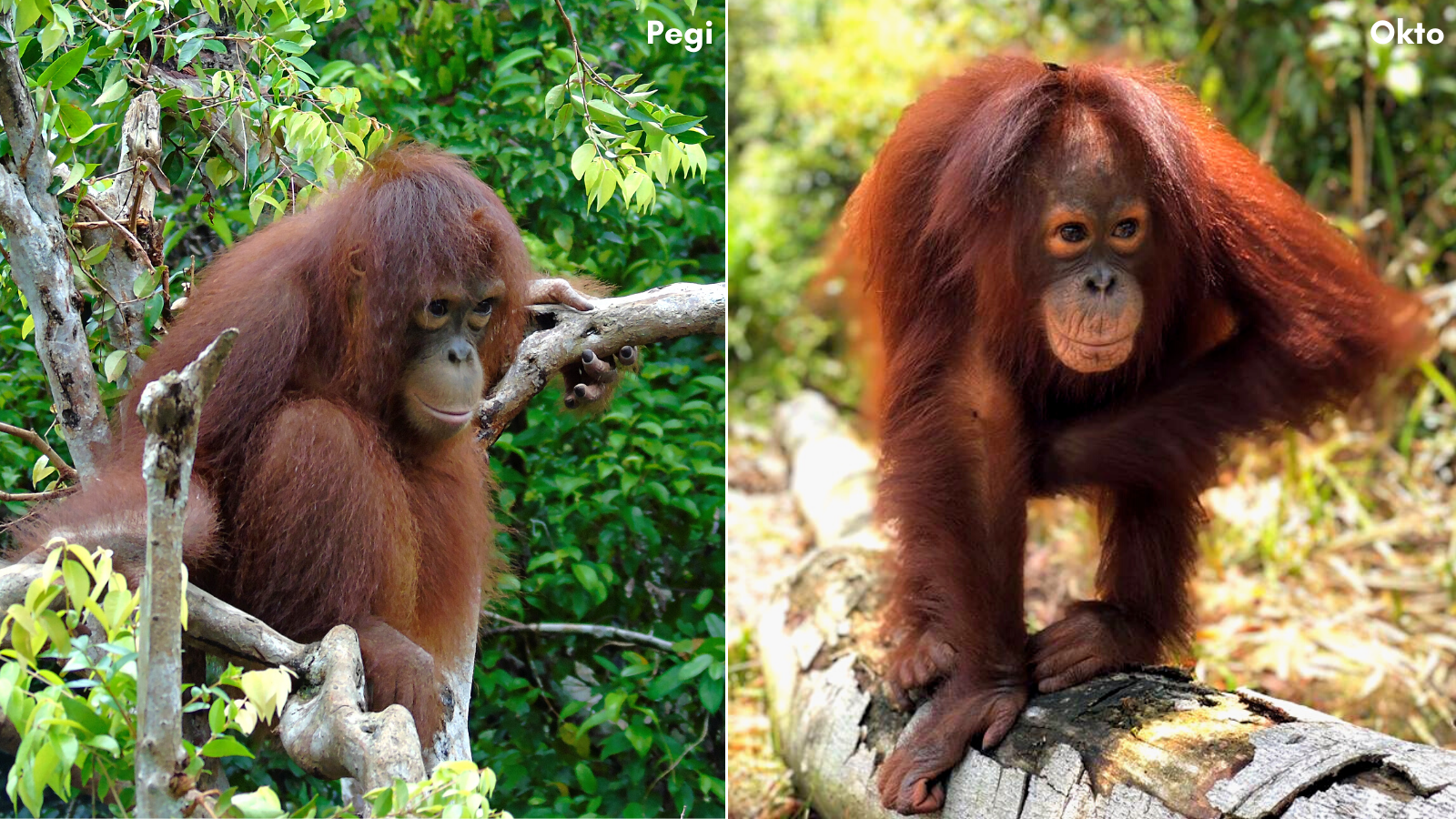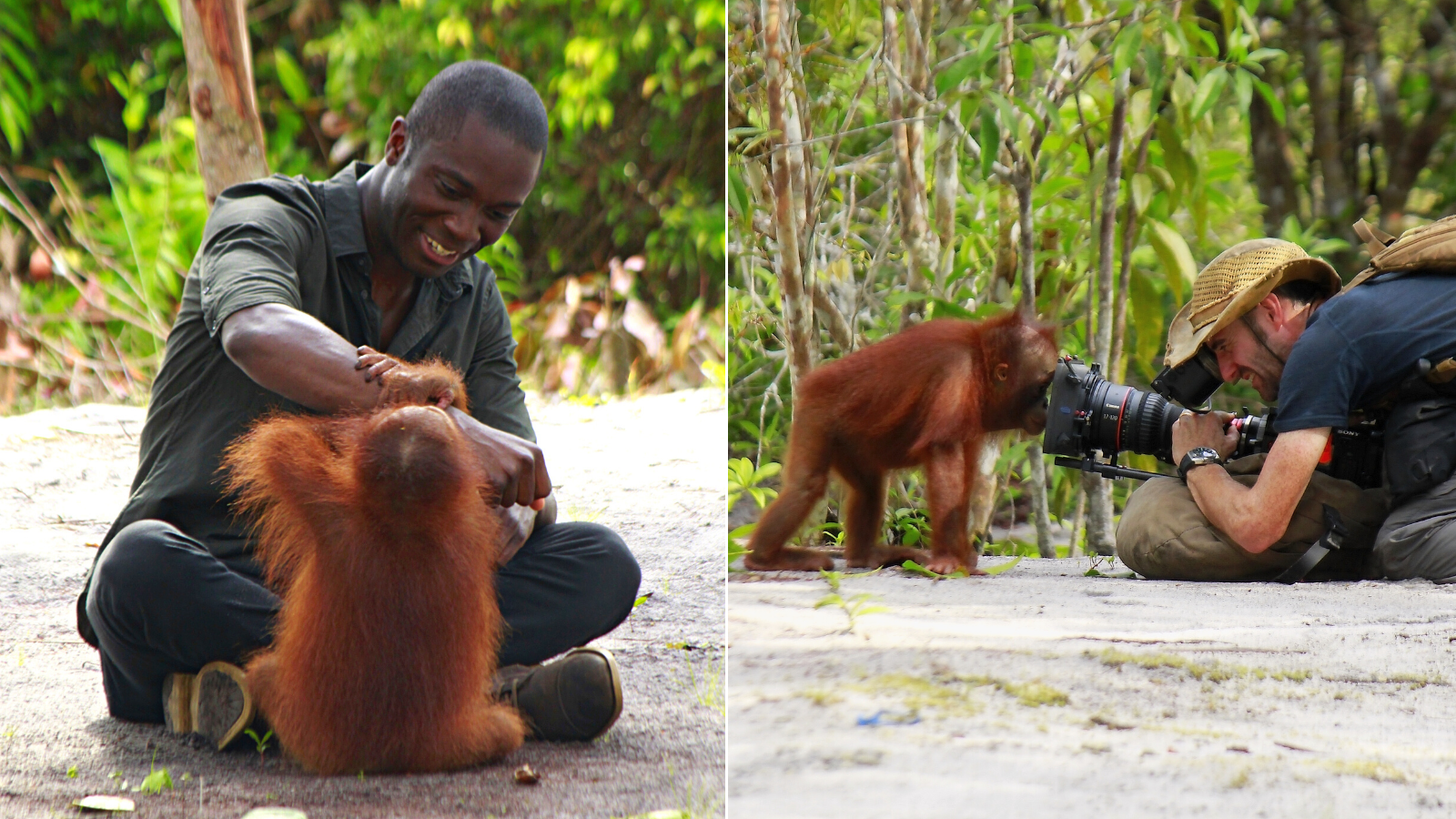Around the age of seven or eight, young orangutans will leave their mothers to lead an independent life in the rainforest. This time is nearing for Ariel, an orangutan born in the wild to Acuy, who was released in Lamandau Wildlife Reserve by the Orangutan Foundation in 2006.
Reflecting on the achievements of 2022 for the Orangutan Foundation
Orangutan Stories: Hasna & Hasan
Orangutan Stories: Mores & Marsha
When our team discover that a female orangutan in the wild is pregnant, there’s a certain energy that’s suddenly felt around camp. Every newborn is vital for the future of this critically endangered species so there’s excitement at the thought of another addition to the population, but also a sense of trepidation, hoping that the birth will go well.
This is how our team at Camp Gemini felt back in 2019 when we learnt that reintroduced orangutan Mores was pregnant for the third time. Every time we would see her moving around in the trees within the Lamandau Wildlife Reserve, we’d crane our necks to see if there was a little newborn hiding under her long orangey hair. It wasn’t until June that our team were finally rewarded. Emerging from the vegetation came Mores clutching her new tiny infant for the first time!
Our monitoring team have to be particularly vigilant for the days following an orangutan birth. It’s the most vulnerable time for any animal in the wild, so to keep a close eye on mother and offspring without disrupting their first moments together is very important.
It was satisfying to see that Mores and her newborn were progressing nicely over the first few days. With her young by her side, she would travel gracefully through the trees and eat plenty of food to keep up their strength. After a while we were finally able to determine that the infant was female, and to follow her mother’s ‘M’ lineage, she was given the name Marsha.
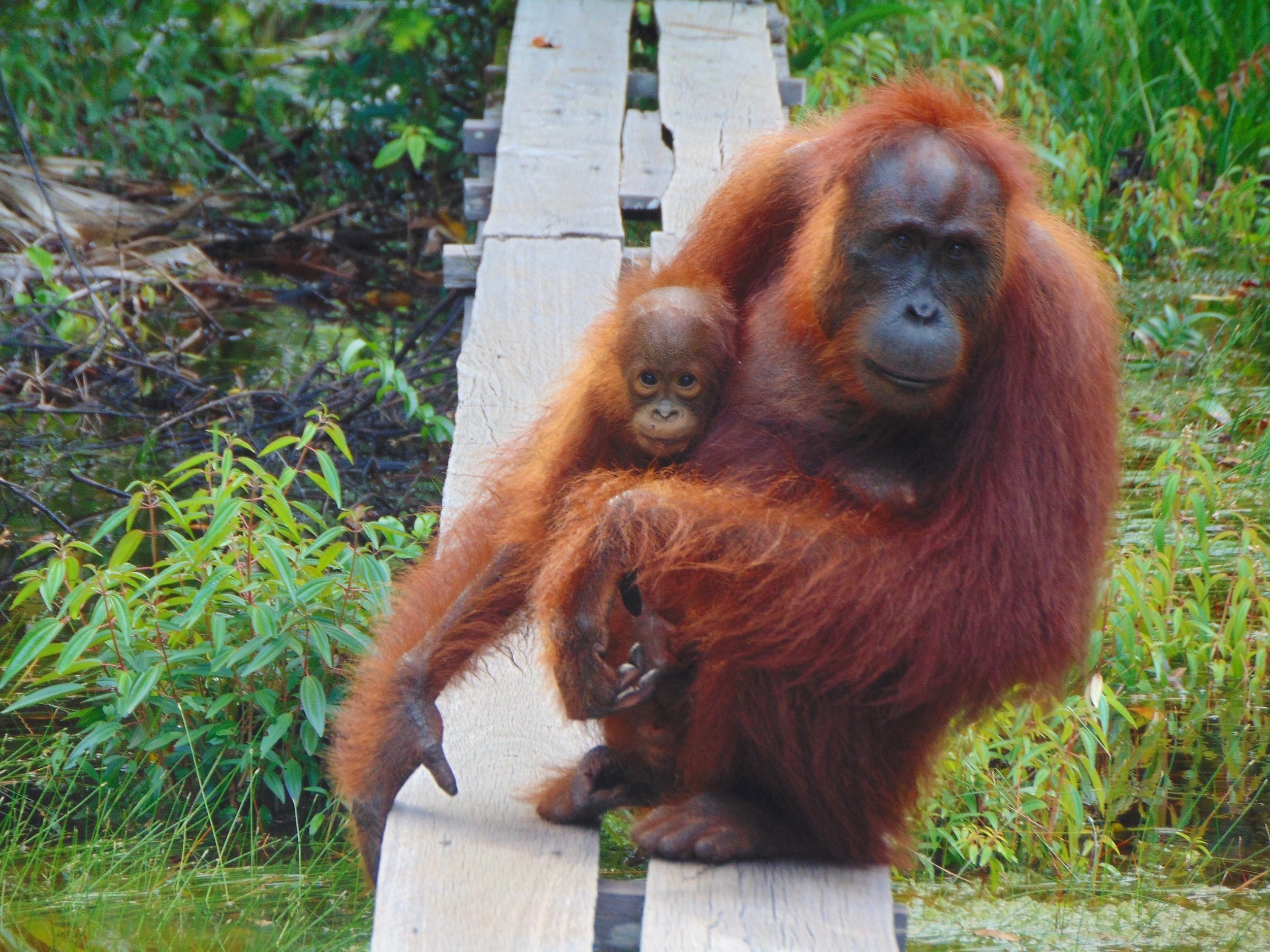
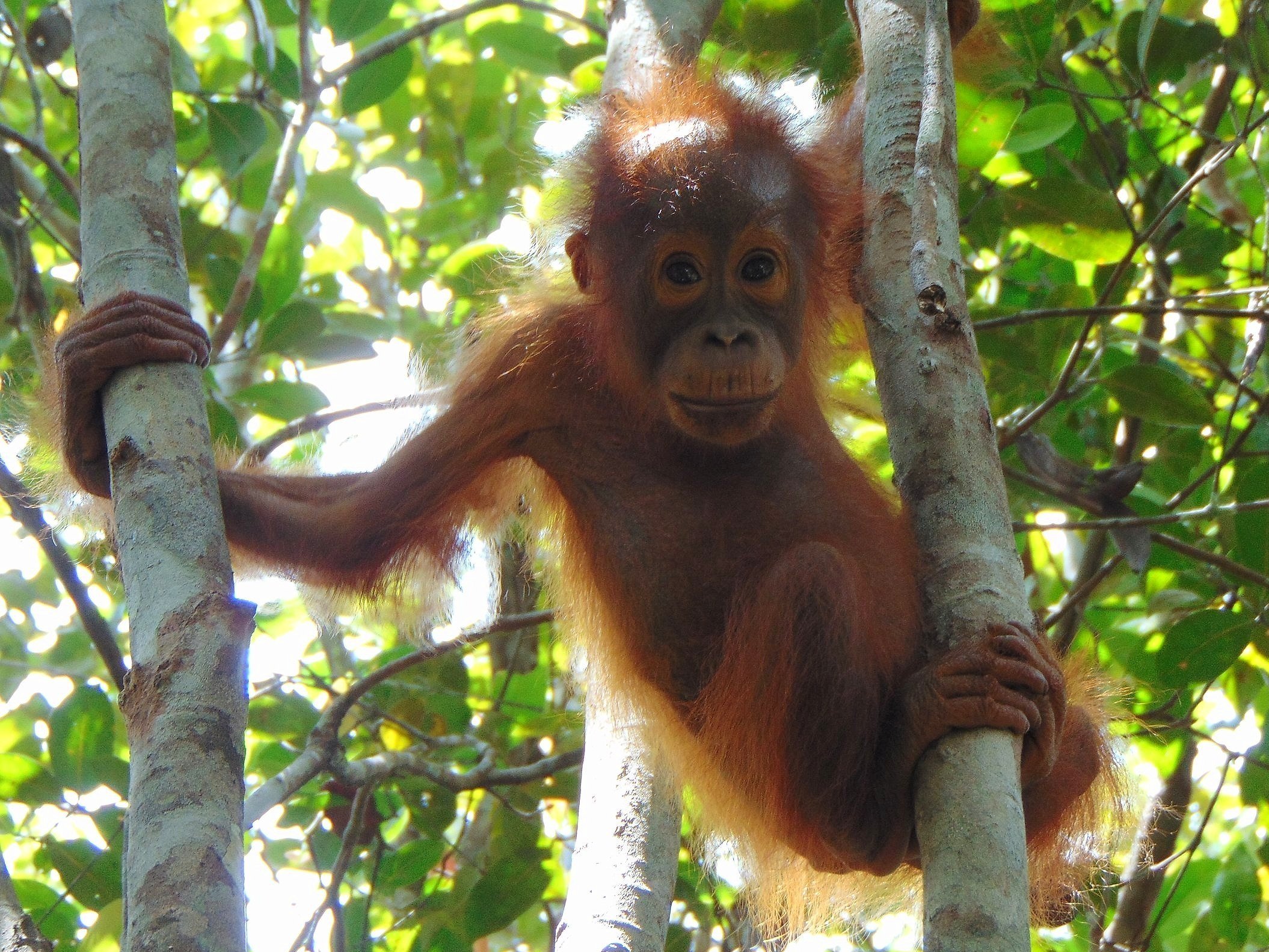
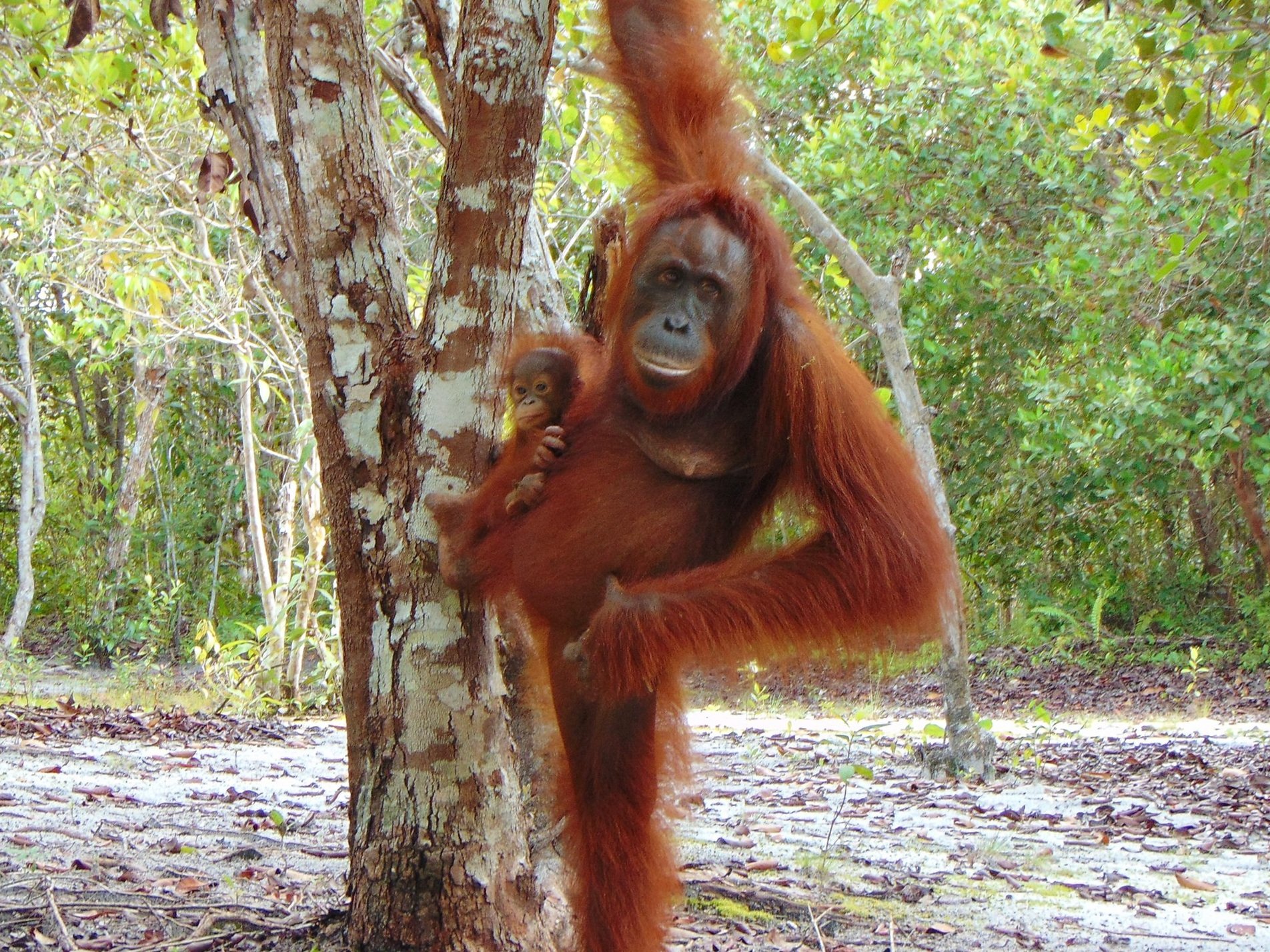
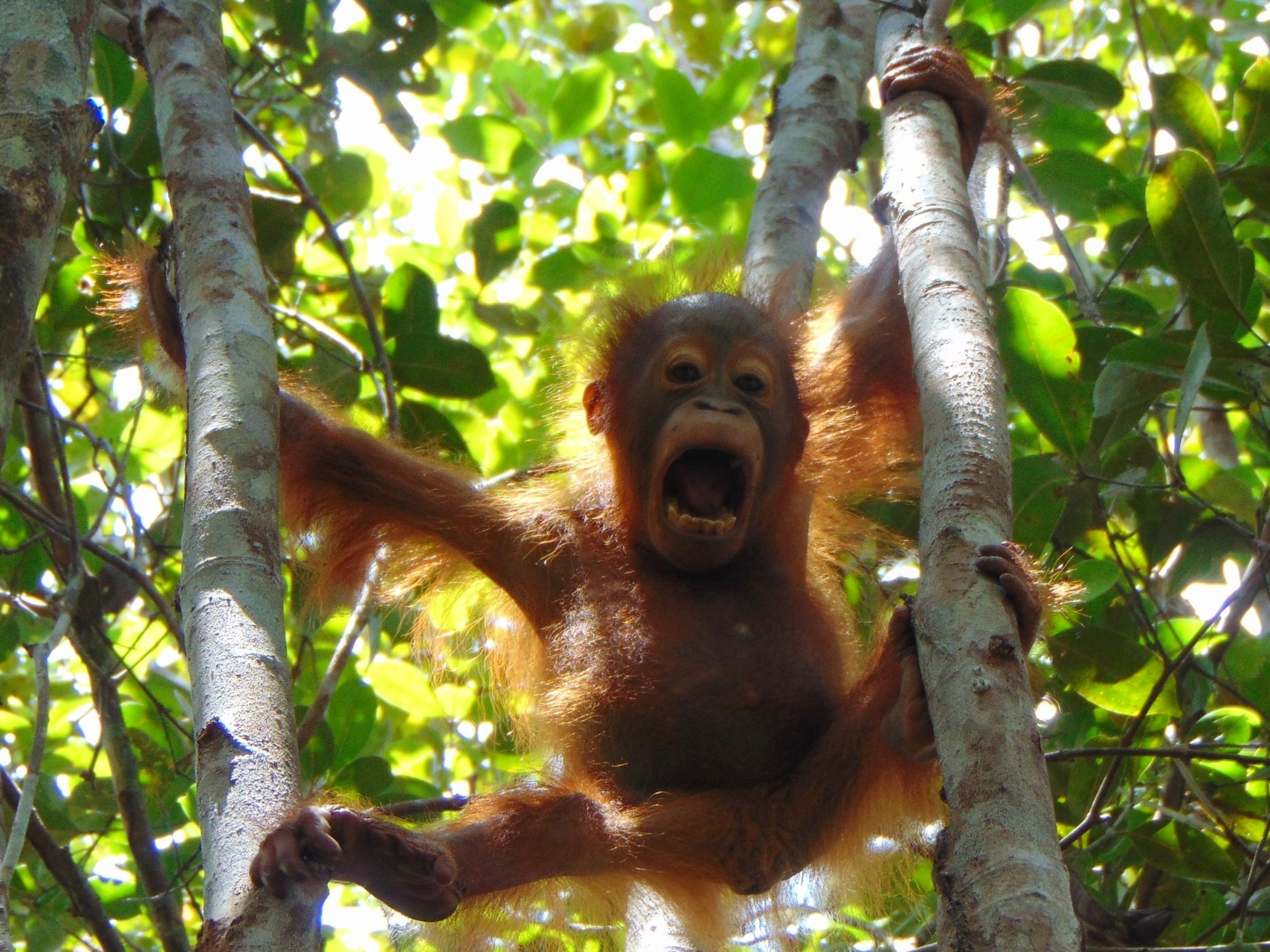

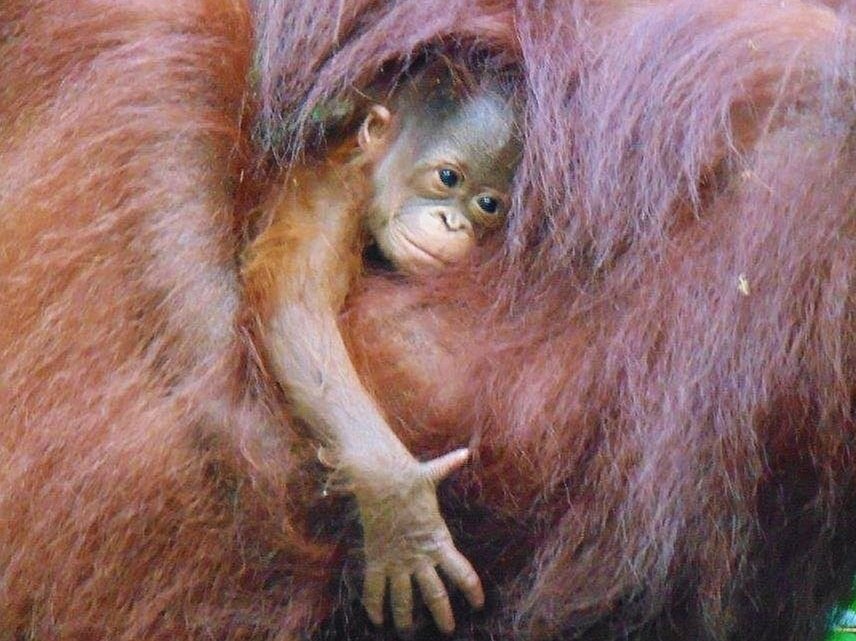

Since then, our staff have enjoyed watching Marsha grow in size and personality in the forest. Witnessing the way her mother climbs, builds nests, and searches for food; the young orangutan is slowly being painted a picture of what an independent life in the rainforest looks like. She still has a few more years to go until she’ll be ready to go it alone, but thanks to her mother’s teachings, Marsha is starting to show the first signs of maturity.
Marsha is Mores’s third offspring, having previously given birth to Marcell and Martin in the wild. For Mores to have grown her family tree so well is truly a fantastic achievement, especially when we consider that she began her life in captivity before her release into the reserve in 2003. A testament to how successful reintroduction can be when orangutans have a safe forest to roam.
It’s fair to say that Mores has played her part for the future of these critically endangered great apes, unfortunately though, not all orangutans have the opportunity to do so in a habitat that is protected. Orphans taken into the illegal pet trade have an uncertain future, but at the Orangutan Foundation our staff can offer a route back to the wild through our soft-release programme. Please click below to find out how you can adopt an orangutan today and ensure orphans as young as Marsha also have the chance to be independent.
Orangutan Stories: Queen & Quentin
The connection between an orangutan mother and her infant is almost unparalleled in the natural world. While other great apes like gorillas and chimpanzees congregate in groups so each one can contribute to parenting in some way, an orangutan infant has up to eight years of one-on-one time with its mother and is therefore totally dependent on her to survive.
Queen is spotted with her new born Quentin for the first time
In the early stages, every aspect of a young orangutan’s life is catered for by the mother: Travel- They hold onto her as she climbs and swings through the forest. Food- Even when they’ve grown out of breastfeeding, their mother will find the best fruiting trees to keep them well-nourished. Shelter- Every night they’re kept warm and safe up in the forest canopy by a nest that their mother fashions out of branches. It’s why when young orangutans are discovered in the wild or in captivity without their mother, there’s a challenging path to independence that lies ahead for the orphan.
Young orangutan Quentin can rely on his mother Queen for support
This powerful maternal bond is clear to see when our monitoring team watch female orangutan Queen care for her infant Quentin in the Lamandau Wildlife Reserve. The young male was born two summers ago in the forest surrounding Camp Buluh, and today the pair are ever-present around camp, enabling us to accurately study his development.
Their favourite pastime it seems is to forage for food along the riverbanks. Whether searching for fresh pandan leaves to eat by the water’s edge, or fishing for fallen fruit in the river, Queen will often place Quentin on her head to stay dry as she wades through the water.
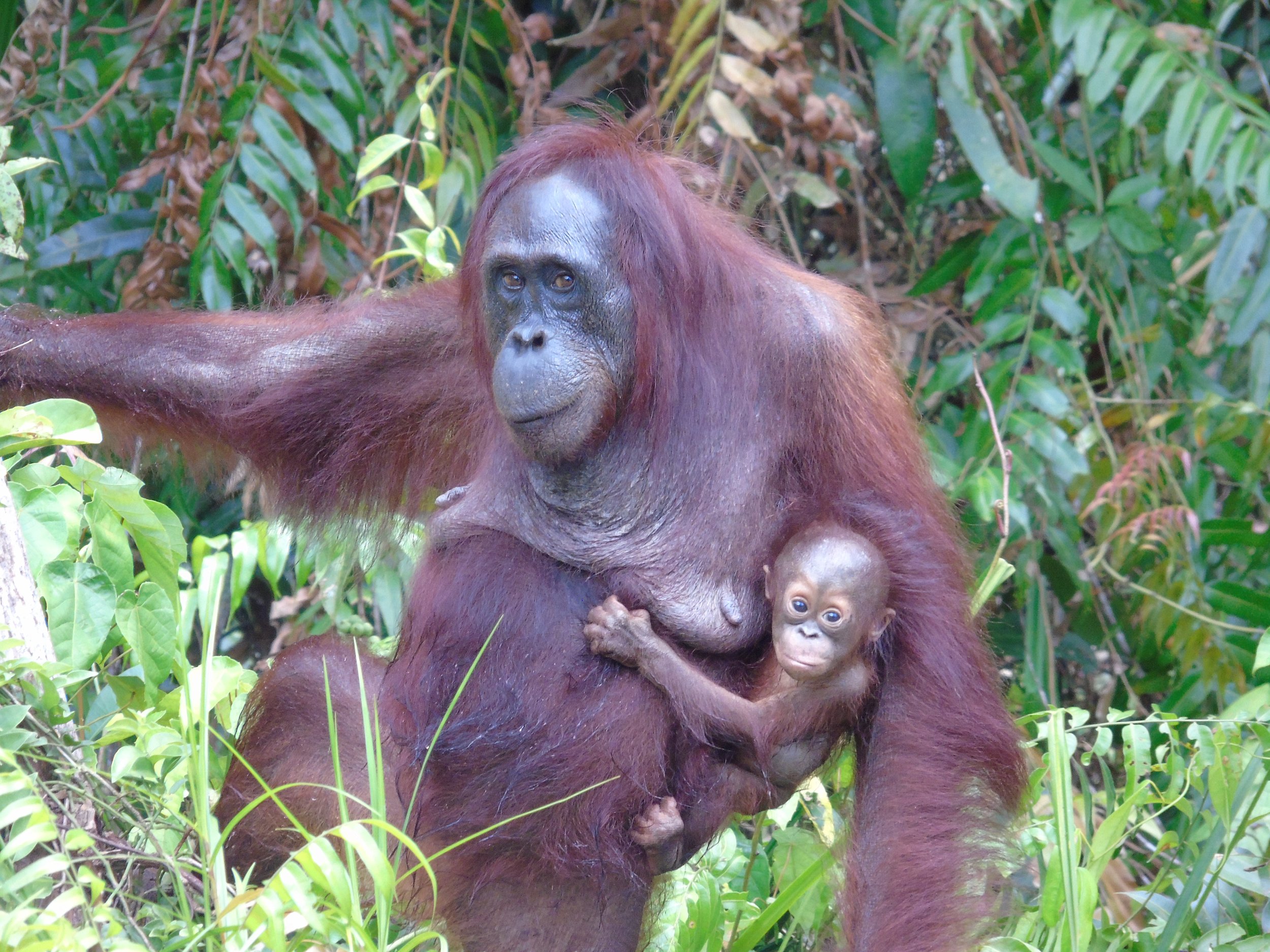
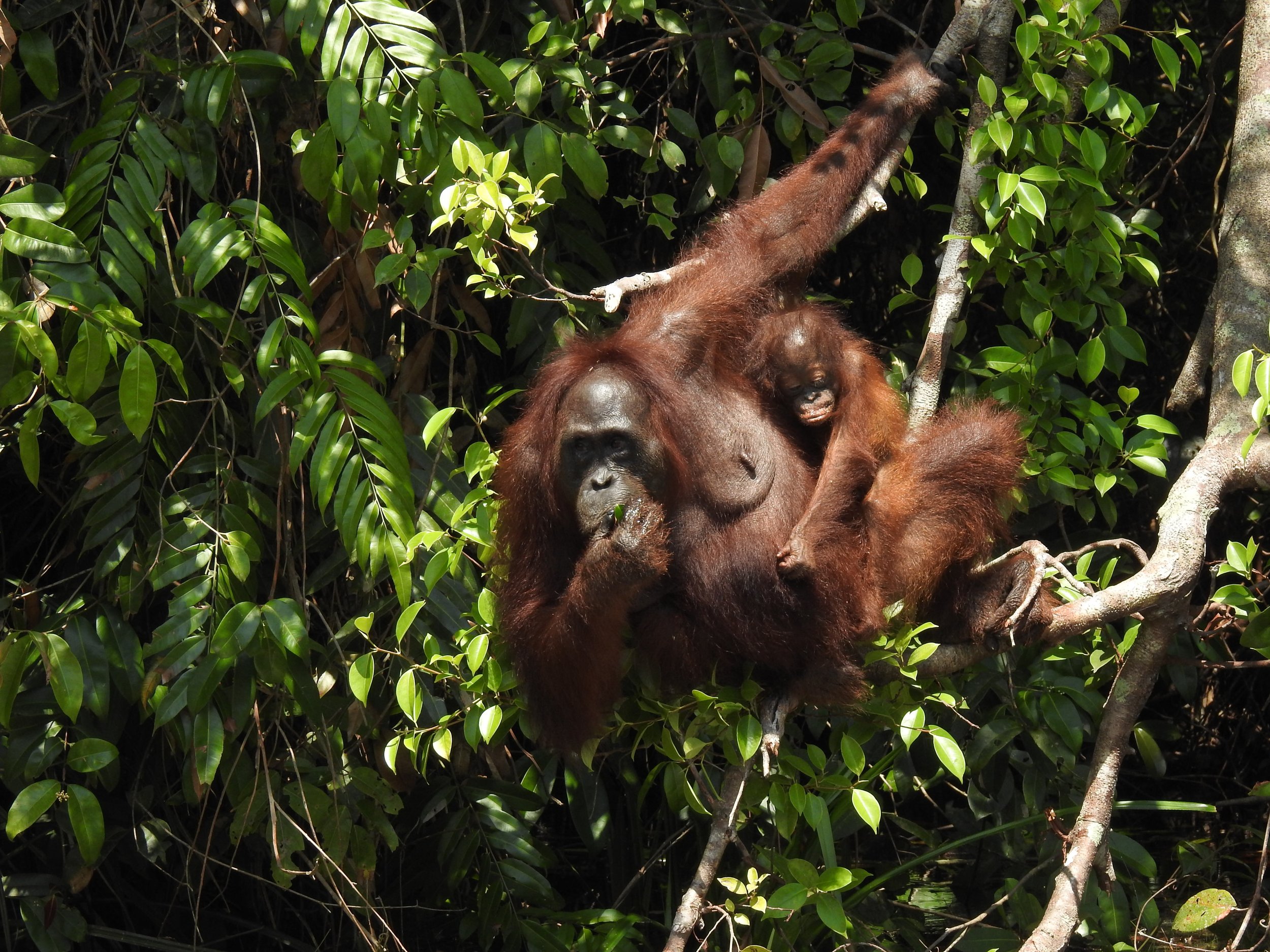
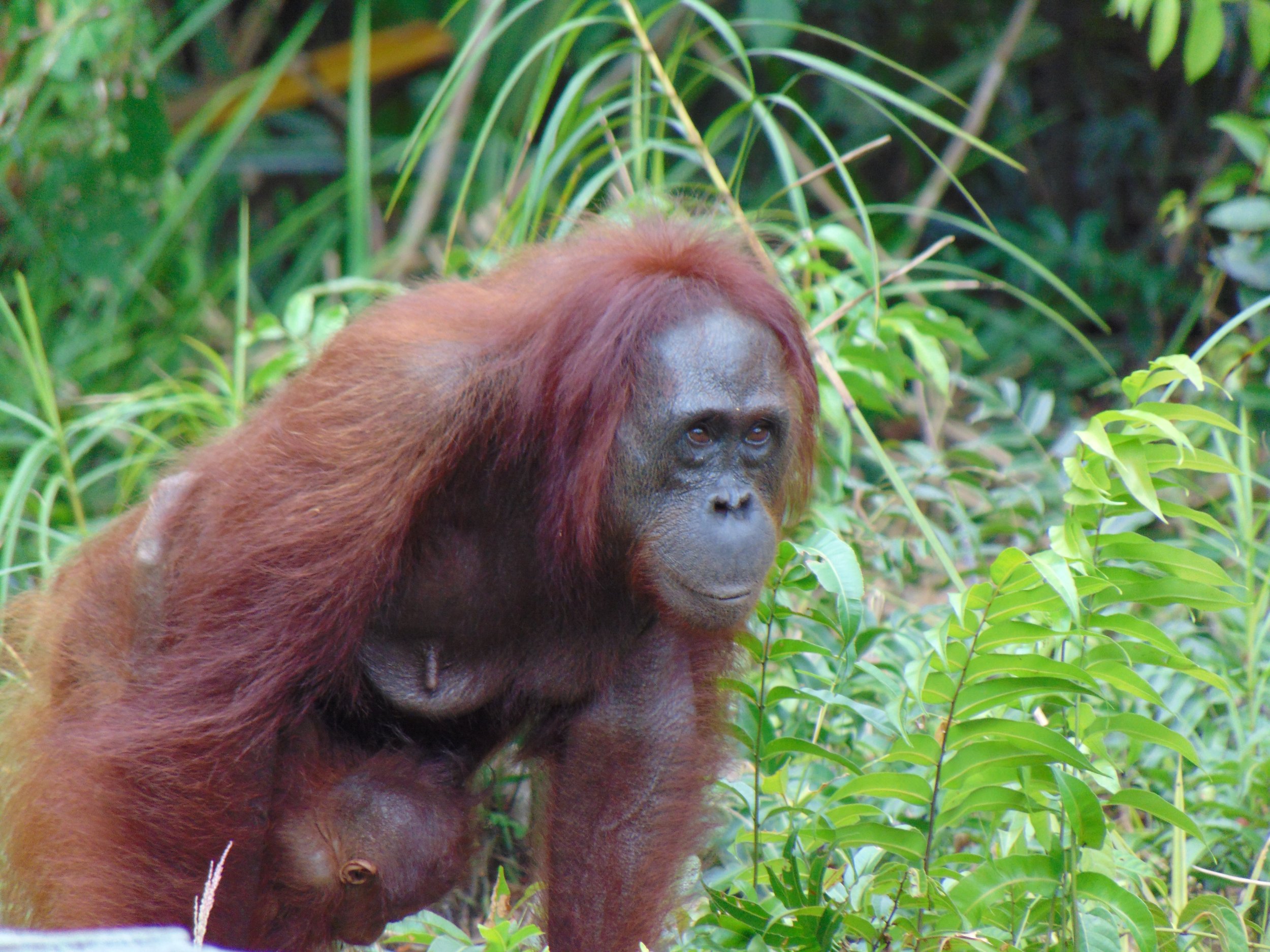

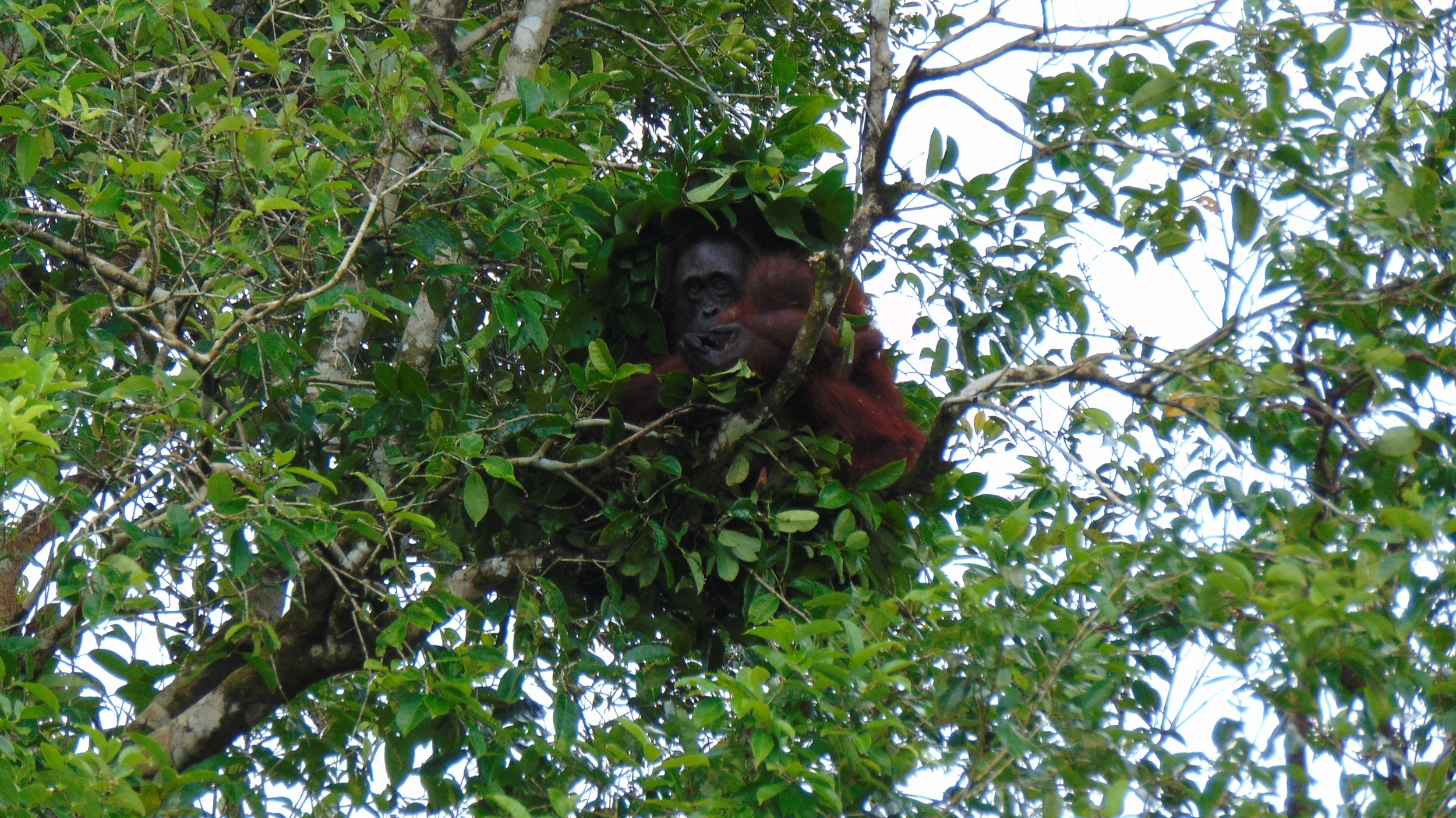
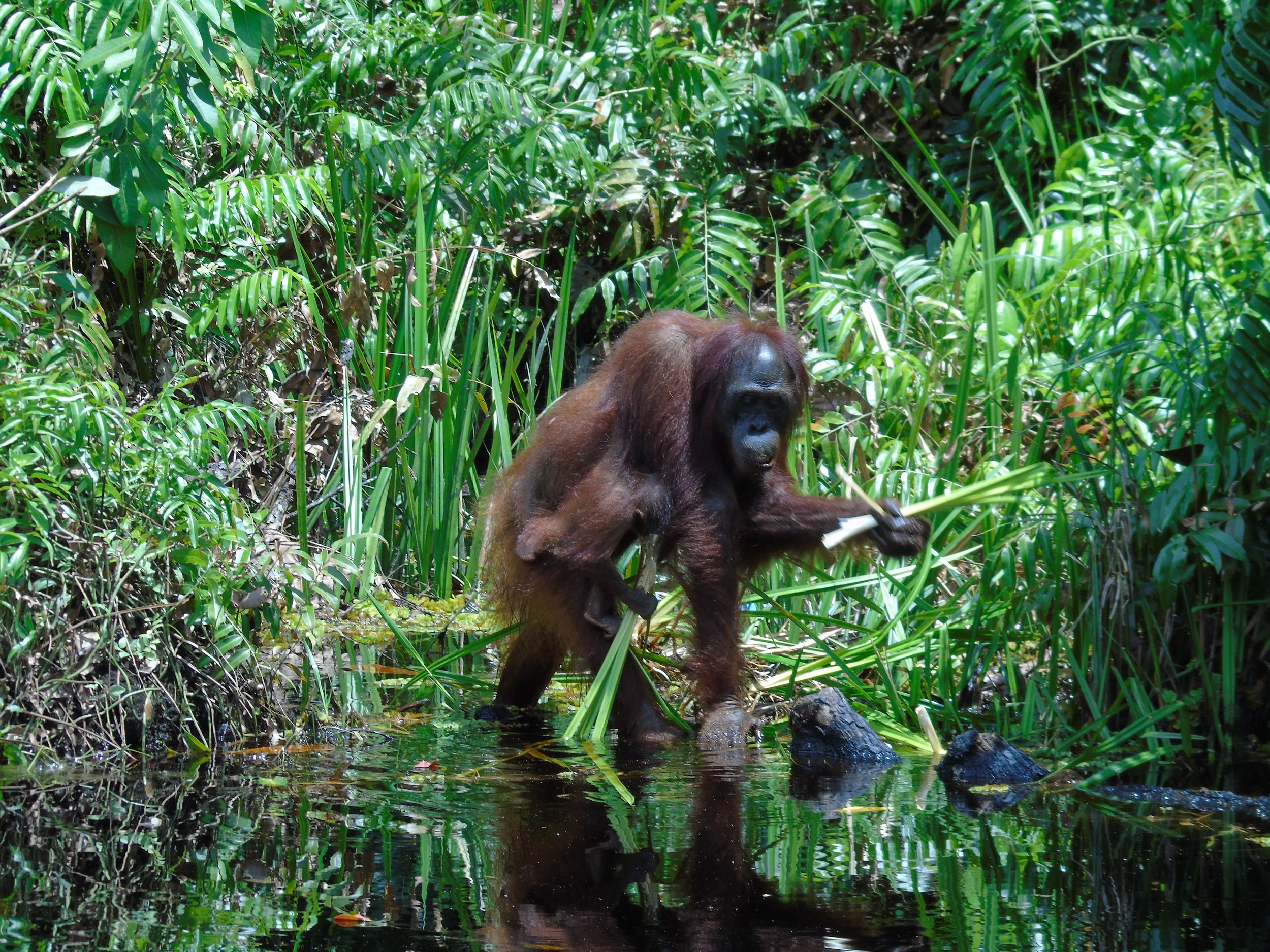
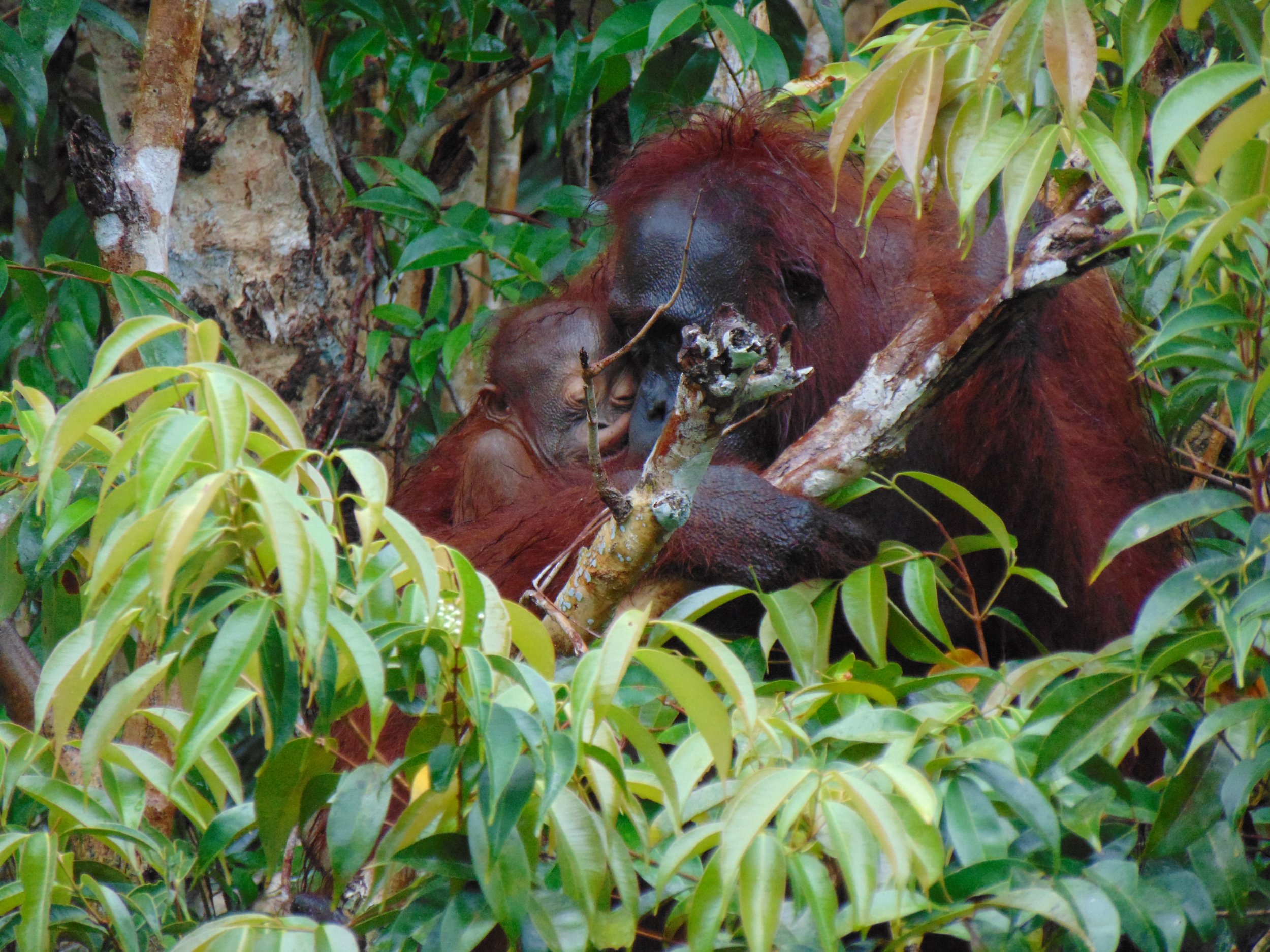
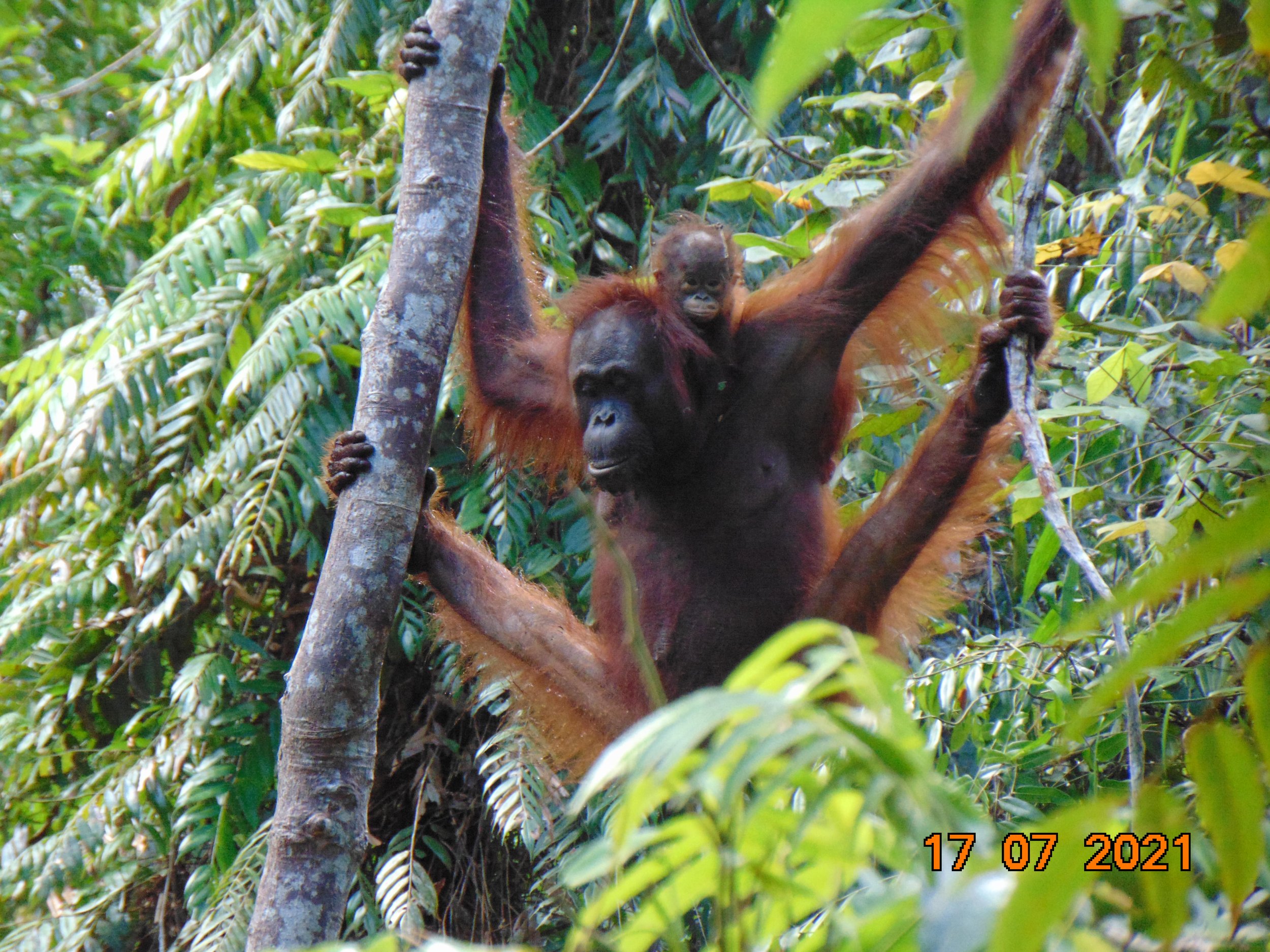
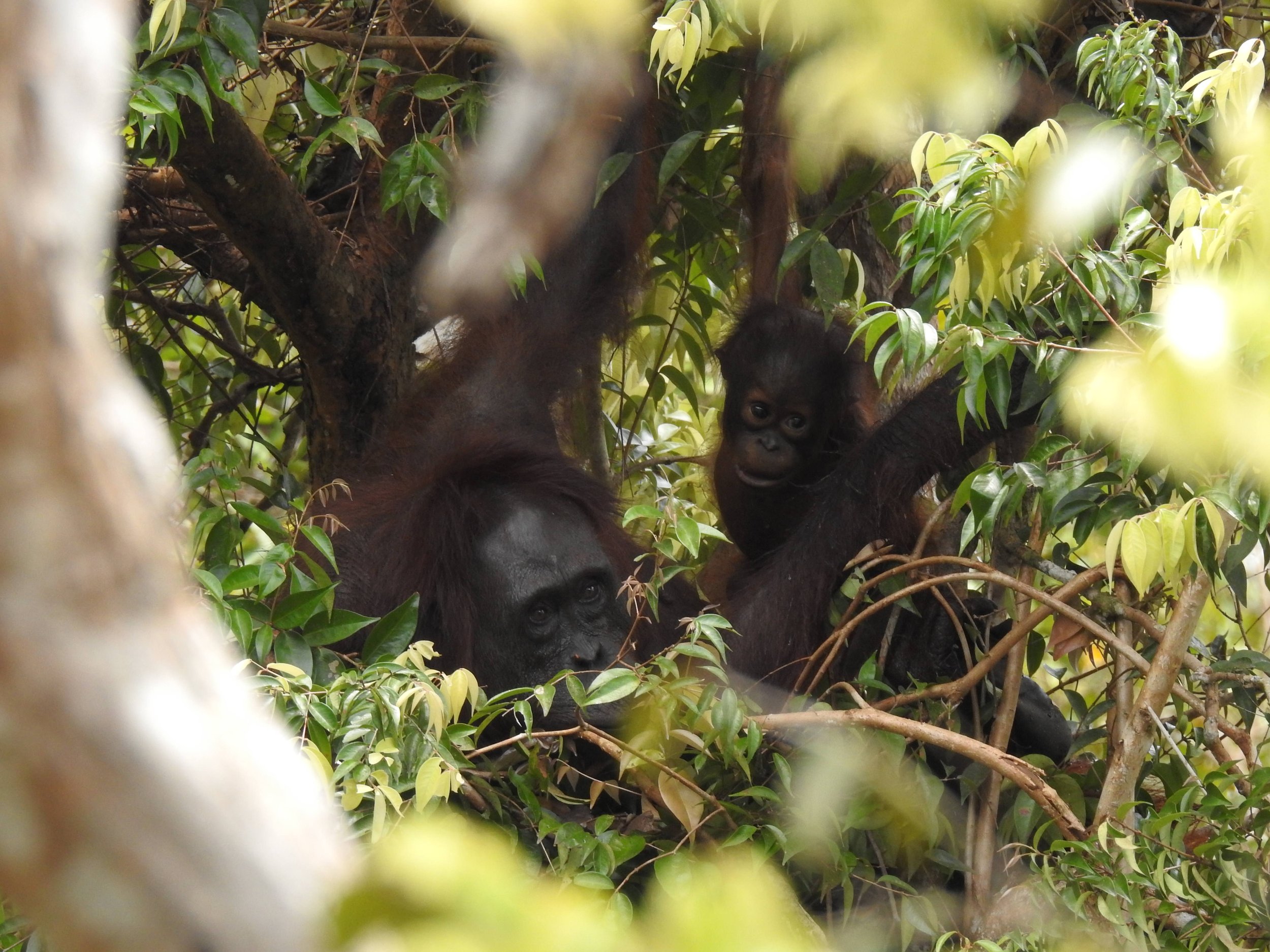
It’s an idyllic scene, watching mother and infant gracefully going about their business along the riverbank. However, the recent news of the crocodile attack on male orangutan Brian looms large, so it’s natural for our team to feel a little uneasy of their presence in the water now.
Despite this potential hazard, Queen certainly seems to know what she’s doing. She was one of the first orangutans to be introduced to the protected reserve back in 2003 as a six-year-old, and since then has built a strong legacy of successors. Quentin may be her first son, but previously Queen has raised three females since her release into the wild, so she has a wealth of experience on her side.
While he’s still young, our team will continue to enjoy Quentin’s presence around camp. Each day he spends watching his mother is another day closer to understanding forest life. In the years to come he will gradually learn what it takes to go out and begin his own legacy, but in the meantime, we’re delighted to keeping watching his progress.
Orangutan Stories: Boy
Orangutans are like humans in so many ways. We share around 97% of our DNA which means that biologically speaking there are a number of similarities. We have the same number of teeth, both age in a comparable way, and we can even use a human pregnancy test to check for prospective orangutan mothers!
This means that humans and great apes can also suffer from the same ailments, and orphaned orangutan Boy’s medical history is a prime example of this.
Boy is discovered at a local village in April 2017
As a three-year-old, Boy was separated from his mother and then kept as a pet in a local village. Cages can dramatically restrict an orangutan’s development, and after a few months on his own, Orangutan Foundation staff and government officials BKSDA were alerted to Boy’s presence and hurried to his aid. A thorough medical examination from our vet showed that despite his ordeal, Boy was in good health and ready to embark on his next chapter in the Foundation’s soft-release programme within the protected Lamandau Wildlife Reserve.
On his rescue, Boy receives a full-body examination to check his health
In the wild orangutans are a semi-solitary species, which means that although they generally explore their habitat independently, from time to time they do interact with one another. While they develop their natural abilities in our soft-release programme though, Boy and the other orphaned orangutans spend many hours together, learning and playing with one another on their daily trips to the forest.
Boy enjoys company and is perhaps one the most sociable of the young primates under our supervision. He loves exploring the trees with fellow orphan Adib as they climb and practice nest-building. In fact, Boy has even been spotted spending time with wild infant Marsha, until her mother Mores intervened and playfully shooed him away!
Boy swings in the trees with his campmates
Like the other orphaned orangutans in our care, Boy receives regular health check-ups to monitor his development, but recently we discovered something a little unusual. Last month Boy didn’t appear to be himself, he was vomiting and looked very weak and lethargic. Blood tests revealed that he had caught a cold and was suffering from anaemia, a condition which can occur from a lack of iron in the blood, so a course of multivitamin injections and medicines was prescribed by our vet to help alleviate this.
Another ailment which has affected the young male from time to time over the years is hair loss. Like us, every orangutan is unique so they each have varying amounts of hair on their body, but Boy has experienced unusual periods of baldness in recent times. It’s not thought that this is linked to his recent anaemia, so to treat this, our team have begun to use a new shampoo when washing him in the river which will hopefully encourage growth.
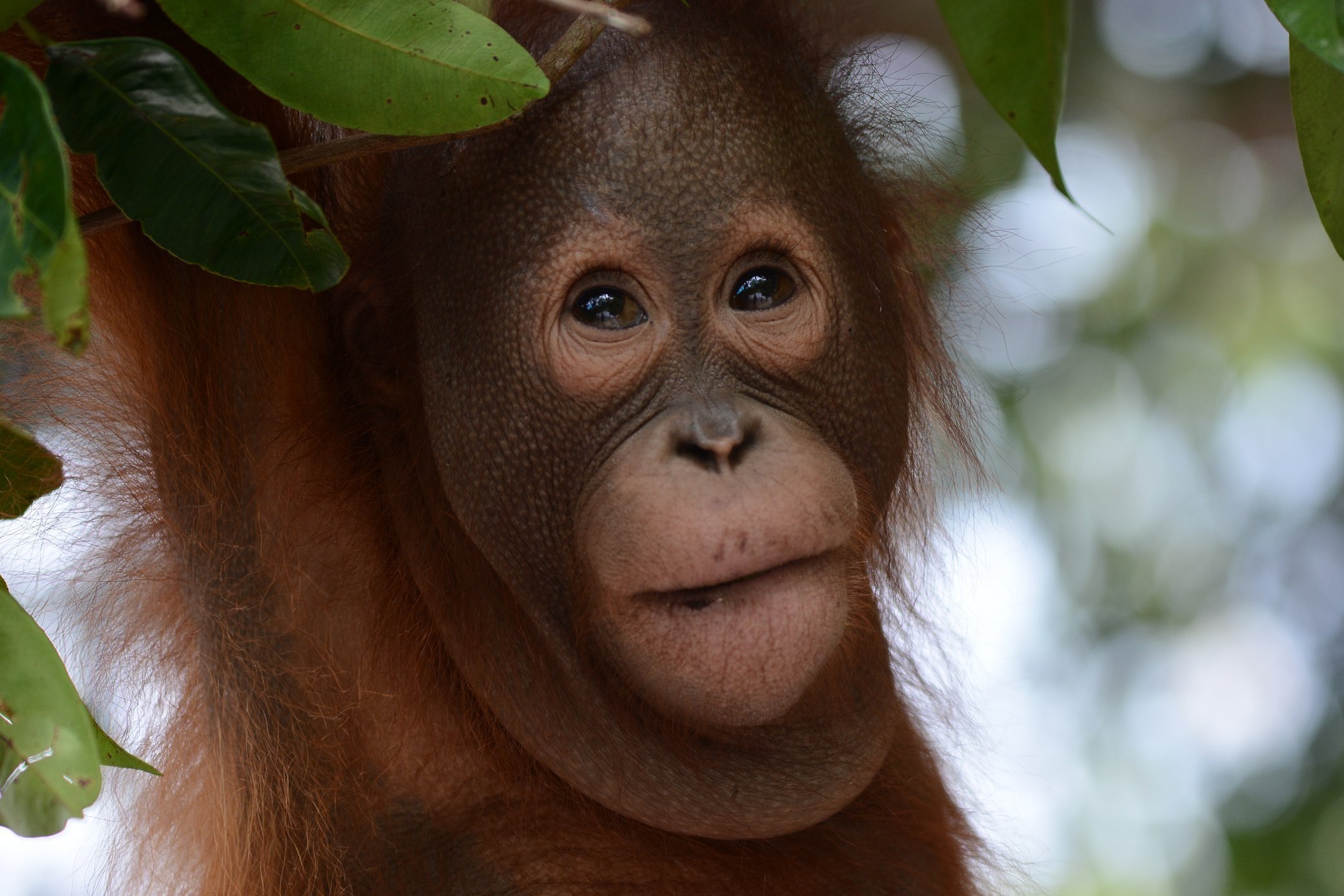
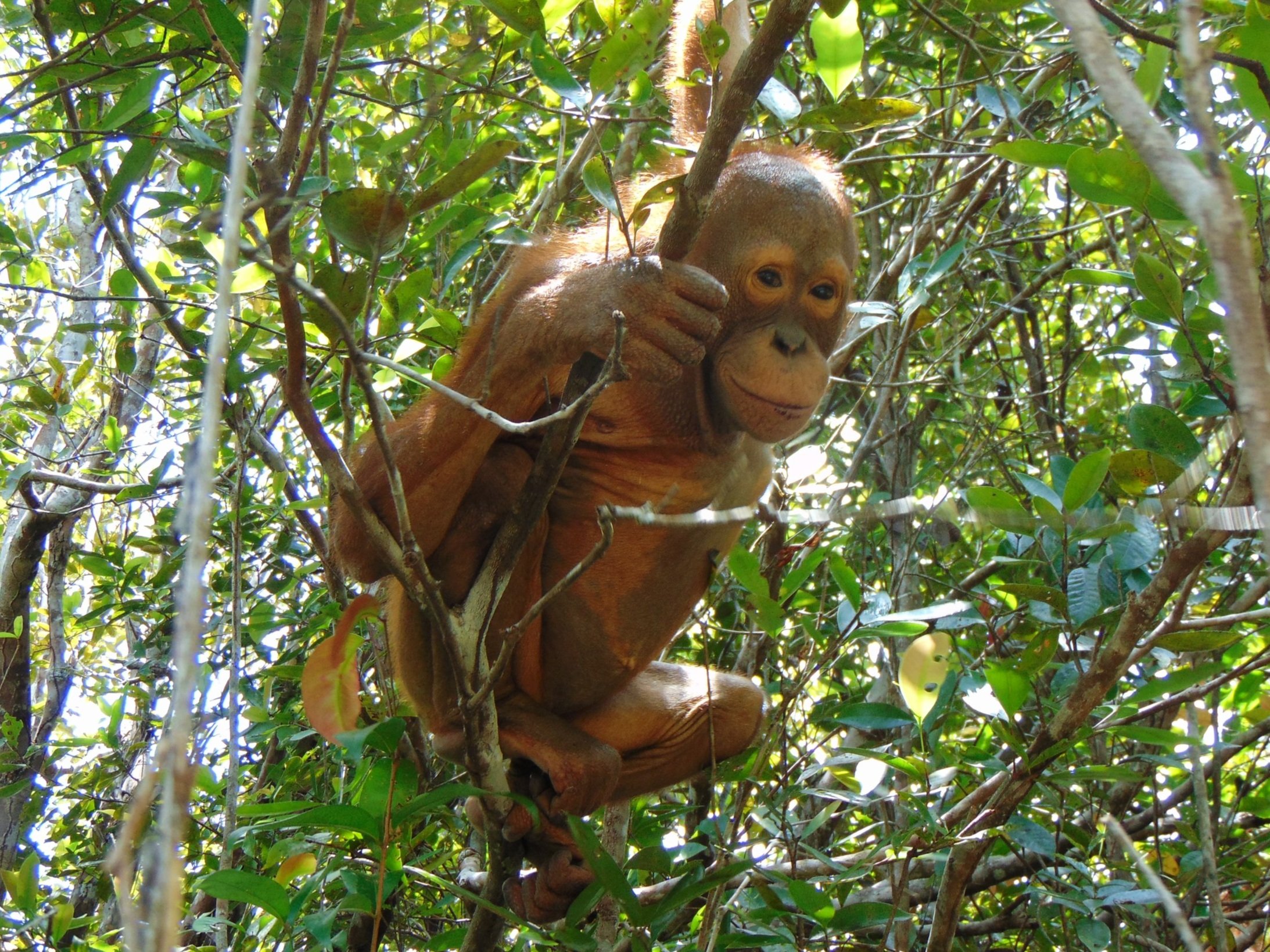
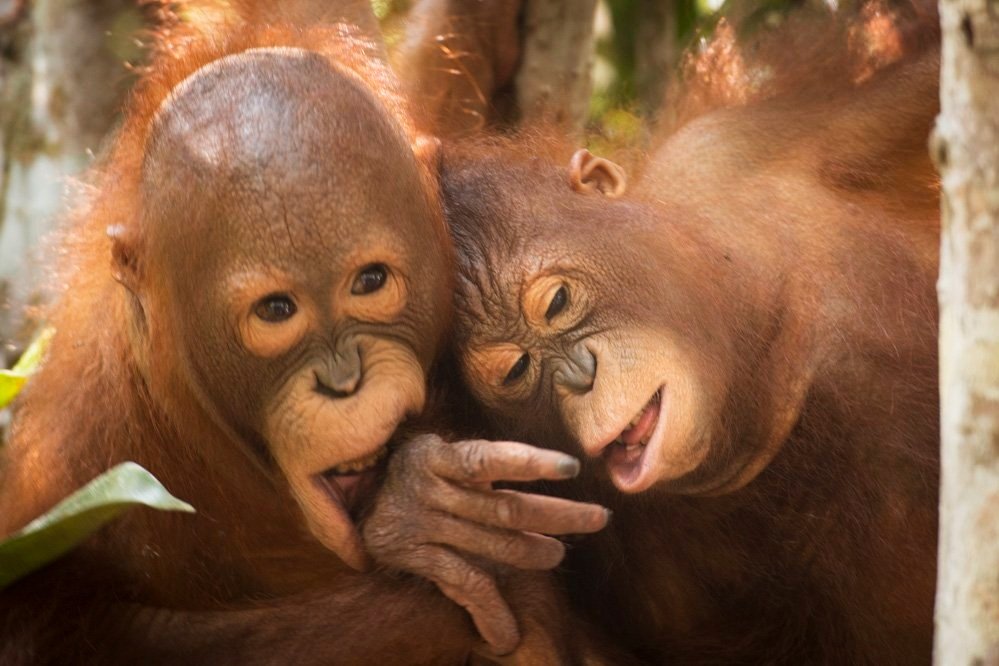
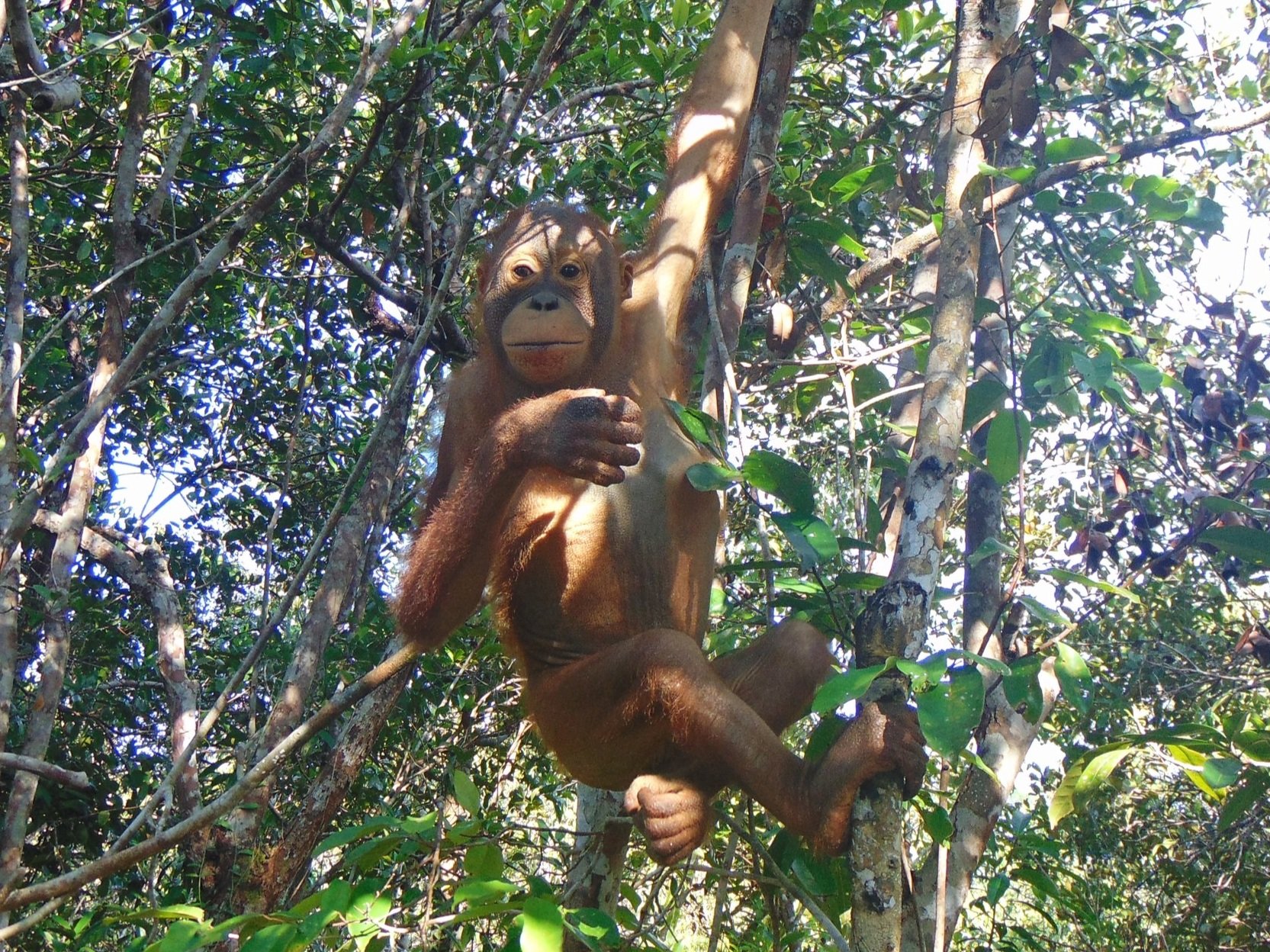
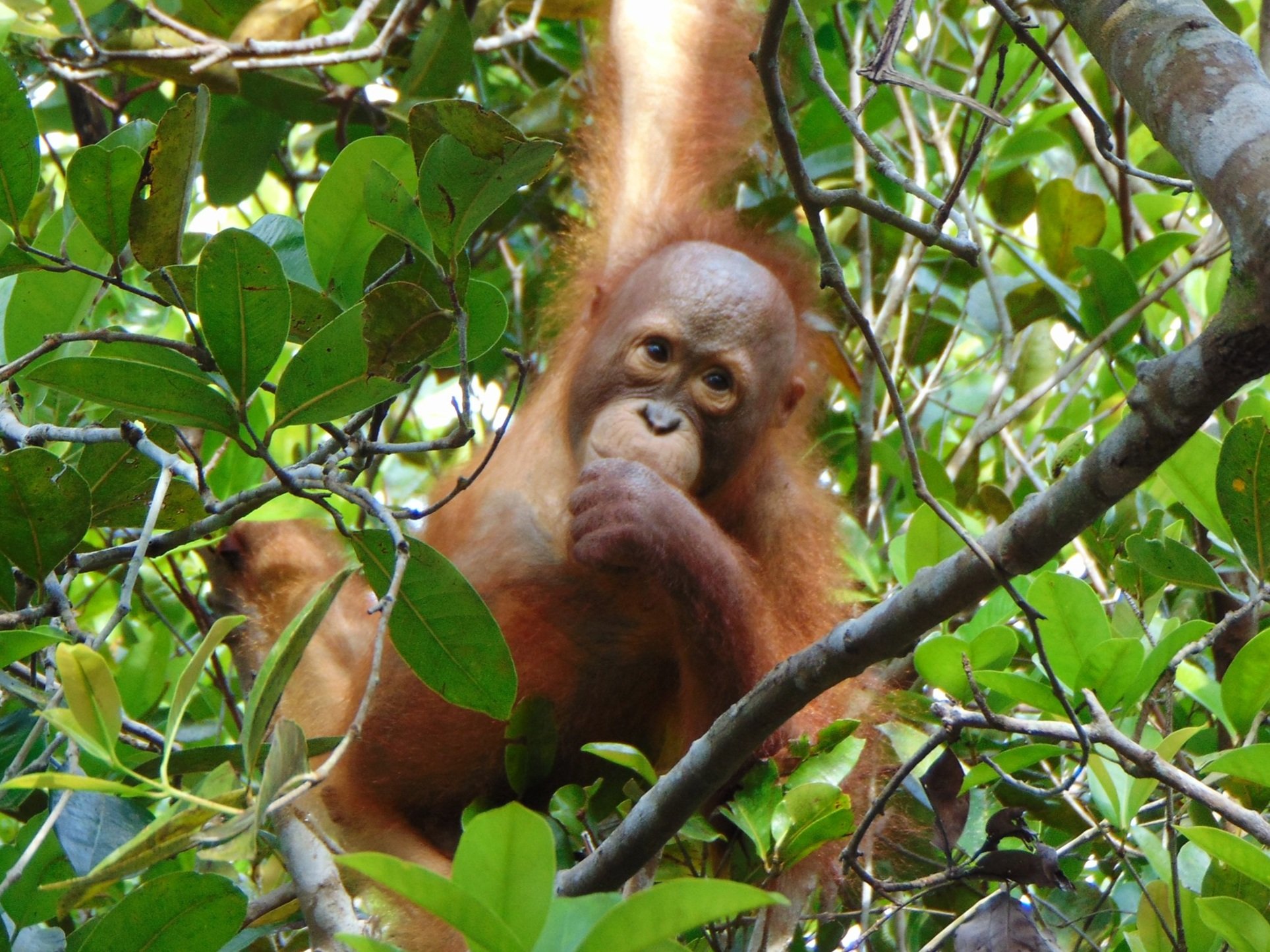
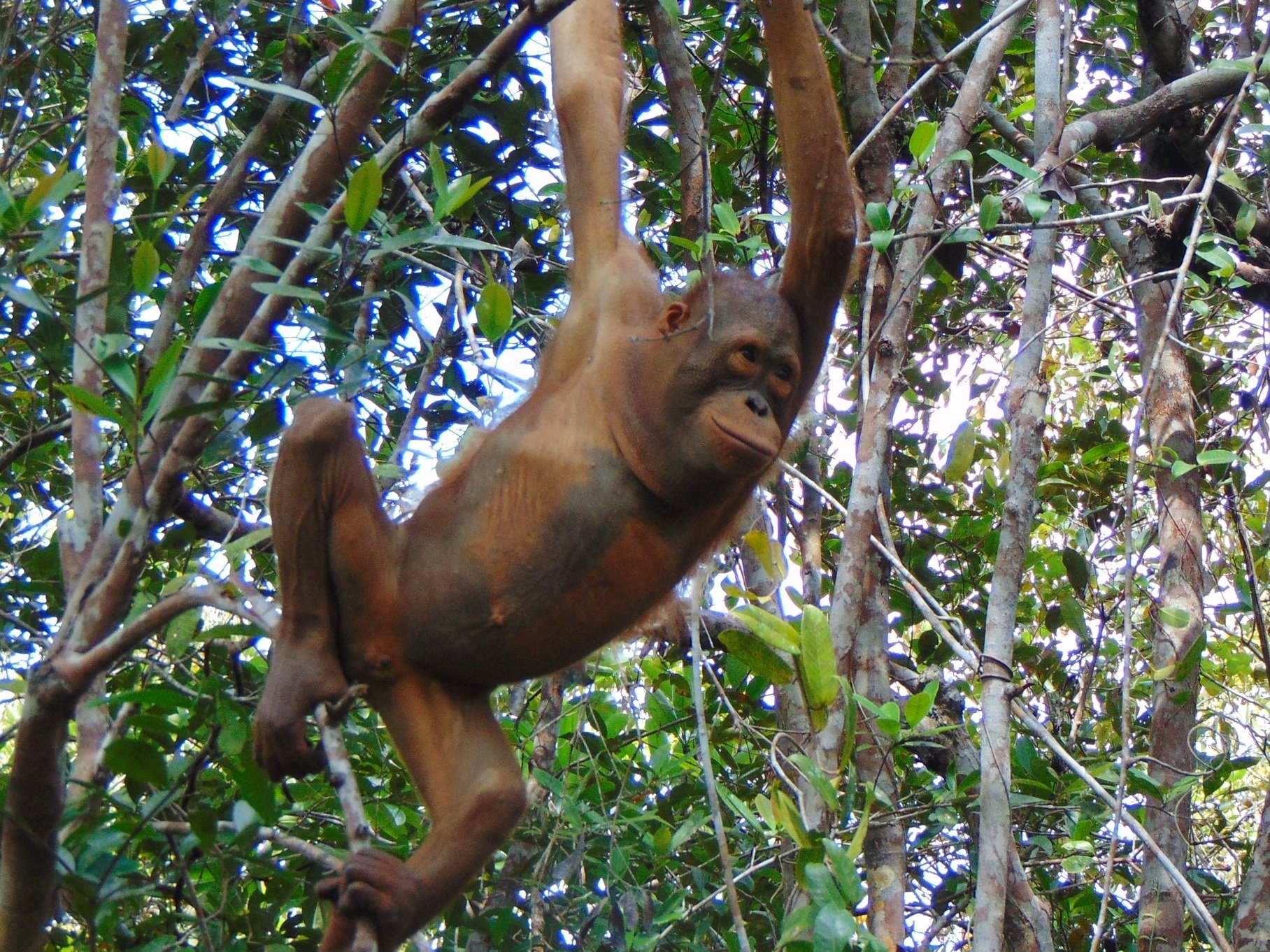

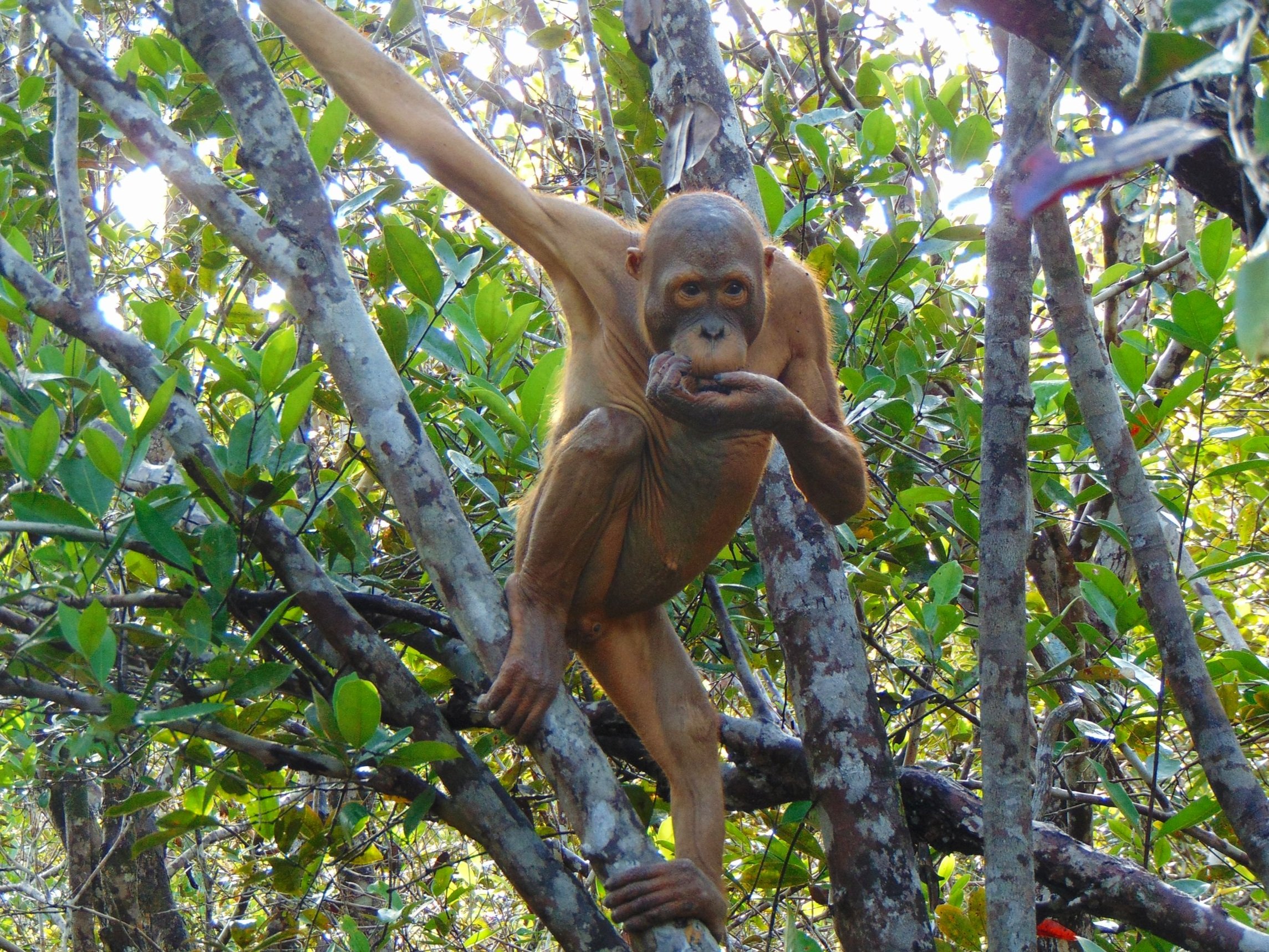
A week after his latest illness, our team were delighted to see that Boy’s blood tests were looking more positive. What’s more, the growing great ape appears to have more energy and has bounced back to his usual active self, frolicking with the others in the forest again. We will continue to keep a close eye on Boy’s health as he progresses and we look forward to the day when he will be experienced and strong enough to be released on his own into the wild.
We all have ups and downs, and Boy’s story is another reminder of how like us orangutans can be.
Orangutan Stories: Amoi
It’s strange to think that 20 years ago, if an orangutan outside of a protected forest needed rescuing, there were few secure places they could be released in Central Kalimantan, Indonesian Borneo. Thankfully however, with the establishment of the Lamandau Wildlife Reserve, great apes in need have a safe haven where they can be set free.
Six-year-old female Amoi (below) was one of the early orangutans to be translocated to the Reserve in 2004. Swapping a cage for the forest, it was wonderful to transport her from the Orangutan Care Centre and Quarantine (run by Orangutan Foundation International) and release her into the protected forest around Camp Siswoyo.
Growing up alongside humans meant that Amoi had a very tame nature. In fact, to start with she seemed to prefer spending time around camp instead of exploring the surrounding trees. Soon though she really got into the swing of things, and after a few years she was ready to give birth to her first offspring. Our field team were thrilled to discover that Amoi had adapted so well to her new home in the wild, but in a devastating piece of news shortly after, we learnt that she had sadly lost her young. It’s not uncommon for first-time orangutan mothers to lose their newborn, but reassuringly we would soon find out that Amoi had not lost her mothering instincts.
In 2008, another adult female orangutan named Ruta unfortunately passed away leaving her young son Richard to fend for himself. Our team weren’t sure how Richard might cope as an orphan in the forest, but with a little encouragement we discovered that Amoi was happy to take the inexperienced young orangutan under her wing. She’d become his surrogate mother. The pair prospered in the forest together and when Richard was ready for independence in the wild, Amoi was fully prepared for the next chapter of her story when in 2013, along came Alex.
Our staff fell in love with Amoi’s daughter Alex the first time they laid eyes on her. Initially she was so petit that it was difficult for our team to identify her sex (hence why she was given the unisex name). Even after a couple of weeks Alex was still tiny, in fact she could barely lift her head from her mother’s side (above). It’s amazing that this little primate even had the strength to hold onto her mother as they travelled through the forest, but after some time Alex finally began to grow and demonstrate her character.
In the trees around Camp Gemini within the protected habitat, mother and daughter would often be seen playing together and foraging for fruit wherever they could. The years of experience Amoi had built up were finally coming into practice, she’d proven that she could successfully raise an infant of her own.
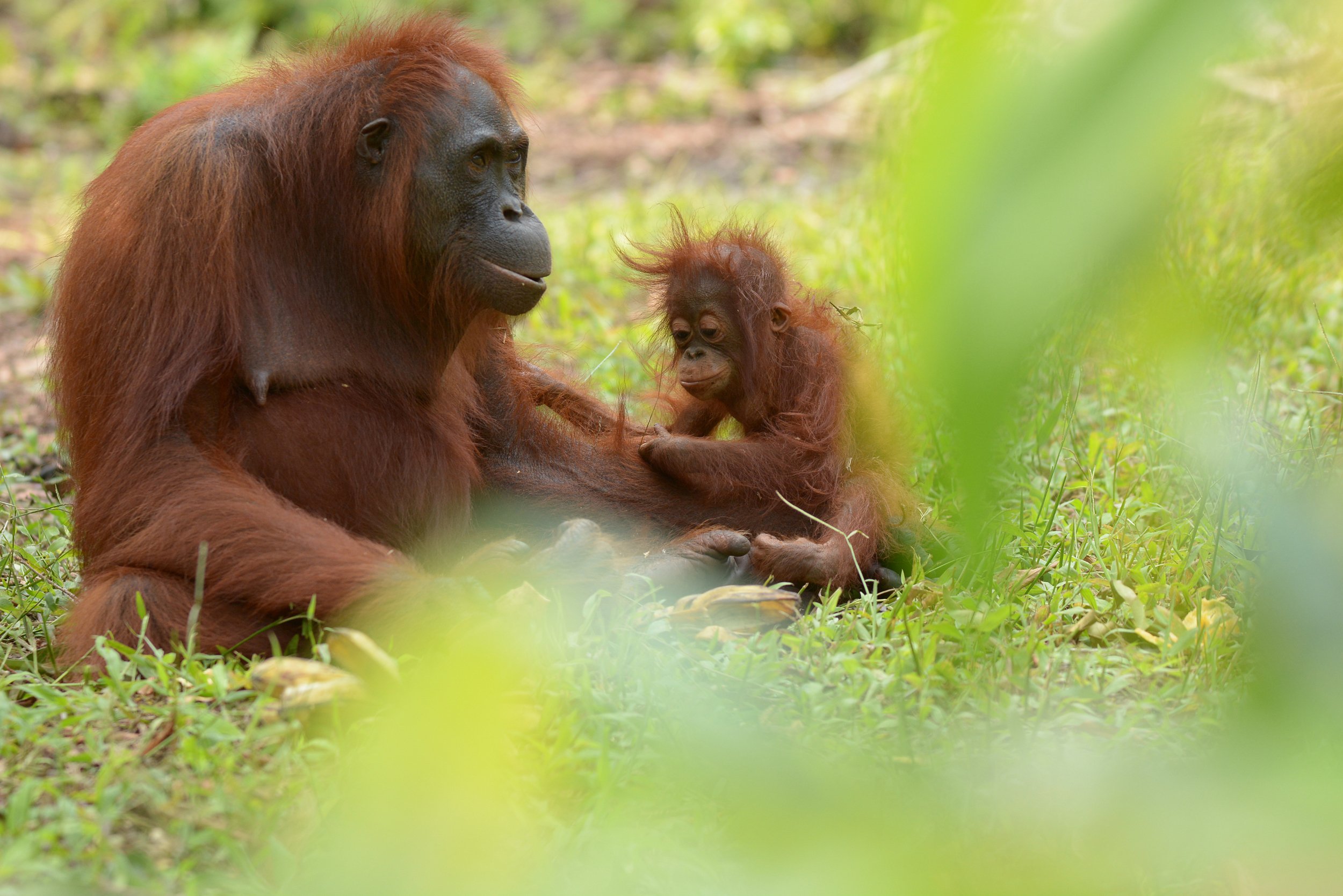
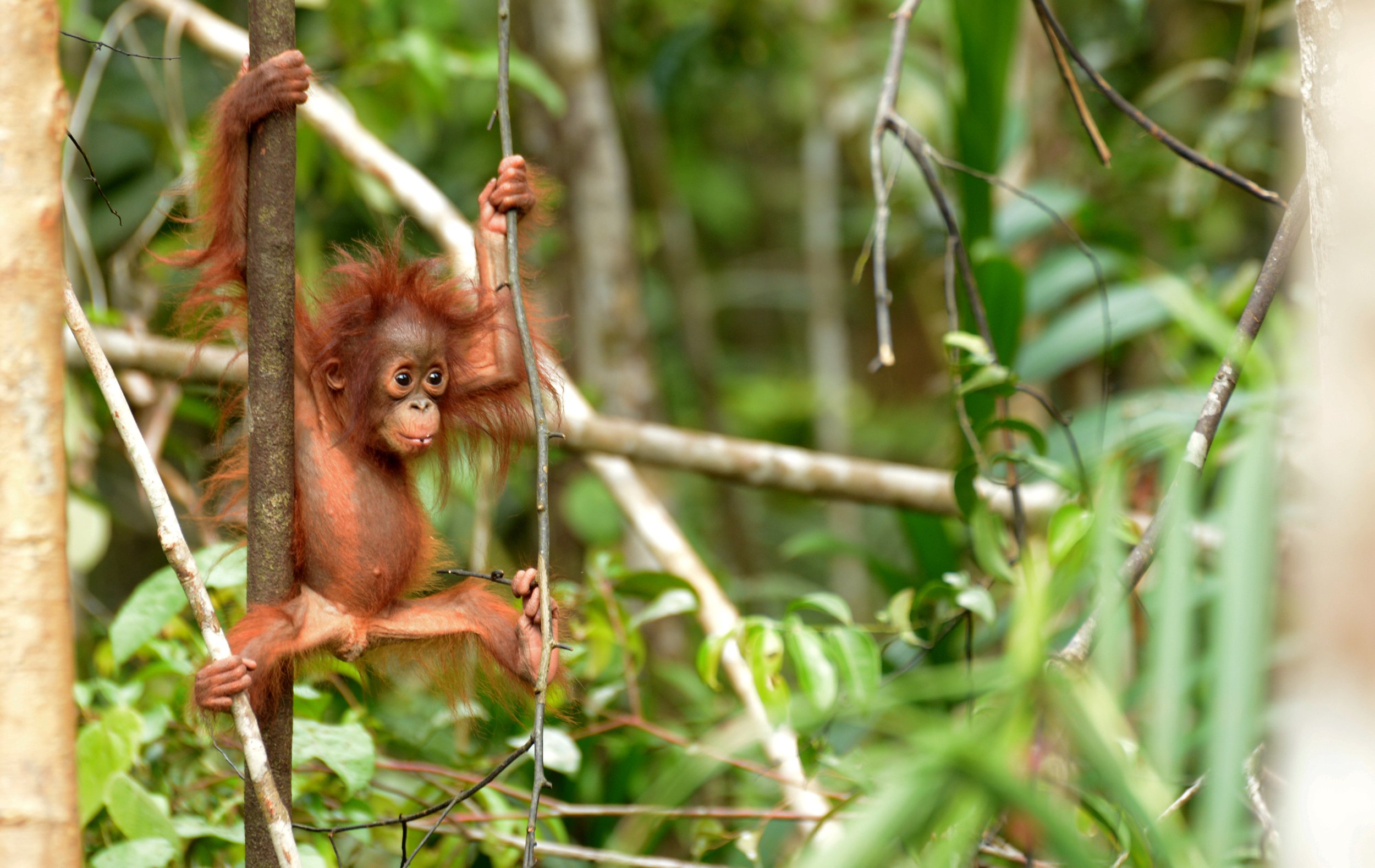
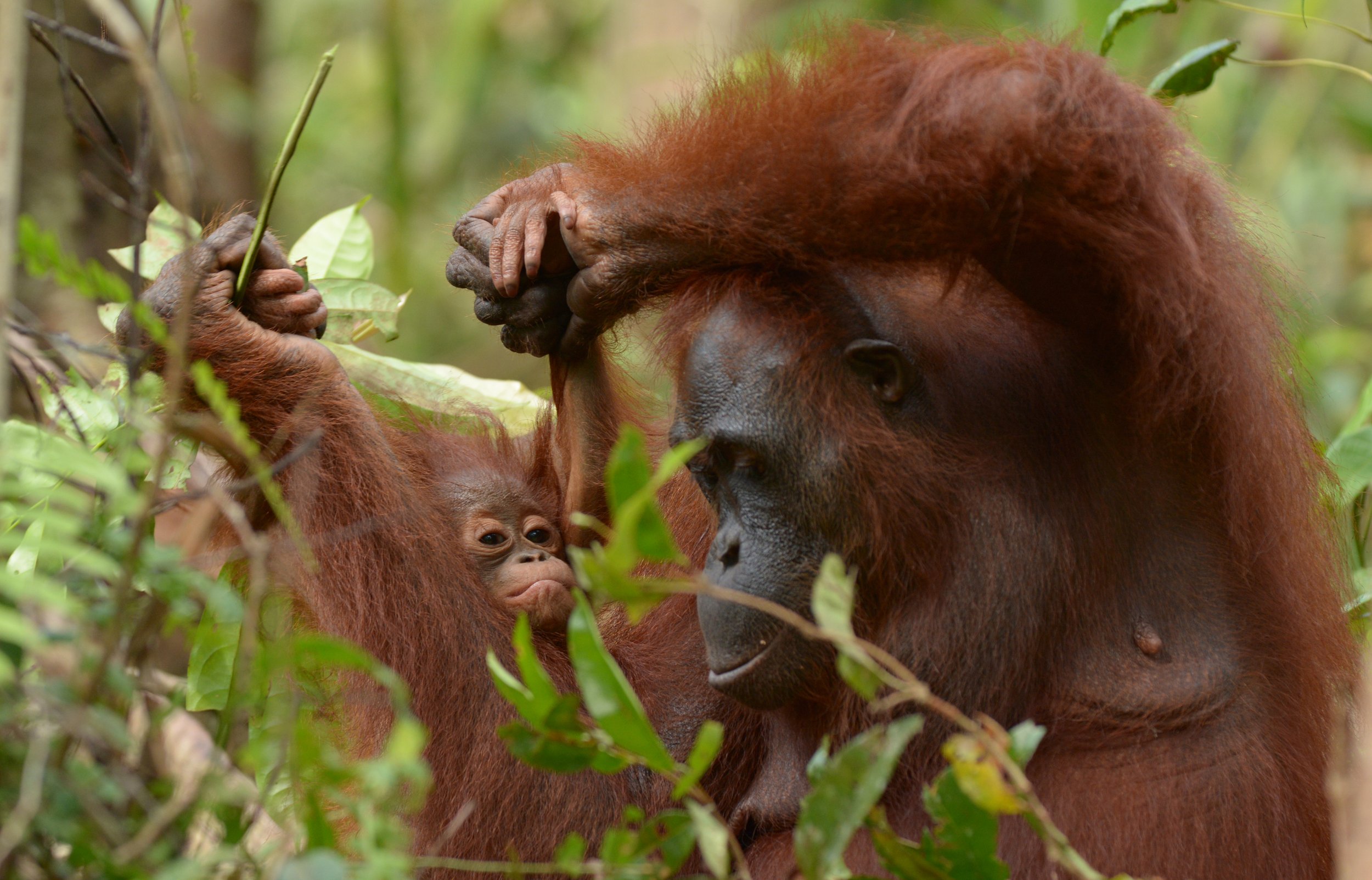
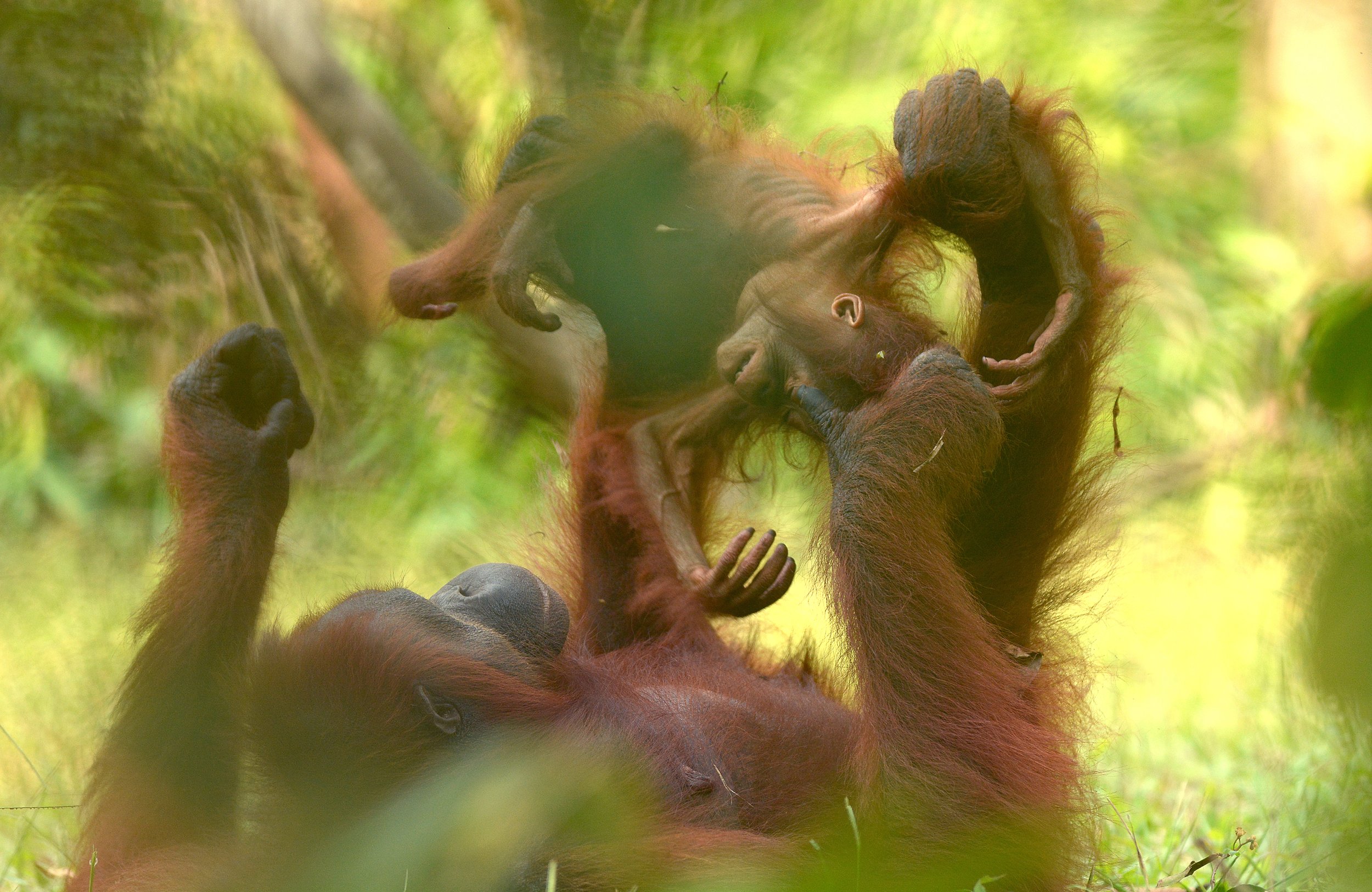
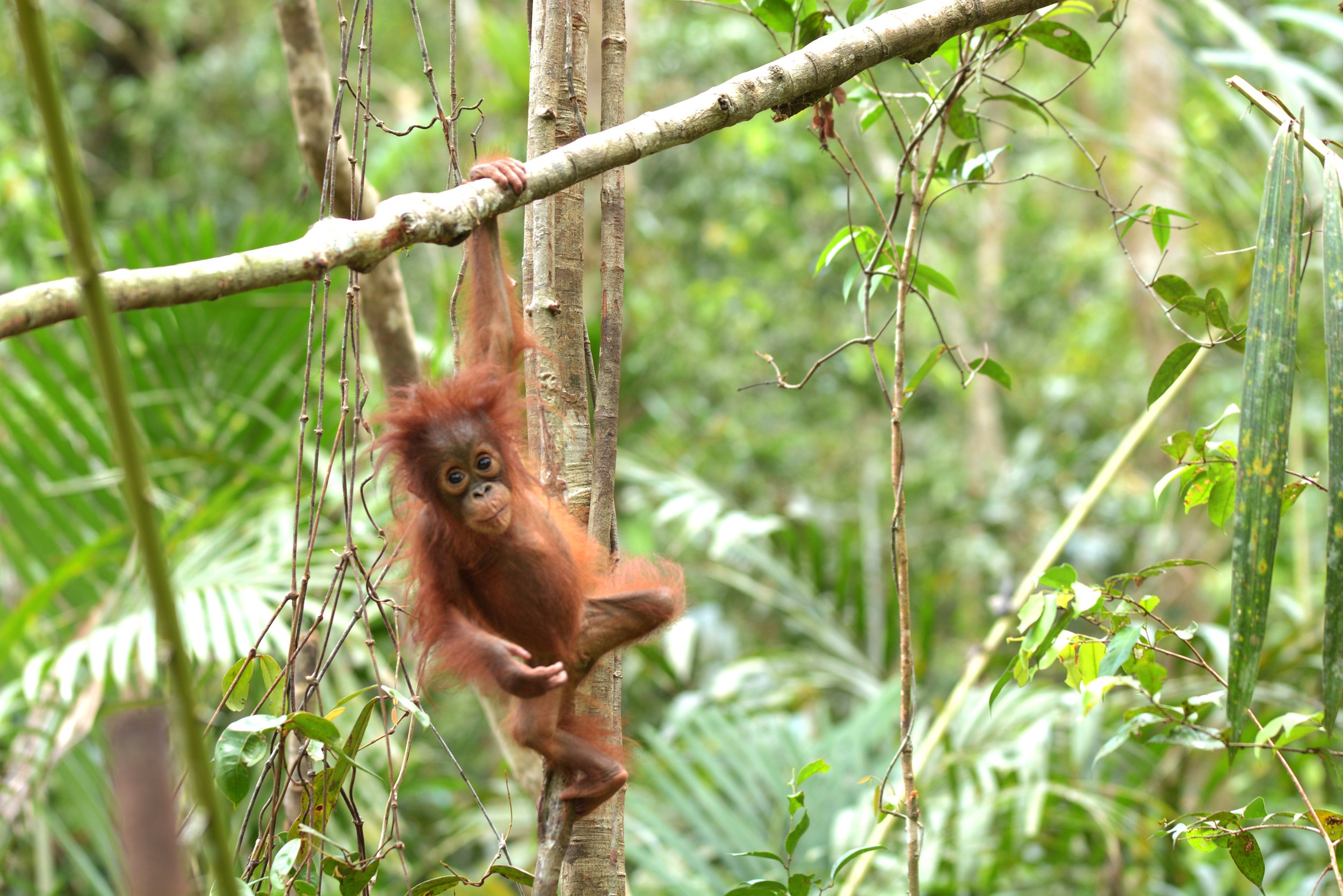
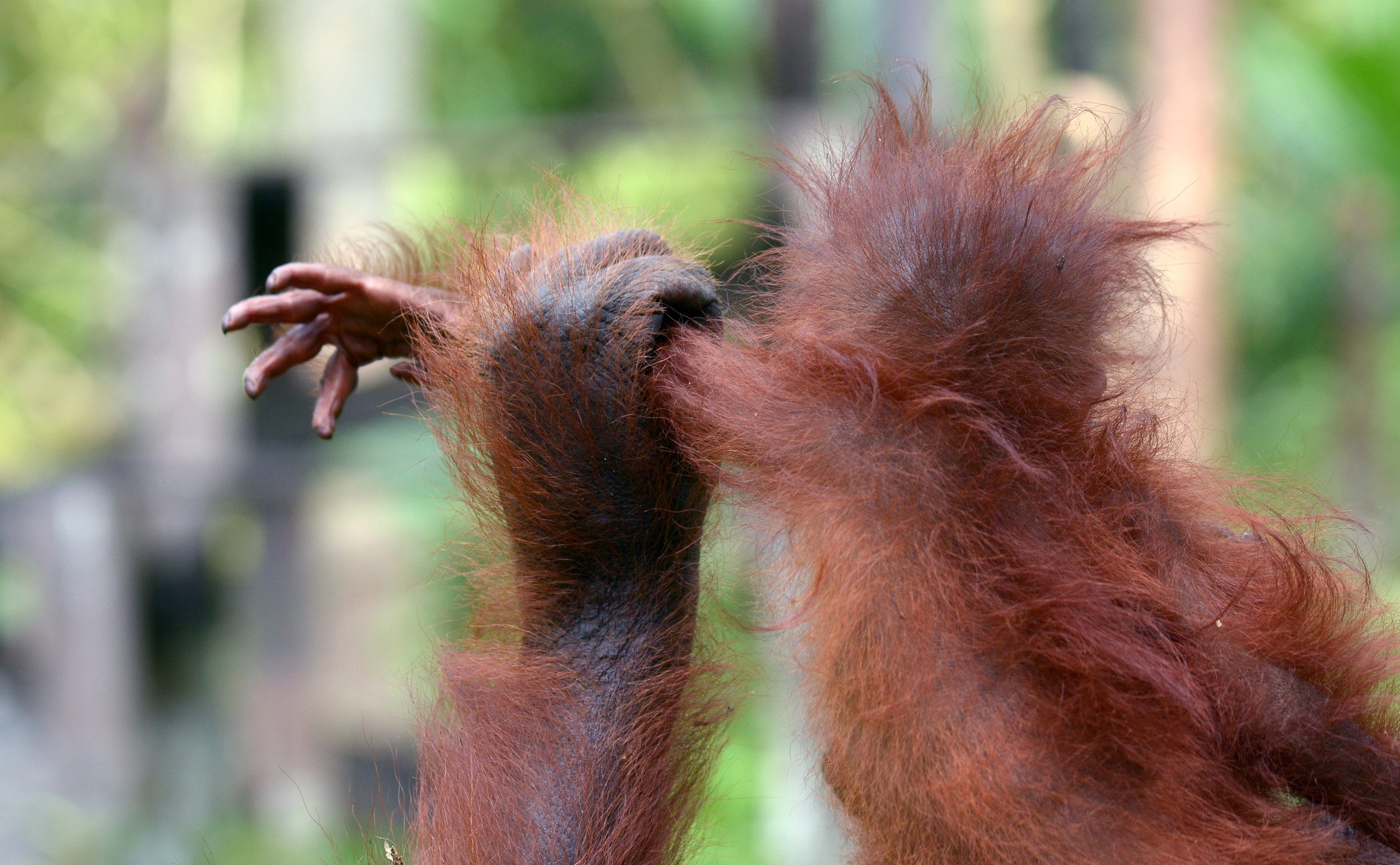
That was until the moment in 2016 when Amoi and Alex ventured deeper into the forest and out of sight. The Lamandau Wildlife Reserve spans across almost 160,000 acres of peat-swamp habitat, so its not unusual for recognised orangutans to explore other patches of forest away from our regular patrols. Nonetheless, what a wonderful surprise it would be if our team spotted them in the trees again!
Amoi’s calmness and tranquillity in spite of the challenges is textbook orangutan behaviour. Wherever she may be now, it’s encouraging to think of the legacy this gentle and caring mother has had for this critically endangered species.
Photos taken by Wawan
We rely on your support to ensure orangutans like Amoi and Alex continue to have a safe place to call home. From just £2, you can help our team protect an acre of their tropical rainforest for a whole year!
Saving the most endangered great ape - the Tapanuli orangutan
With only 800 individuals remaining in the wild, the Tapanuli orangutan is the rarest species of great ape. Their home in the mountainous forest of Batang Toru, Northern Sumatra, spans around 250,000 acres but is heavily fragmented due to habitat loss. Consequently, this means that the Tapanuli orangutan is also the most vulnerable of the great apes to become extinct.
We’re determined to provide a future for all orangutans, but as the Tapanuli’s forest is located far from our local programmes in Central Kalimantan, Indonesian Borneo, we’ve called upon a dedicated team who can help us.
Scorpion - The Wildlife Trade Monitoring Group, are a local NGO in Sumatra whose primary focus is to tackle animal exploitation by working with government and nearby communities. As their main goals match those of Orangutan Foundation, we could think of no one better suited to help us ensure a safer future for the Tapanuli orangutan, and here are three successful approaches that they use to do this:
1) Patrols. With the help of local law enforcement, patrol teams regularly visit 11 sites in the Batang Toru region which are orangutan habitats or areas of suspected illegal activity. It can be daunting prospect to explore a remote patch of rainforest which may harbour illegal loggers, miners, or wildlife traffickers, but it’s a necessary task to deter such destructive activity.
So far the team have caught illegal loggers felling trees for timber, reported man-made shelters in the forest which are likely used by hunters, and even uncovered patches of forest within nature reserves that have been cleared to make way for illegal plantations. All destructive behaviours which if left unfound, would destroy vast areas of orangutan habitat.
2) Investigations. As a result of these patrols, and by cooperating with local communities and government, the team can investigate these offenses further to thwart more habitat encroachment.
In some cases they have been able to identify names of loggers and ensure that previously used camps within protected areas have been abandoned. These surveys are ongoing, but to date have ensured that a dozen or so sites of illegal activity are no longer used.
3) Awareness. It’s paramount that we spread the word and remind local communities that their surrounding forests are essential for Tapanuli orangutans, and this has been communicated in a number of ways in the Batang Toru region.
Agriculture is the primary livelihood for many local people so instructive talks and discussions have helped encourage nearby villages to reduce the spread of their farmland into protected areas. Interestingly, the team have also incorporated the message into Friday prayers in mosques and Sunday sermons in churches to emphasise the matter and raise awareness to over 300 villagers. This is a unique approach but one that is proving to have a positive impact on the local perception of orangutans and their forests.
Despite major difficulties from the emergence of the global pandemic, the Scorpion team have worked wonders to protect the Batang Toru ecosystem. Through our partnership so far the team have helped strengthen over 15,000 hectares of strict conservation area, providing a safer forest for Tapanuli orangutans and encouraging better relations with local people for the future. From their findings it’s clear that habitat loss and encroachment will continue to be a major hurdle, but there are at least effective ways of resolving this with the right support.
Orangutan Stories: Satria
For some animals, as soon they’re born, they’re ready to explore the wild on their own. For orangutans though, their home in the tropical rainforest is full of potential hazards and often limited sources of food. They consequently must observe and learn from the teachings of their mother before they can be truly independent. This is a complicated process however, and can take 6-8 years for an orangutan to be fully prepared, longer than any other species in the animal kingdom.
Therefore, to be separated from their mother and kept alone as a pet in a cage genuinely holds back the development of a young great ape. Sadly this is how Satria’s life began, until 2017 when the two-and-a-half year old was rescued from captivity and taken to the forest for the very first time!
In Orangutan Foundation’s soft-release programme within the Lamandau Wildlife Reserve, Satria could finally know what it was like to climb a tree and interact with other orangutans. At Camp Rasak alongside fellow orphan Endut, Satria was taken out into the surrounding habitat every day and gradually built up his range of forest skills. He took to climbing like a duck to water, and would often be seen playing with some of the younger wild great apes in the forest, but it would take him a few years to master the most complex orangutan talent- nest-building.
Our staff would take Satria to varying parts of the forest to familiarise him with different areas, and slowly but surely, he perfected the art of building a sturdy overnight nest in the trees. To ease his way into the wilder side, our team then supervised Satria as he spent a night or two in the forest independently. Building up the familiarity with sleeping in a nest he’d built was visibly helping his development, and this month Satria spent five nights in the forest surrounding camp on his own. A big milestone for a young orangutan but he took it in his stride, and it was clear that he was now ready to be released.
Following a final medical check-up from our vet and a negative test for COVID-19, Satria had made it. The time had finally come for him to leave camp for good and become entirely independent!
Satria receives a final check-up and COVID test from our vet before being ready for release
Now a fully-fledged young adult, Satria weighs 30kg. It was therefore a tiring 1km walk for our team and local government staff from BKSDA to carry Satria through the forest to his specially chosen release site. In the presence of Orangutan Foundation Founder and Director/Trustee Ashley Leiman OBE, Satria’s travel crate was eagerly opened and he quickly rushed out onto a nearby tree.
In a somewhat nervy start which saw him clambering over his travel crate, Satria seemed more interested in the group that had gathered to see him off, and it was only once everyone had dispersed that he decided to climb up into the trees to explore his new patch of forest. All his preparation had led to this moment and at last he’d graduated from our soft-release programme!
For at least 10 days after his release, our monitoring team will continue to observe Satria’s progress from afar. Already we’re delighted to see that he’s beginning to establish himself in the population of over 600 orangutans in this Reserve, and who knows, in the future we may see Satria become an impressive dominant male orangutan in the forest. For our team, there could be no greater reward!
Orangutan Stories: Batuah
In our latest remarkable orangutan rescue, we’re reminded not only of the challenges facing this critically endangered species, but also the dangers imposed on our wildlife rescue team. Everything doesn’t always go to plan:
Many residents of the small village of Batuah in Central Kalimantan, Borneo, rely on farming as a source of food and revenue. Situated on the outskirts of Sampit, the largest town in the area, Batuah sits beside tropical forest and is therefore frequented by wildlife from time to time.
Over the past year or so, one villager had been keeping his eye on a male orangutan that seems to reside in the forest nearby. That was until recently when the primate was seen a few days in a row in their orchards eating pineapples and jackfruit. To avoid a potentially hazardous encounter, it was time for government officials BKSDA and Orangutan Foundation’s rescue team to swing into action.
Arriving at the scene, our team could see that they might have a struggle on their hands. Although the orangutan showed no aggression, he was clearly a large and imposing figure, and surrounded by many villagers. For his safety he needed to be tranquilized and translocated to an area where he could roam freely.
Carefully the 55kg male was darted, captured safely in a net, and given a brief once over by our vet. It needed the help of some local people to lift the orangutan and get him into his transport crate. At first sight he had many cuts on his feet, most likely from sharp rattan and rubber trees in the plantation, but more worrying were the number of bullet wounds found on his skin. It’s unclear whether these came from residents of the village or further afield, but before he could be released into the wild, we would need to investigate the great ape’s injuries in more detail without so many people around.
The orangutan was given the name Batuah, after the village, and transported to offices in Pangkalan Bun for inspection. Unfortunately, eight rifle-pellets were found still lodged in Batuah’s skin so he would require minor surgery before being eligible for release.
For his operation, Batuah received an anaesthesia injection to send him to sleep but the large male was still moving while being taken to the surgery table. Carrying out treatment on such a powerful animal is extremely dangerous if they’re not completely anaesthetised so a second half-dose was required to make sure Batuah wouldn’t feel a thing. One, two, and then three pellets were successfully removed without incident, until our vet noticed something- Batuah was starting to move again!
For the safety of everyone involved, the team made the quick decision to end the surgery there and then. Batuah was hurriedly moved back into his transport crate where he could wake up in peace, and thankfully it appeared that the remaining pellets in his skin were not causing any pain or limits to his movement. With another day to gather his strength and recover from his surgery, the great ape would soon be ready to go back to the wild.
The next day our team carried Batuah in his travel crate onto a speed boat and took him upriver into the safety of the Lamandau Wildlife Reserve. They were thrilled to see him dart out of his cage on his release and then sprint up into the forest canopy, safe and free. In his new home, Batuah can roam in confidence without the need to take food from plantations as if he’d never left the forest.
His story is one that perfectly summarises the challenges facing most orangutans in the wild today. The growth of human activity must expand into something, and in many places, it encroaches into forests which in turn leads to more human-wildlife interactions and conflict. The fact that Batuah can now survive in a protected habitat makes him one of the lucky ones, but as our towns and farmlands continue to expand, the number of rescues required will only increase.
In fact as we go to print, we’ve received news that a gibbon has also been rescued from a nearby village having been kept as a pet for seven years. It’s hoped this primate will also be released into the Lamandau Wildlife Reserve.
Orangutan Stories: Kotim & Torup
How time flies. It’s remarkable to think that it was six years ago this month when orphaned orangutans Kotim and Torup were released back into the wild after graduating from our soft-release programme. It feels like only yesterday, and Orangutan Foundation Director/Trustee Ashley Leiman OBE remembers it well:
“It’s always a joy when orangutans leave our care and successfully return to a life in the wild. When possible, we time the release dates for when I’m out in the field and I was delighted to be present to see Kotim and Torup beginning their independent life in the forest…
…Kotim and Torup were two young orphans that were found on community land in 2014 and brought to our soft release programme at Camp Rasak. After two years they had shown competence in orangutan skills such as finding food and making a nest to sleep. They were spending more and more time out in the forest, and it was getting harder to get them back – we knew that they were ready to leave.
They were carried by piggyback about 1 kilometre further into the forest. When the assistants lifted them down and put them on a tree, they instantly climbed high into the canopy. Torup went first and immediately started eating leaves, a great sign that he was both relaxed and capable of looking after himself. We stayed for about half an hour, watching ever further glimpses at the canopy level and then they disappeared into the forest. We couldn’t have hoped for a better start…
Kotim in her element in the trees
…For ten days Kotim and Torup were followed by our assistants, who kept an eye on them as they adapted to life in the wild. Since then, Torup has never been seen again, but Kotim comes back every now and then, and has befriended a few orangutans that are currently in soft release.
For the assistants who have been with them every day for years, releases can be an emotional time. For me, I just love the moment when the cage opens or the orangutans are set on a tree and instantly they’re orangutans – they can do this and they know what to do...
…I find it fascinating that a young orphan can make a nest without its mother there to teach it. Is it imprinted from the short time they are with the mother, or is it just written into their being like a computer code?
We don’t have to teach them orangutan skills, we just facilitate and watch until they’ve mastered it themselves. When we rescue orangutans and bring them for release in a transit cage, we take them by boat to the edge of the river, open the cage and they’re gone – straight up a tree as if they’ve never been away.”
Releasing an orphaned orangutan back to the wild is no doubt an incredible feeling for our team, but there’s a lot of hard work needed to care for a young active great ape. Adopt an orangutan in our soft-release programme for yourself or as a gift today and you can give a helping hand to primates like Kotim & Torup!
Orangutan Stories: Timtom
In the wild, a nine-month-old orangutan infant is entirely dependant on their mother. A mother picks the correct food for them to eat, carries them by their side through the forest, and builds a nest every night to shelter in.
Timtom at nine-months-old however was not able to rely on her mother for guidance. Somewhere along the way she had been separated from her mother and in 2016 was rescued from life as a pet by local government officials BKSDA Kalimantan Tengah. To offer Timtom a second chance of a wild future she was entrusted into Orangutan Foundation’s soft-release programme for orphaned orangutans where instead of climbing the bars of a cage, she could climb trees every day in the Lamandau Wildlife Reserve.
Timtom gets to grips with the forest in the soft-release programme
In the safety of a protected forest, Timtom has matured over the past six years from the shy and hesitant infant we first met, into a healthy and self-assured young orangutan. Timtom shares her temporary home at Camp JL with three other orphans and enjoys climbing with them in the trees. Most days she’s taken to the forest with Boy, a male orangutan 18-months older than her, but when she begins to tire in the afternoon Timtom often makes her way down to the forest floor to play on her own. This is where her unique personality really shines through!
According to our Reintroduction Manager Mr. Azhari, Timtom is an adept climber and has no difficulties scaling the tallest trees but instead she prefers to roll around and play on the forest floor. Perhaps as she’s spent time with humans from such an early age, Timtom has become accustomed to a life on terra firma and has no problems letting her fellow campmates play together in the trees while she’s down on the ground.
Timtom plays her favourite game at Camp JL
Timtom’s inquisitive nature is truly on show when she’s exploring the leaf litter on the forest floor. When she’s not digging a deep hole with her hands and rubbing sand on her head, she’s seeking out the nearest puddle to rummage in and spread wet mud all over her face. It may be messy but in the heat of the day it is a great way to cool off!
Timtom spends her playtime in puddles on the forest floor
This playful and somewhat childish behaviour is certainly entertaining for our team to watch but it also shows that Timtom is not yet ready to be released into the forest on her own. While she may be a talented climber in the trees, she’s not begun practicing nest-building like the other great apes at camp, an essential skill for any wild orangutan.
Our staff have seen other young orangutans put their juvenile behaviours behind them and have successful releases into the wild, so we are confident that with more time Timtom will be able to join them in the forest. Until that day comes, we will continue to provide Timtom will all the support she needs to be the wild orangutan we know she can be.
Orangutan Stories: Ketty
In December we shared the extraordinary story of Sinta, a young wild orangutan who was recently found abandoned in the forest and so taken in by our field team. Sinta would have been destined for an ominous future had she not received help, now though, she could follow in the footsteps of another young primate who started out with a similarly remarkable story- Ketty.
Ketty rides on the back of mother Korin. (photo by Wawan)
Female orangutan Korin was released into the protected Lamandau Wildlife Reserve in 2003 and quickly established herself around Camp Gemini. Our field team were thrilled to see she had put her previous life as a pet behind her when she gave birth to Ketty in May 2013.
Living in the rainforest however comes with a great number of challenges for orangutan mothers. Sadly in March 2015, young Ketty was found in a deadly situation, alone in the forest with mother Korin nowhere in sight. Infant orangutans have little to no chance of survival without their mother’s protection and guidance, but thankfully our field staff were on hand to offer Ketty a second chance in our soft-release programme for orphaned orangutans.
Understandably, the first few weeks on her own were tough for Ketty. In her overnight enclosure at Camp Gemini she would often be heard calling out in distress, perhaps for her mother, but soon other orphans were able to come to Ketty’s rescue.
Ketty and Okto practice their climbing (Ketty is the one sitting on the tree branch)
Learning alongside her fellow campmates in the safety of the forest, Ketty soon gained the confidence to practice foraging for food and building nests. Despite some playful distractions from orphaned orangutan Okto, by 2017, Ketty had progressed immensely and was prepared to be released back into the wild where she could put all her forest skills into action.
She was clearly ready to go solo, but upon Ketty’s release it was evident she still wanted a helping hand to guide her on her journey back forest life. Monitoring her development post-release, we could see that she had formed a partnership and had been taken under the wing of wild female Acuy and her infant Ariel. Together these wild orangutans truly helped Ketty acclimatise and settle into her new surroundings.
With such a difficult start to life, it would be reasonable to think that Ketty would struggle to cope on her own in the wild. However, through her temporary adopted families, first in our soft-release programme and then with Acuy and Ariel, she’s successfully integrated into a thriving wild population.
Today we no longer see Ketty around camp as she’s ventured deep into the Reserve, but her success story can reassure us that orphans like Sinta can also become a fully independent wild orangutan given time.
Orangutan Stories: New Year, New Life in the Forest!
The past couple of months have been a whirlwind for our orangutan monitoring team in the Lamandau Wildlife Reserve. As well as keeping on eye on the previously orphaned orangutans released last year, during their daily surveillance in this protected tropical forest the team are also recording so many orangutan births and pregnancies at the moment that’s it’s sometimes difficult to keep track!
First came the fantastic news that reintroduced orangutan Camelia had given birth to Tasia (below), the female’s second offspring. As mentioned in a recent Orangutan Story, Camelia sadly lost her previous infant Charles, so it’s reassuring to see her caring for another newborn. Our staff at Camp Gemini have kept watch on the pair over the past few weeks and are delighted to see them explore the forest far and wide.
Next, our team turned their attention to Max, another female spotted in the forest around Camp Gemini. Like Camelia, Max lost an infant in the past too, so it was a special moment for our staff when she arrived at camp on the 4th of January showing off her latest newborn.
Every orangutan has a distinctive character and personality to it’s easy to get caught up in their individual story. Max for example was released into the wild in 2003 and over the years has become accustomed to seeing our staff at feeding sites and elsewhere in the forest. This familiarity has enabled our team to take some wonderful photographs (below) and get a closer look at the health and sex of her infant. Happily, we can see that the pair are doing very well. Now we can be quite sure that Max’s newborn is female and so has been given the local name- Mely.
Mely is the first newborn orangutan that we have recorded in 2022, but excitingly, she won’t be the last! Astonishingly, we’ve received news that a further two females will soon be expecting offspring as well.
Berline (below) is found in the forest surrounding Camp Buluh and is the oldest living offspring of female orangutan Betli whose exact age is unknown as she in an entirely wild great ape. To think that we could soon witness the third generation of this family tree in the wild is such an inspiring prospect!
Sakura meanwhile at Camp Gemini (below), was born in the wild in 2008 to reintroduced female Sheila and has emerged as a confident and independent orangutan in the forest. Sakura’s pregnancy, like Berline’s, is her first chance at motherhood and will also be the first opportunity for us to see Sheila become a grandparent. Such an rewarding time in the forest!
With the remarkable recent news, our monitoring teams in the Lamandau Wildlife Reserve could soon be approaching 100 recorded orangutan births in the years to come. According to a survey in 2016, there are over 600 orangutans living in this ecosystem so this really puts into context how fruitful the forest has been of late. This habitat truly is a haven for this critically endangered species and we can’t wait to see this healthy population continue to grow!
2021 - A year to remember
With your support, 2021 has undoubtedly been a year to remember:
New Life. After nine months of waiting, there’s nothing more exciting for our orangutan monitoring teams than to see a female arriving at camp with an infant; and this happened seven times in Lamandau Wildlife Reserve in 2020!
Remarkably in 2021, we’ve continued to witness even more orangutan births. First came Sheila with her infant Silva, followed by Ilik with her infant Ilan, and recently we’ve spotted Camelia with her infant Tasia! When we consider that our team have documented 92 wild orangutan births in this forest between 2003 and 2021, it shows that this Reserve is clearly an optimum habitat for this species. Knowing we have increased the population of a critically endangered species by 92 has to be one of our proudest achievements.
Second Chances. When restrictions from the pandemic eased, it gave our field team the opportunity to complete the final and perhaps most rewarding part of our orangutan soft-release programme, to release orphans back into the wild where they belong.
Okto, Pegi, and Bumi were each previously kept as pets so they had many skills to learn without their mother. It’s therefore understandable for them to take some time to become fully prepared for an independent life. Together this trio had spent almost a decade under the tutelage of our staff, until this year the time had finally come for them to be released and explore the forest on their own.
Following these departures, this year we also welcomed a new face into our care when one-year-old Sinta was discovered alone and abandoned in the Reserve. In soft-release she will have the opportunity to strengthen her forest skills so that she too can be released one day!
A Flourishing Forest. We know that tropical rainforests are the most biodiverse terrestrial ecosystems on earth, but there’s so much of this rich habitat we cannot see. By strategically positioning remote camera traps and carrying out surveys in the dead of night, we can glimpse a little more into this hidden world.
This year our team at Pondok Ambung Tropical Forest Research Station have continued to monitor the health of Tanjung Puting National Park’s biodiversity by recording sightings of vulnerable species such as tarsiers, clouded leopards, sun bears, proboscis monkeys, false gharial crocodiles, and many more. If we needed reminders to why we should protect this forest, what better examples than these!
Working Remotely. You don’t get the best Wi-Fi signal in the rainforest, but technology has enabled us to communicate and engage with wider audiences from homes and offices this year. On International Day of Forests in March, our Director Ashley Leiman OBE together with Ian Redmond OBE and Dr Ian Singleton OBE hosted an enlightening live webinar to discuss the past, present, and future of orangutan conservation.
In the field our team have also embraced this new way of working. Conservation Corner for example is a section our local office where youth groups, students, researchers, and members of the conservation community would meet to exchange strategies and ideas. Now this discussion is often held online which means that it can be shared quickly and be accessible to a wider audience.
Cooperation. In June we were delighted to sign our third Memorandum of Understanding with the Indonesian Ministry of Environment & Forestry allowing Orangutan Foundation to continue our work in Central Kalimantan.
Following the tightest restrictions of the pandemic, our engagement team couldn’t wait to get back out to schools and local communities this year. Several educational events were hosted in 2021, including some wonderful activities for Orangutan Caring Week in November. Our dedicated team visited nearby villages and schools to raise awareness by handing out leaflets, books, and T-shirts. They were thrilled to see such enthusiasm on the faces of younger generations, and it was eye-opening to understand more about how animals from the forest and rivers impact the daily lives of local people. This cooperation and knowledge is essential to continue our vital work.
Future Forests. Forest fires occur each year in South East Asia. Fortunately though in 2021, we were pleased to see that the habitats we protect were not severely affected by fires, instead it was flooding that impacted many of our forest guard posts. This too is a reminder that the impacts of global warming are undeniably being felt in this part of the world.
Following the COP26 summit, our Forest Restoration team cultivated and planted around 30,000 young tree saplings this year to help reduce the impacts of climate change. Additionally, they decided to reduce our plastic waste by making the switch to biodegradable sapling bags. These bags are hand-made from pandan leaves by local villagers, providing an additional source of income and encouraging nearby communities to support their natural world.
Your Support. 2021 has been unique in many ways, but as in previous years, we have still received unwavering support from members, followers, and fundraisers this year.
Your commitment helped us reach our fundraising targets for our Green Match Fund, Christmas Challenge, and for International Orangutan Day you protected over 2,500 acres of orangutan habitat! Not to mention the sponsored bike rides, fun run’s, and bake sales which have all made a massive contribution towards the protection of critically endangered orangutans and the safeguarding of their crucial forest environment.
Thank you to everyone who has supported our ongoing conservation programmes this year and with your help we look forward to another memorable year in 2022!
Orangutan Stories: Sinta
Alone, clinging onto a handful of Rasau leaves on the riverbank, an infant orangutan would have little chance of survival.
This was the situation for wild orangutan Sinta earlier this year when she happened to be spotted in the Lamandau Wildlife Reserve by a local fisherman passing by. With her mother nowhere in sight, Sinta was in desperate need of a lifeline and was therefore taken into the care of Orangutan Foundation staff at Camp Buluh.
Since her timely rescue, Sinta has gone from strength to strength in our soft-release programme. The tiny trembling infant we had discovered just a few months ago has now built up muscle from her diet of fresh fruit and our team are thrilled to see that she is already demonstrating her wild side.
In her overnight enclosure, Sinta isn’t content to simply lay in the browse provided, but actively practices her nest-making skills by bending the leaves into shape. She also continues this behaviour on her daily visits to the forest by climbing to the top of a small tree and breaking the branches to form a rudimentary nest. This simple act may seem straightforward to us, but it is in fact a giant step for such a young orangutan. It indicates that from the brief period Sinta spent with her mother before separation, she has clearly observed and learnt this essential forest skill. Such cognitive understanding from an animal so young!
It’s impossible to know exactly how old Sinta truly is, but by closely inspecting her teeth we can get an accurate estimation of her age. For our team this is easier said than done as her wild instincts can make examining Sinta quite tricky, but from a recent observation she’s estimated to be roughly 18 months old.
Rarely before have our team received such a young orphaned orangutan into their care, but from Sinta’s brief time in the wild, she at least has a head start on some of our previous soft-release graduates. With fellow orphan Nyunyu also learning the ropes at Camp Buluh, Sinta even has a fellow classmate to play with, learn from, and gain more confidence in the trees.
We will continue to give Sinta the best opportunity to practice her natural abilities in our soft-release programme. Her small stature and inexperience in the wild means that she still has a long way to go, but we’re certain that one day Sinta will be ready to venture out into the forest unaccompanied.
Orangutan Stories: Max & Camelia
Camp Gemini is one of five post-release monitoring camps within the Lamandau Wildlife Reserve and yet this single site has seen the births of five Bornean orangutans over the past 18 months! In recent times our team in the forest have spotted Pauline, Maya, Passion, Ilik, and Sheila with newborns- an incredible feat when we consider that these critically endangered primates usually only give birth to a few offspring in their lifetime!
It seems however that the healthy population of over 600 orangutans in this protected habitat is continuing to grow. Our team are delighted to reveal that reintroduced orangutans Max and Camelia are now pregnant, so we may have new arrivals to look forward to!
Max and her first offspring.
Having previously been rescued, female orangutan Max was introduced to the Reserve in 2003 with her mother Mantra who was estimated to be around 15 years old at the time. The pair appeared to have settled nicely into their new safe surroundings, and once she had gained independence from her mother, Max soon reached an age when she could start a family of her own.
As Max is so comfortable around our staff, we were able to have front-row seats to the birth of her infant Monti back in August 2018. Our team felt incredibly privileged to witness the intimate first moments between an orangutan and her newborn in the wild.
If you look closely, you can even see the umbilical cord attaching mother to infant.
Sadly however, at some point during their first couple of years together, Max lost her newborn Monti. It’s unclear whether Max’s infant passed away or became separated in some way, but their story is one that mirrors fellow orangutan Camelia with her offspring too.
Camelia was released into the Lamandau Wildlife Reserve in February 2006 at a young age and quickly made herself at home in the forest. On her journey to adulthood, our team would spot Camelia foraging for food around camp from time to time until 2016 when we finally saw a little infant, named Charles, clinging to her side.
Camelia and Charles.
In December of last year, our monitoring staff first saw Camelia at Camp Gemini without Charles in-tow. Sadly since then the young orangutan has not been observed during Camelia’s visits to camp. Regretfully it seems that Charles may have followed the same fate as Max’s infant Monti, meaning both of these mothers have previously lost their young.
Like other wildlife species, it’s not uncommon for female orangutans to lose their offspring, especially as first-time mothers. The rainforest, after all, is home to a number of dangers to young orangutans but nonetheless we are very excited to keep up to date on Max’s and Camelia’s progress and soon welcome two more infants to the growing population of orangutans in this forest.
By protecting their forest, orangutans like Max have the best opportunity to reproduce in this Reserve.
Orangutan Stories: Infants of the Lamandau Wildlife Reserve
In the wild, our field team have recorded so many orangutan births over the past 18 months that the forest is beginning to look more like a nursery! This is truly uplifting news for a species of great ape that overall is still in decline, and here we take a closer look into the next generation that we’ve observed in the Lamandau Wildlife Reserve:
Pancaran - 16 months old
Wild female Pauline doesn’t explore the forest surrounding Camp Gemini so often so it was such a welcome surprise for our team to see her cradling little Pancaran last June. Even now the pair are rarely observed in the forest so it makes their sightings even more special! Fittingly the name Pancaran means ‘radiance’ and is Pauline’s first experience of motherhood. Pancaran’s birth was also the first of 2020, but little did we know that the orangutan baby-boom in the Lamandau Wildlife Reserve had only just begun!
Quentin - 15 months old
By contrast, Quentin’s mother Queen is a regular at Camp Buluh and already an experienced mother. Quentin though is the 24-year-old’s first son and for much of the past year they have spent their mornings foraging for food near camp together before they head back into the depths of the forest to build a nest for the night. From time to time when there is an abundance of fruiting trees however, Queen and Quentin will search out the trees that are fruiting and make the most of the short season.
Samuel - 15 months old
At Camp Rasak, our team also monitor Samuel and his mother Suwita as they search for fruit in the trees. At his young age, Samuel is totally reliant on his mother and he closely watches her behaviour to understand the map of the forest. Learning where the tastiest fruiting trees are and what times of the year they ripen can’t be learnt overnight, so Samuel has to be a patient pupil until he’s ready to explore the Reserve on his own.
Leon - 15 months old
Within days of spotting newborn Samuel at Camp Rasak, our team couldn’t believe their eyes to see another wild orangutan born in the forest. 13-year-old female Labetty emerged with a tiny infant holding onto her side. It can take a while to identify the sex of an orangutan when it is very small, but following a few days monitoring the pair’s progress, we could see that the infant was male and therefore given the name Leon. Today Leon appears to be very healthy and gaining strength each day, his mother is a very fast climber so he’ll need all the strength he can muster to hold on as they travel through the forest!
Brenda - 12 months old
Brenda is the next infant orangutan approaching her first birthday! Her mother Betli is wild so it’s unclear how old she is exactly, but our team at Camp Buluh think she must be turning around 20 years old this year. Like some of the wild orangutans in the Reserve, Betli and Brenda only seem to venture towards our monitoring camps when trees are having a poor fruiting season. From time to time our staff will provide supplementary fruit to ensure that these great apes continue to stay healthy all year round. One day Brenda will be ready to decide where she searches for food on her own, but it can take up to eight years for these young primates to be fully prepared for independence.
Milo - 11 months old
Reintroduced orangutan Maya was released into this protected habitat 19 years ago. Seemingly content in her new surroundings, the female has gone onto to successfully raise three sons: Mozart, Macho, and most recently, Milo. The arrival of Milo last November paved the way for Macho to become more independent, and although the seven-year-old still follows his mother, he has started to make his own nests. Although largely independent, orangutans are a semi-solitary species so this behaviour is not uncommon in the wild.
Unnamed infant - 11 months old
Our field team have known Passion for 16 years so have become familiar with her behaviour and routine. She was released into the forest as a six-year-old in 2005 and has brought up infants before, but in November last year, Passion and her latest newborn decided to venture deep into the forest before our team could identify the sex of the infant. It’s thought that the pair may have been frightened off by a large male, but since their disappearance they have not yet returned to Camp Gemini. In the past our team have gone years between sightings of some orangutans, so Passion and her newborn may still be spotted in the future. Orangutans can have large forest ranges that they navigate so we’ll continue keep our eyes peeled!
Ilan - 6 months old
Just when we thought the influx of infants would slow down in the forest, in April of this year another female decided that the time was right for her to show off her latest newborn! Ilan was named in memory of a previous member of staff and is Ilik’s second offspring. Tragically her first infant Izzy died within two years but Ilik and Ilan are healthy in the forest around Camp Gemini. Orangutans are exceptionally good mothers and unlike other great apes, this bond is strengthened by the fact there are no other relatives to care for their offspring.
Silva - 4 months old
The latest member of the wild orangutan nursery joined in June 2021. Identified as male and born around World Rainforest Day, our staff at Camp Gemini decided to give Sheila’s new arrival the name Silva- a forestry term. Unlike some orangutan mothers in the wild, Sheila is very open to showing off her son to our monitoring team on her visits to camp. Not only does this help us paint a picture of the relationship between a mother and her infant, but it also enables us to capture some great photographs of the pair too!
You may wonder who has fathered all these infants? We know that there are two or three wild and reintroduced males seen in the vicinity of our forest camps, therefore it’s obvious that one orangutan is capable of fathering a number of offspring and yet have no role in the upbringing of his progeny.
The young primates shown here are fortunate to survive in a habitat that’s protected, but not all orangutans are as lucky. As well as monitoring wild orangutans, we also support those who have been rescued without a mother to care for them. Find out how you can adopt an orphaned orangutan today so that one day they can join these infants in the wild.
Pegi & Okto graduate to the wild!
Like a proud parent witnessing their children graduate from school, we are delighted to see that Pegi and Okto have made progress in our soft-release programme and finally be released into the Lamandau Wildlife Reserve! This is tremendous news, not only for these two young individuals, but also for the overall population of this critically endangered species in the wild.
Before being handed over to local government officials BKSDA and Orangutan Foundation staff, Pegi and Okto were both kept inside small cages as pets. It’s likely that the orphaned pair had never climbed a tree before, so they would need to be given time to learn the ways of the forest before being released to fend for themselves.
Pegi was rescued in the summer of 2019 having spent more than seven years in a cramped wooden crate. Her owner fed Pegi on a diet of rice, noodles, and fizzy drinks so it would take some time for her to trust our staff and adjust to forest foods. In the Foundation’s soft-release programme Pegi seemed to quickly acclimatize to a life in the trees and before long she was climbing and building nests confidently in the forest around Camp Buluh. Her natural instincts were integral to her development, and on the 26th August 2021, Pegi was taken deeper into the forest and released into the protected habitat.
Following an orphan orangutan’s release, our staff endeavour to follow the young primate from a distance for the first week to ensure that they have adjusted to their new independent life successfully. Within the first couple of days of her release however, Pegi was nowhere to be seen. It seems that she is so confident exploring her new surroundings on her own that she has travelled deep into a swampy area of forest where she cannot be followed! Our team will continue to be vigilant and keep an eye out for her in the future, but it is a very encouraging sign of independence from this young great ape.
Okto on the other hand showed no intention of being wild when he was rescued as a three-year-old in October 2014. He too began life as a pet, but in our soft-release programme Okto gathered quite a reputation as a mischievous young orangutan. Initially taken to Camp JL within the Reserve to practice tree-climbing, Okto seemed to prefer playing on the ground which is why our team decided to move him to Camp Buluh, a camp which is more submerged by water and would hopefully encourage him into the trees. Okto however had other ideas, and instead his love affair with playing in the water began!
After a ‘interesting’ seven years in soft-release, Okto finally started to showcase the final skill needed for the wild this year- nest-building. Okto appeared to have matured after all and was now ready for an independent future in the wild.
In true Okto fashion, he continues to be a character since his release into the forest. At nearby Camp Rasak, Okto has been spotted a handful of times exploring a new patch of forest and interacting with other wild and reintroduced orangutans. Already he has been observed attempting to copulate with Acuy several times and when approaching Labetty with her infant Leon, the mother orangutan made it clear Okto was not welcome, at which point he disappeared quickly into the forest. Regardless, he appears to be adjusting to independence admirably. Despite his release into the forest, we are confident that we haven’t seen the last of Okto’s colourful antics!
Okto emerges from his transport crate
To complete the final chapter of their journey to the wild, Pegi and Okto have come so far from their difficult early lives in captivity. Our field staff already miss the pair’s lively company at Camp Buluh, but it is comforting to know that our years of hard work have borne fruit and we could offer these young great apes a second chance of an independent life in the forest.
This essential care for orphaned orangutans would not be possible with the support of our dedicated orangutan adopters. We would like to thank everyone who has adopted Okto over the years, and please follow the link below to see how you can adopt another orphan in our care today!
Orangutan Stories: Okto
Now, instead of counting the years, we’re counting down the days until orphaned orangutan Okto will leave our forest camp for the very last time. Okto has had such an impact on our team that it will be a bittersweet moment for us when he is released from our soft-release programme into the wild.
When Okto was first rescued from a local town in October 2014, he was only a few years old but was an instant hit with our staff. He had grown up in a cage being kept as a pet and seemed to adore the trees when he was introduced to his new home at Camp Buluh in the Lamandau Wildlife Reserve. Here he could learn essential skills in a protected natural habitat, however the mischievous young orangutan seemed to have other ideas. Not interested in practicing nest-building or foraging in the forest at all, instead Okto preferred to cover himself in mud, crash around in the trees breaking branches, and tease his fellow campmates- first Shifa and then Pegi.
Over the years that followed, Okto continued to showcase his naughty behaviour at camp. Unlike any other orangutans we’ve cared for, Okto had a real affinity with water and liked nothing more than to splash around in the river, dunk his head into puddles, and even hop into a boat to take a ride with our staff. His playfulness at camp and bravery against wild orangutans in the forest would sometimes result in a visit from our vet to treat any scuffs and scrapes, but in the eyes of our team this all added to Okto’s unique personality.
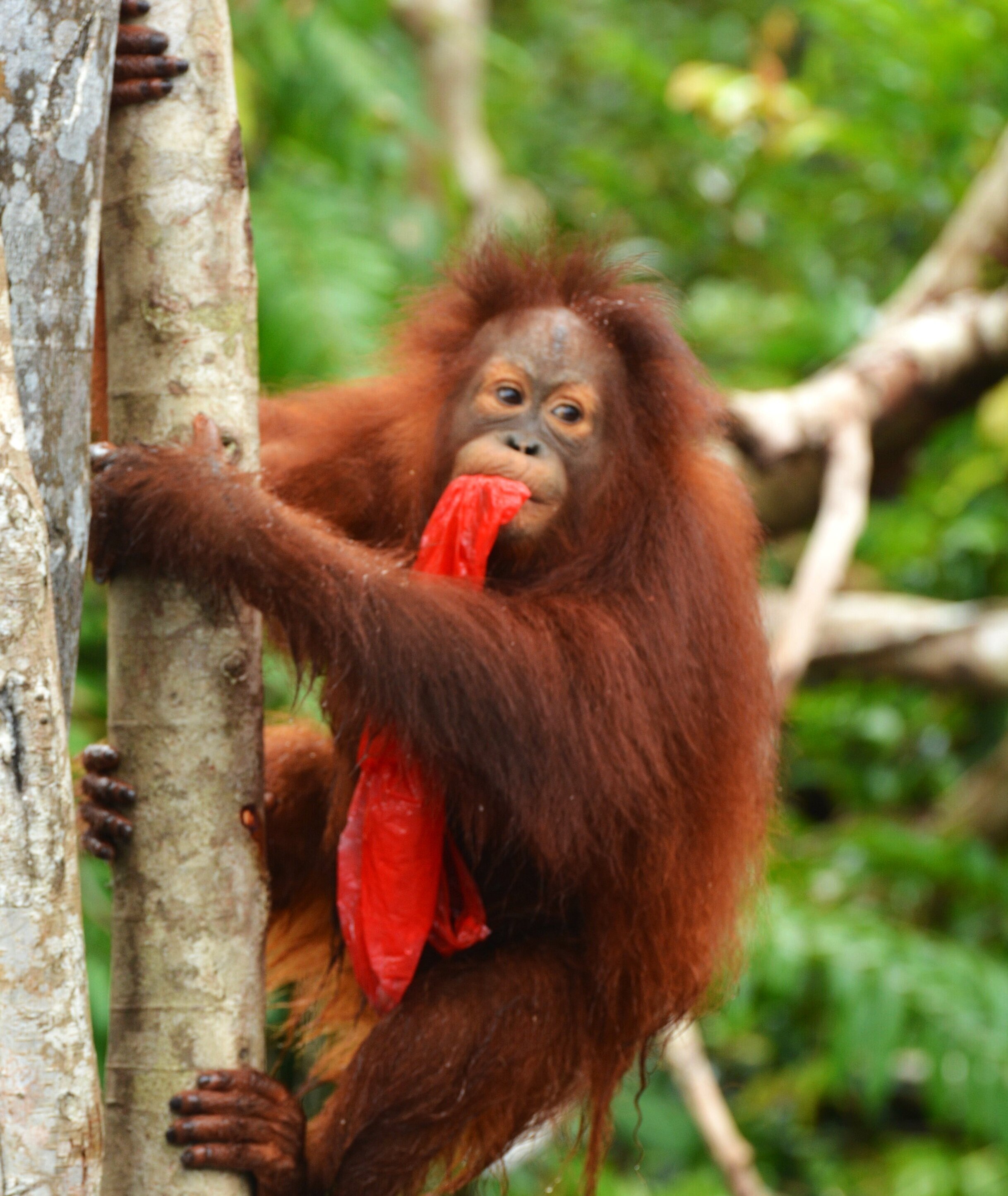
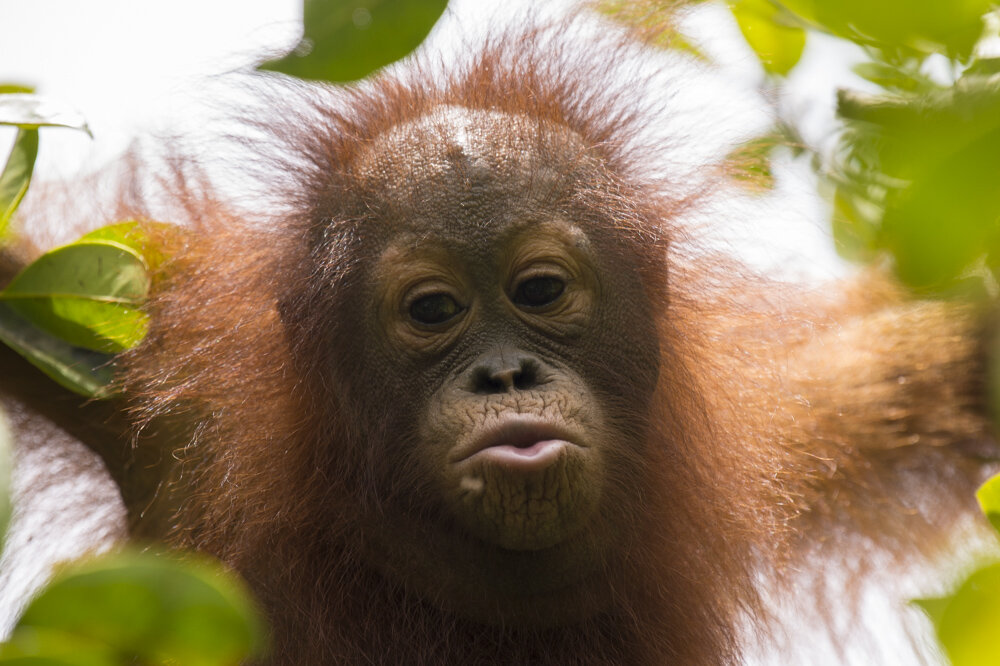
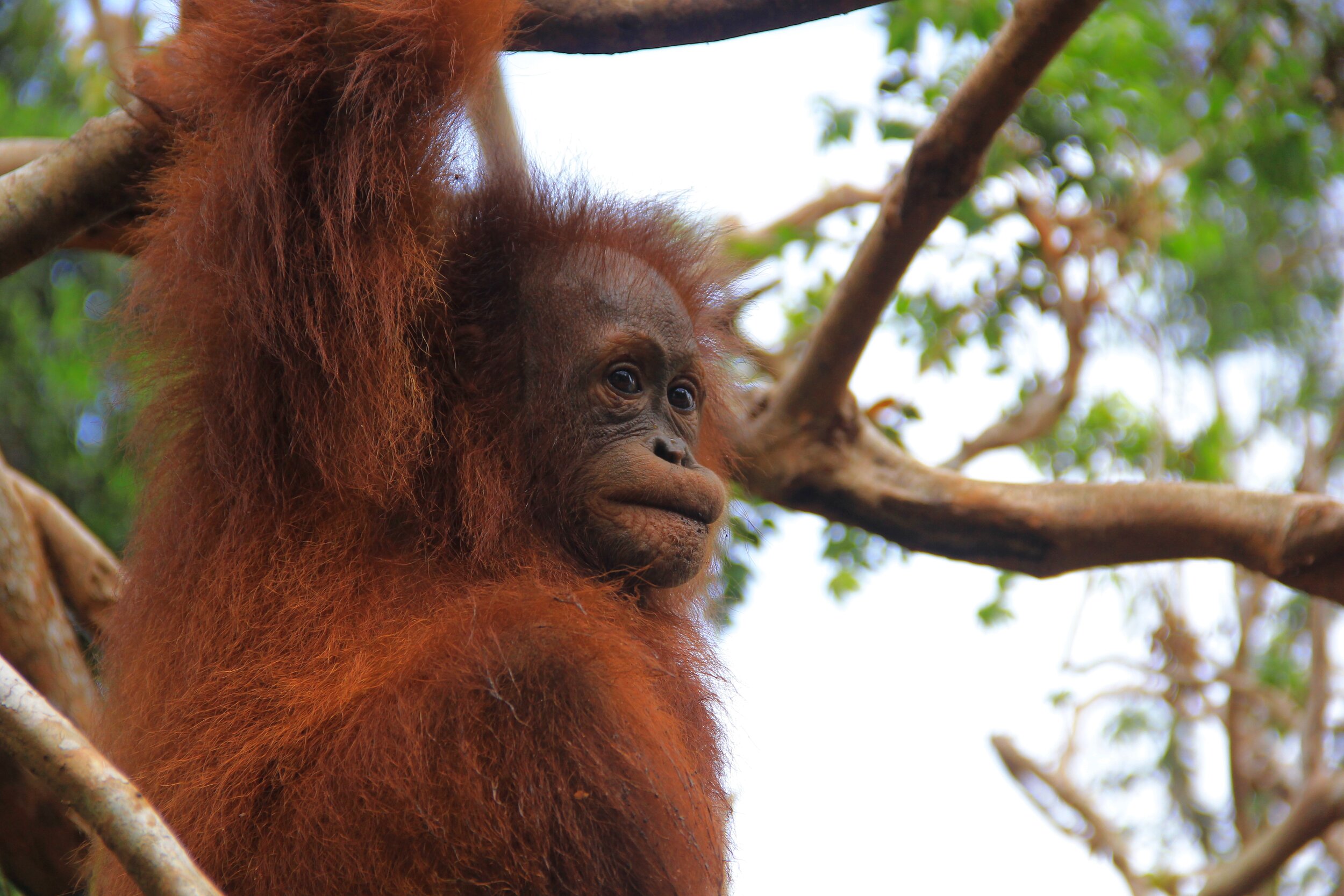
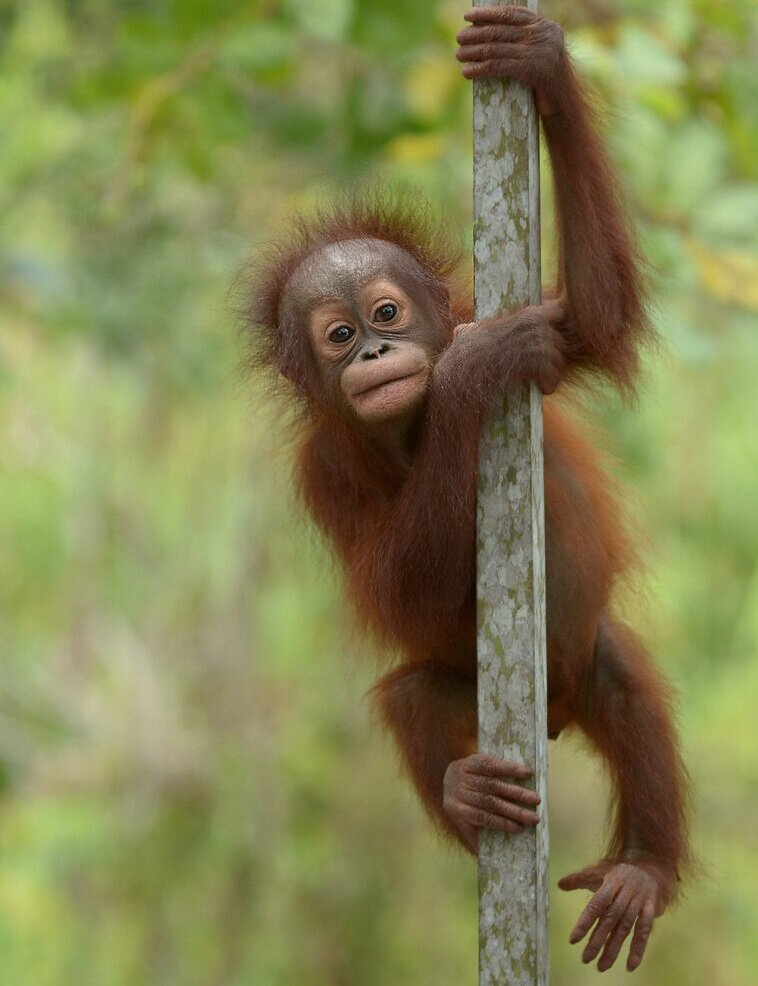
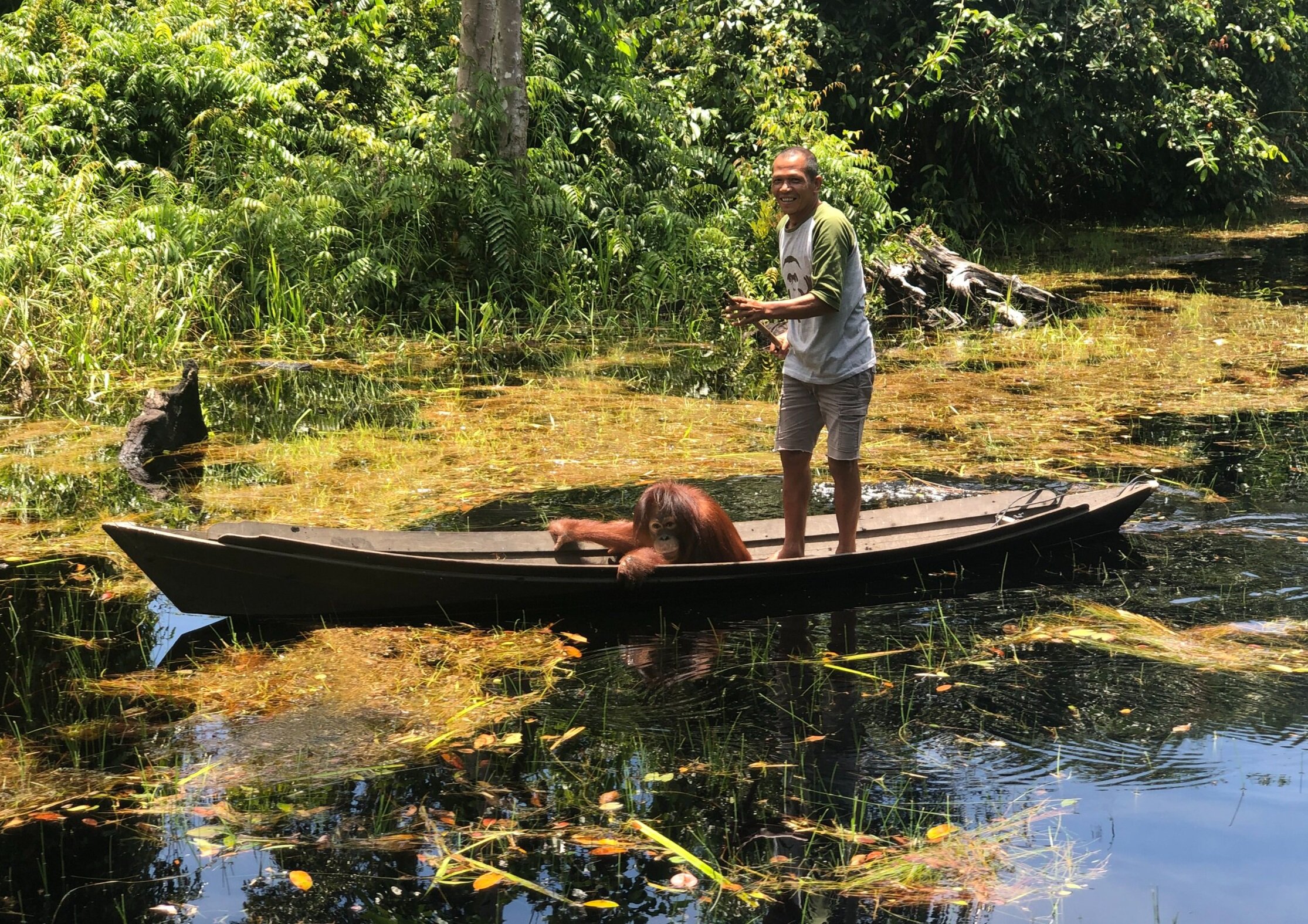
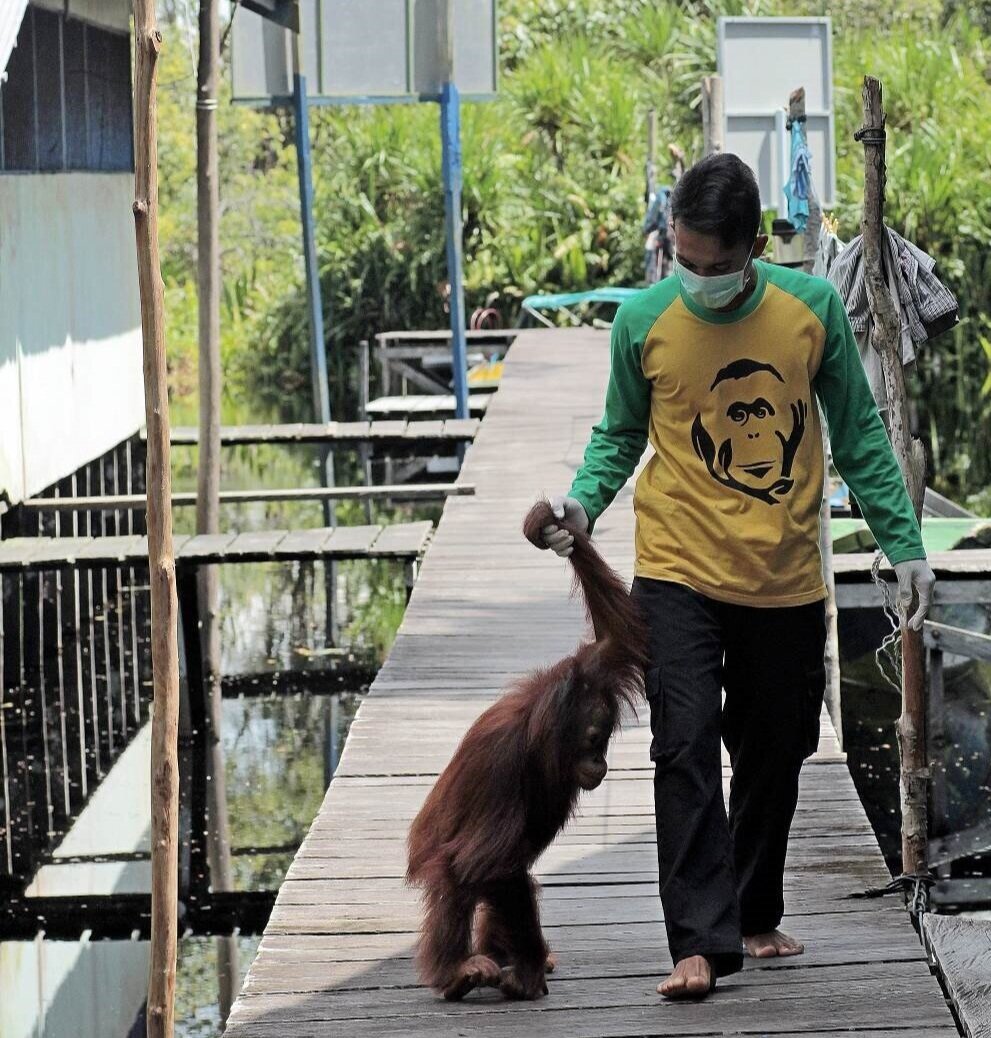
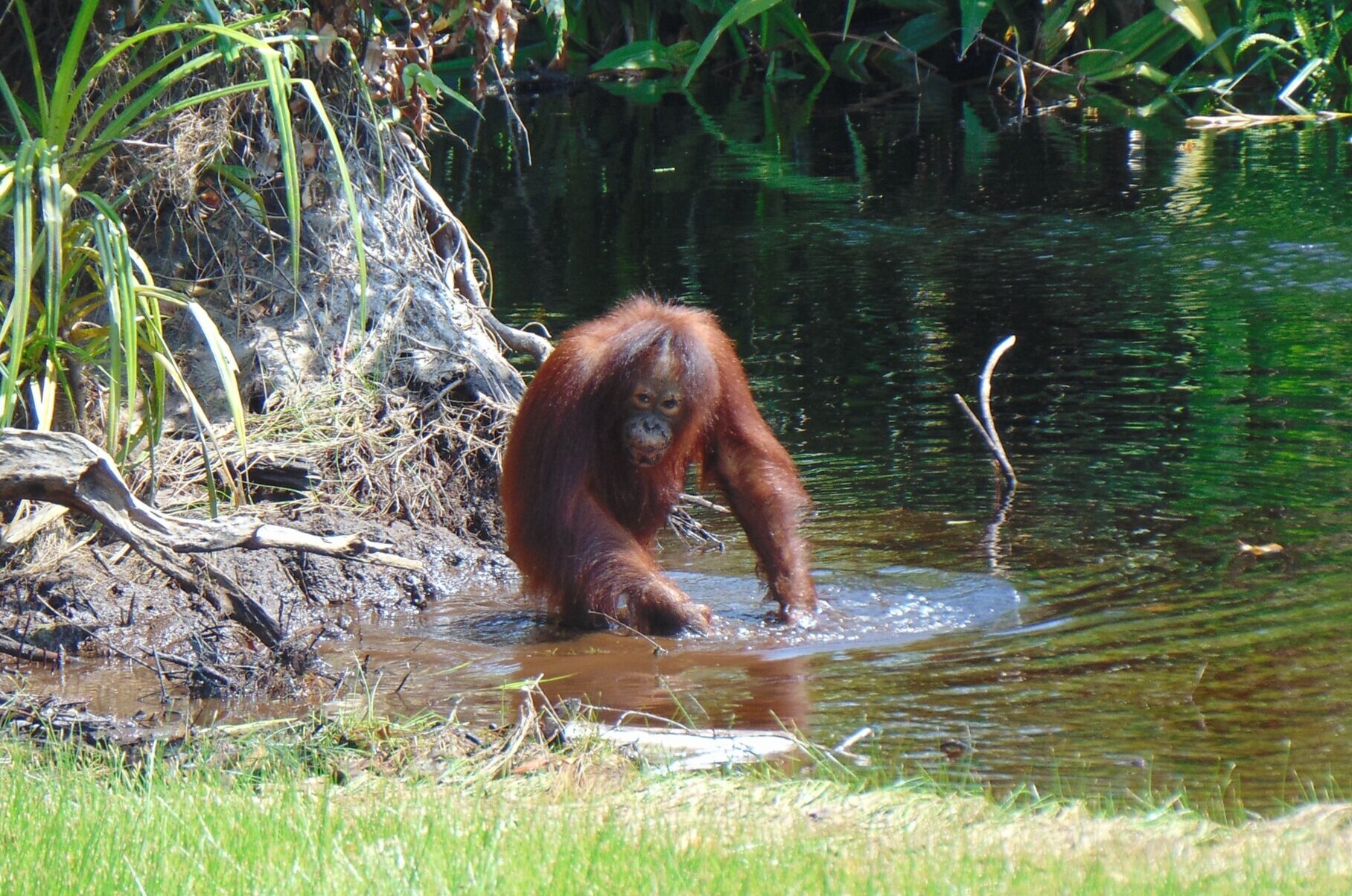
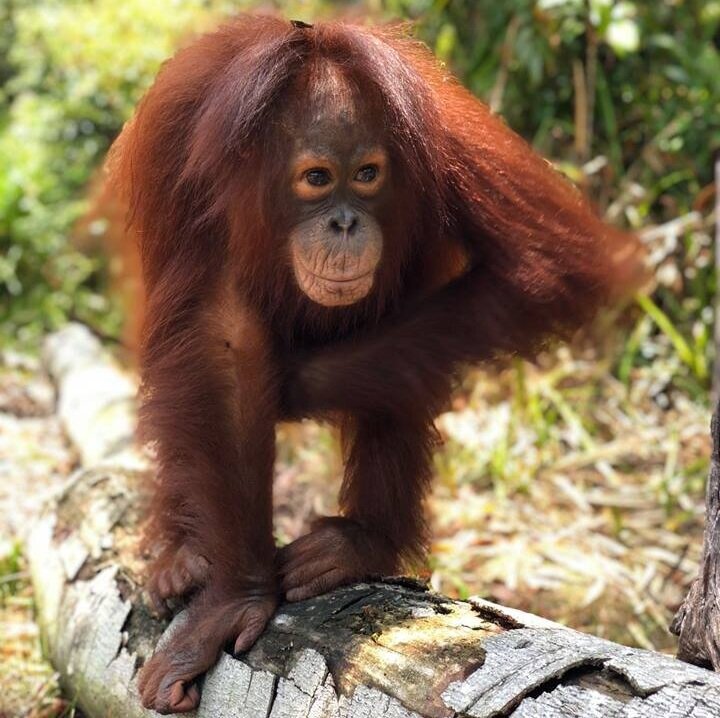
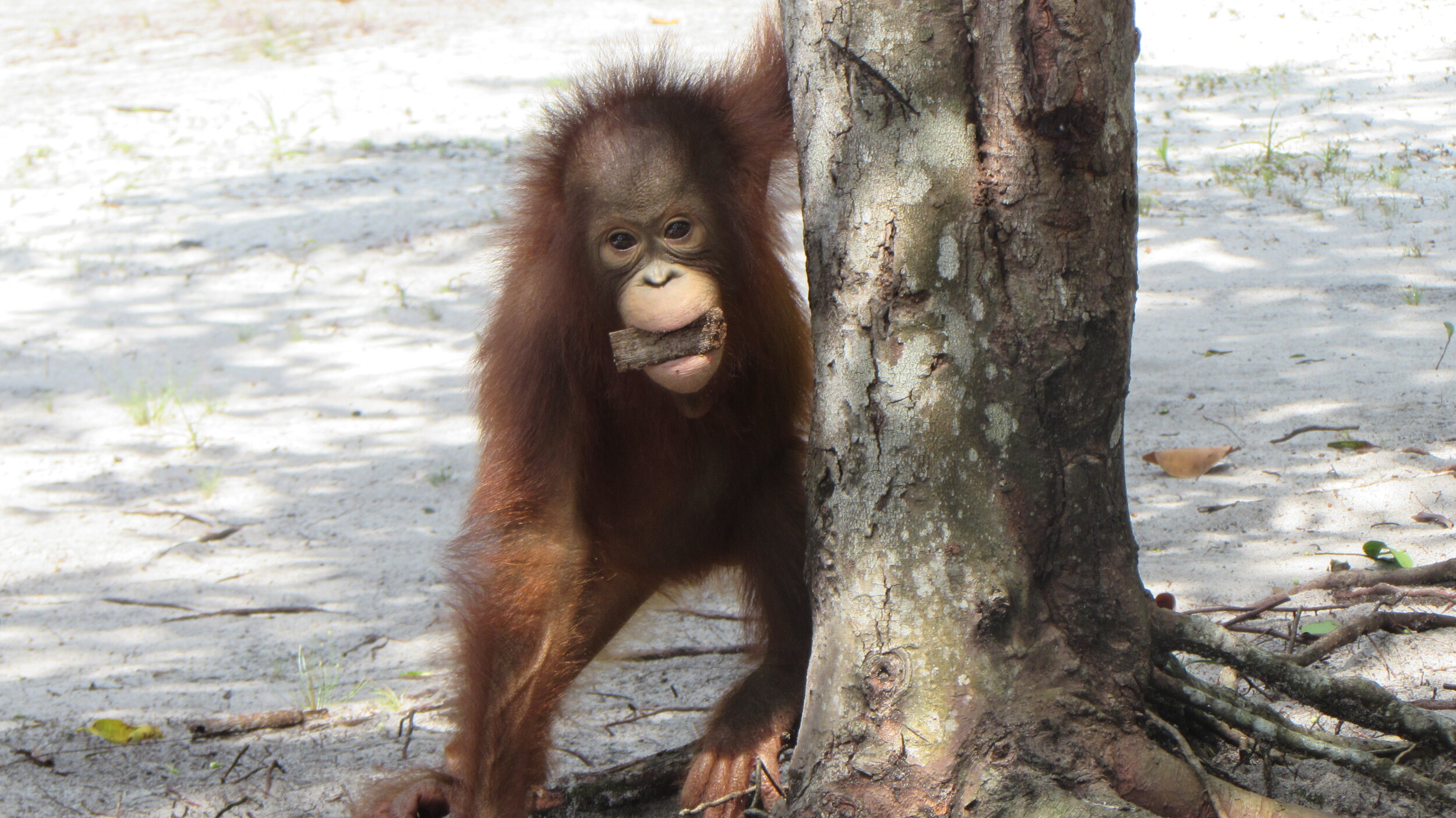
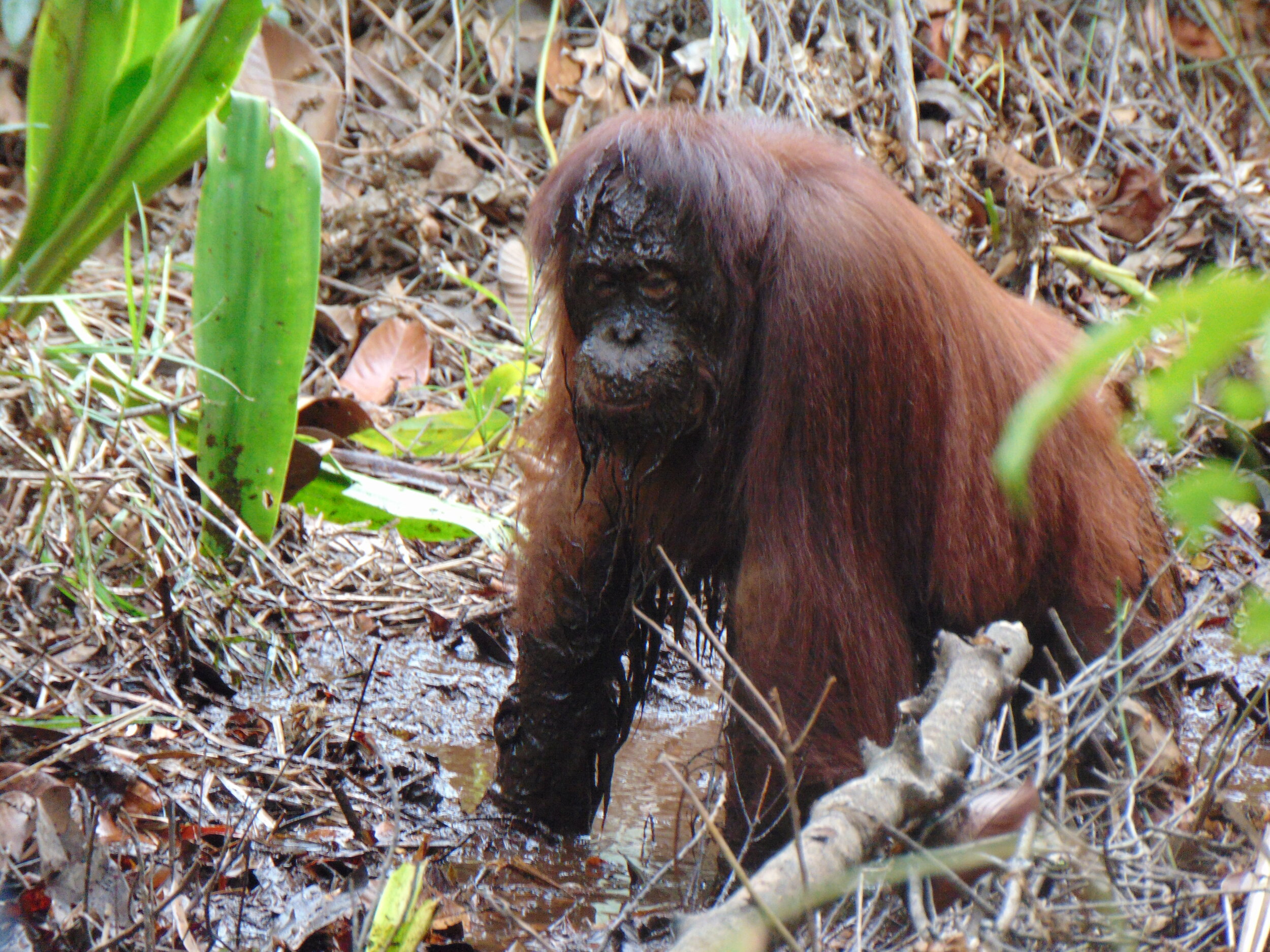
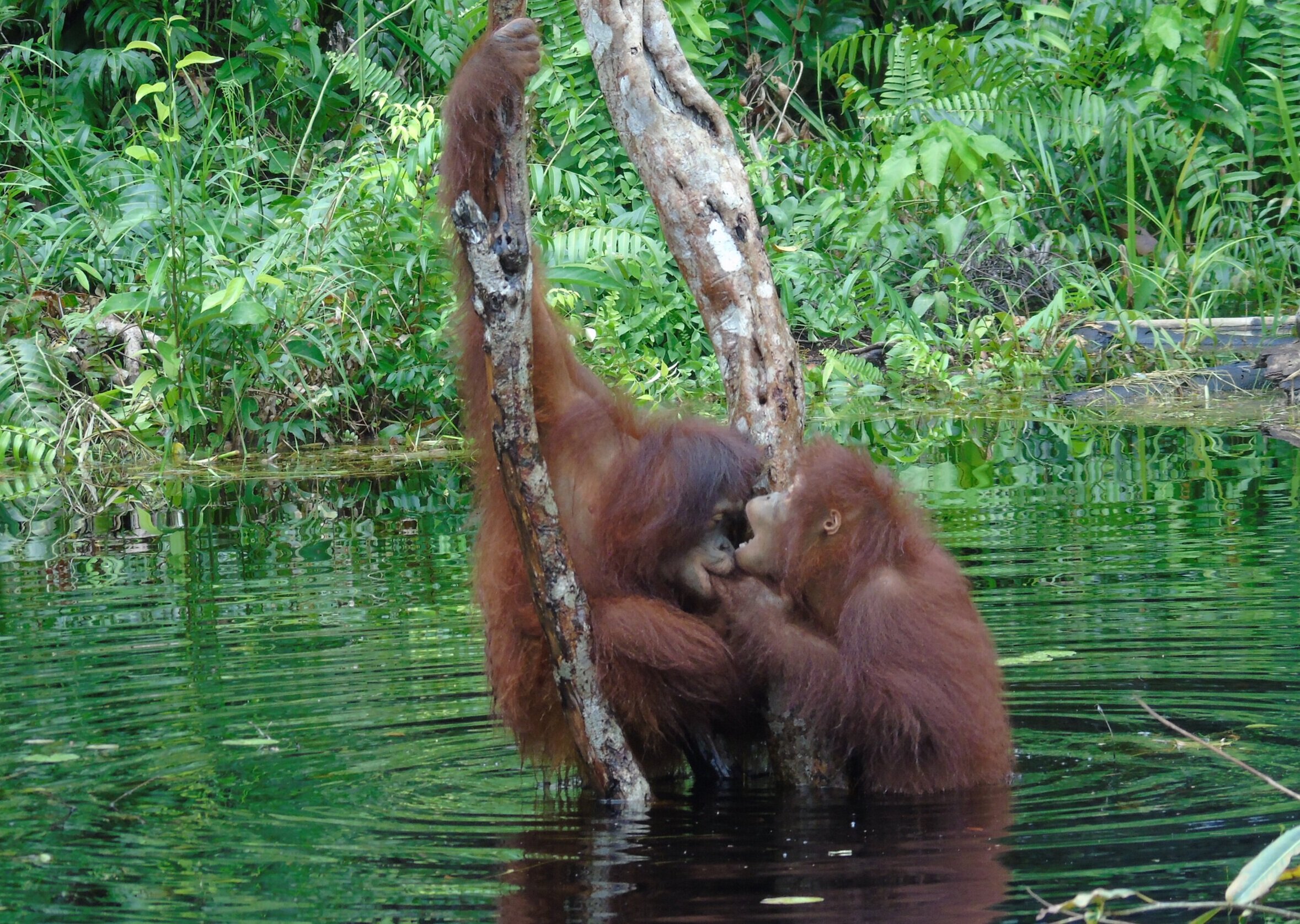
His distinctive character isn’t the only thing that makes him the most notorious of the orangutans in our care. Not only has Okto been the face of the Foundation’s orangutan adoption programme for many years, but he also starred in the Sky and Offspring Film documentary: Monkeys – An Amazing Animal Family. Hosted by Orangutan Foundation patron Patrick Ayree, episode one of this series was released in 2016 and it was a certain young primate’s mischievous antics that really stole the show!
Today, having spent almost seven years within our soft-release programme, we’re thrilled to see that Okto has finally matured into the capable male orangutan we knew he could be. Although from time to time he will still swing around and break branches in the trees, he is now confident exploring the forest independently and able to build sturdy nests to sleep in overnight. With every trip into the forest it becomes more and more difficult to bring him back to camp, a positive sign that he is ready for the wild.
Though we will sincerely miss his energetic presence at camp, our team look forward to releasing this former ‘juvenile delinquent’ into the protected Lamandau Wildlife Reserve very soon. Initially we will continue to monitor his progress outside of camp but are confident he is fully prepared to explore the forest solo.
We would like to thank everyone who has supported Okto by adopting him on his journey to the wild, and are pleased to continue our adoption programme with the youngest male orangutan currently in our care- Adib.


